| Pages in topic: < [1 2 3 4 5 6 7 8 9 10 11 12 13 14 15 16 17 18 19 20 21] > | Off topic: İlginç yazılar Thread poster: Adnan Özdemir
|
|---|
Adnan Özdemir 
Türkiye
Local time: 14:10
Member (2007)
German to Turkish
+ ...
TOPIC STARTER
--Tümü alıntıdır--
A short history of American food (whatever that is)
By Channon Hodge, CNN
Updated 8:39 AM EST, Fri November 27, 2020
—
Your Thanksgiving table may have been smaller this year, but if it was still full of squashes, corn pudding, turkey and cranberry sauce, thank Native Americans – those foods are indigenous. But that apple pie is international – apples are from Kazakhstan and the pie par... See more --Tümü alıntıdır--
A short history of American food (whatever that is)
By Channon Hodge, CNN
Updated 8:39 AM EST, Fri November 27, 2020
—
Your Thanksgiving table may have been smaller this year, but if it was still full of squashes, corn pudding, turkey and cranberry sauce, thank Native Americans – those foods are indigenous. But that apple pie is international – apples are from Kazakhstan and the pie part is from England.
It’s hard to define what “American food” is and yet many historians have tried. Yale Professor Paul Freedman is one of them and last year published “American Cuisine and How It Got That Way.”
“The exuberance of American dining is its saving grace,” says Freedman. “… Despite the fact that many things are, you know, not all that good for you.”
Americans get pretty excited about food, as does much of the world, but historians like Freedman say we actually share some key culinary traits that are uniquely American in origin and we’re not talking about throwing everything in the deep fry. Fast food will always be an American hallmark, even though we’re eating less of it these days, but we’re more than McDonald’s and cheese-in-a-can and we’ve even exported some very American ways of eating. Yes, France. You’ve learned a thing or two from us, too.
To understand what our tastebuds all have in common, let’s look at five key developments in the history of America’s eating habits.
1) The good old days when sugar was healthy
//Historians hold up "American Cookery" by Amelia Simmons as the first real American cookbook, published in 1796. Flip through this one and more at the Michigan State University digital library.///

Up until the late 1800s, people preferred to eat the foods that filled them up. Dairy, meat, hominy, oatmeal and sugar were staples – vegetables, not so much. Vitamins wouldn’t be fully appreciated until the 20th century.
“They didn’t like spices because they think they created indigestion and were a distraction from the actual food,” says Freedman, who noted that spices were considered the “food of the poor.”
//A clam seller in Mulberry Bend, New York, circa 1900. Clams and oysters were cheap and filling and were often sold by African Americans.///
Historian Sarah Lohman says that it wasn’t quite as bland as it sounds. Mary Randolph’s 1824 cookbook, “The Virginia House-Wife,” calls for chili peppers.
“It’s really, really influenced by indigenous cultures and, in particular, by enslaved people who come from the Caribbean, by enslaved people who come from Africa or African descendants,” says Lohman.
2) Food travels around the country
In the 19th century, while New Englanders were eating brown breads and brown stuffing, the South had its pork, molasses, greens, griddled cornmeal and corn breads.
Black cooks had a hand in our cuisine from the very beginning. From South to North, their contribution was so ubiquitous its significance has been long overlooked.
//At left is Angolan-born Antonio, "... one of the first Africans to arrive in Jamestown in 1619." These quilt squares are part of The Museum of Food and Drink's exhibition, "African/American: Making the Nation's Table." The exhibition is closed due to Covid, but the Museum is offering programs and talks online. (Harlem Needle Arts)///

Just one example is the story of ice cream. James Hemmings, Thomas Jefferson’s enslaved chef, traveled with the family to France, learned the art of making ice cream and brought it back to the US along with copper cookware, European-style mac ‘n’ cheese and French fries.
Historian Jessica Harris is lead curator for the exhibition “African/American: Making the Nation’s Table” at the Museum of Food and Drink in New York City. She said other Black chefs traveled early on with aristocrats as they left the South for summer homes in places like Newport. Later Black Pullman operators moved west along with the railroads, bringing their families and their familiar food. After the Civil War, the Great Migration brought Black cuisine just about everywhere.
“It’s about looking at history, looking at culture, looking at any of those things as science through the spyglass of food,” said Harris. “And it’s a great spyglass because it’s one everybody shares.”
Then in the late 19th century, it’s New England’s filling, yet perhaps monochromatic, food that comes to the forefront.
3) The pure joy of home economics class
//A home economics class in Washington D.C. circa 1899.
Johnston, Frances Benjamin///

Scientific ideas around food have always existed, but in the late 1800s, people began to prioritize invisible components of food learning, such as how to avoid illnesses like scurvy, beriberi and pellagra. Vegetables became a bit more important – albeit cooked for long periods of time.
A woman’s kitchen became her laboratory and her cookbooks were her study materials. What was thought of as “nutrition” was incredibly important and yet women couldn’t learn how to cook from Mom, nor did they want to.
“The idea was that you shouldn’t just do everything the way your mother did because that was, first of all, drudgery,” says Laura Shapiro, an historian who writes about women and food. “It was really hard work and it wasn’t modern.”
//Fannie Farmer taught a more exacting and precise way of cooking in Massachusetts at the Boston Cooking School. For example, she was the first to dip flour into a cup and level it with a knife. Bettmann/Bettmann/Bettmann Archive///

Starting in 1890, Fannie Farmer began turning hearty New England dishes into sophisticated meals, though sometimes that meant your plate was all white or all brown. The textbook she wrote later became “The Fannie Farmer Cookbook” and its popularity lasted for decades, until usurped by “The Joy of Cooking” in the 1930s.
Shapiro says Farmer’s writing was rather dry but she did have her fun. Farmer invented the ginger ale salad that congeals canned fruit in gelatin and soda.
Her book came out right as families were moving further away from their home base and spreading out across the country.
“You are this young bride and you have to cook in your new home and you don’t know how,” says Shapiro. “Once you learn, you can do all this wonderful cooking and your husband will be healthy and he won’t become an alcoholic.”
That’s a lot of pressure to put on your meatloaf. Thankfully, Americans got some help when we really didn’t earn it.
4) When we get what we don’t deserve
//1900: An Italian neighborhood street market on Mulberry Street in New York City.
Universal History Archive via Getty///

Immigration, migration and variety in manufacturing are where we start to see America really start to form eating habits that separate us from other countries. While every country in the world has immigration, in America it happened on a large scale and very early on.
Historian Sarah Lohman spent years leading tours and classes about the lives of immigrants for New York City’s Tenement Museum and traveled to 12 different parts of the country for her book, “Eight Flavors: The Untold Story of American Cuisine.”
“At the same time that domestic science is becoming a part of the American food landscape, that’s also when we’re seeing a huge influx of immigrants from Italy and Eastern Europe, particularly Jewish immigrants,” says Lohman.
Lohman says Eastern Europeans brought their love of sour foods, Italians brought on the garlic. Their food changed when the reached America, with Italians in particular opting for foods like olive oil and aged cheeses. Back in Italy, these were expensive exports only, but in the States Italians could afford them and they used them liberally.
//New Year's in Chinatown, New York, circa 1900. The Chinese Restaurant Association says there are more Chinese restaurants in the US than McDonald's, KFC and Wendy's combined.///

That’s also true for Chinese cuisine which spread steadily across the country just as prejudice was growing against Chinese people. Kevin Kim researches the history of Chinese people in the Deep South and is working on a project about the continued displacement of urban immigrant communities for the Smithsonian Anacostia Community Museum.
“One of those contradictions and complexities is that Chinese food in that early period is marked by exclusion,” says Kim. “It’s marked by racism but at the same time there is this hunger for something exotic and yet familiar.”
The Chinese Exclusion Act of 1882 was aimed at keeping out Chinese laborers who came to the US for plentiful jobs, but the Act contained exceptions. Merchants who owned stores and grocery stores were exempt and later on, so too were restaurant owners. The number of Chinese restaurants doubled from the early part of the 19th century to the mid-20th century.
//On the left, an 1880 Daily Arkansas Gazette positive "review" of eating in a Chinese restaurant. On the right, an 1895 ad promoting Chinese cuisine's affordability. The idea of Chinese food as "cheap" is a stereotype that lasts to this day.///

Kim explains that these restauranteurs brought their own Asian flavors and cooking methods but adapted them by growing or using local ingredients. Broccoli wasn’t used in China but appears on Chinese menus here. Chinese cooks living in African American and Caribbean neighborhoods added collard greens or fried chicken to their menus.
Another boom comes when immigration opens up in 1965, bringing people from many parts of Asia. While immigration begins to melt its way into American meals, more variety came as American manufacturing moved like warp speed into a new era.
5) With industrialization comes flavors and more flavors
//Early 20th century magazines from Freedman's collection.///

Processed foods like cake mixes and powdered eggs existed before the great World Wars, but they reached new levels when the wars were over. Innovations like canned and frozen foods that fed troops en masse were still being made at lightning speed and manufacturers needed to find a new market for them.
So, companies focused their attention on women at home. Grocery stores were game: Their produce requires a lot of manpower and much of it ends up getting thrown out, unlike those rows and rows of canned tomatoes.
“The food industry wants you, to this day, to think that cooking is an incredible drag and an imposition on your time,” says Freedman. “Otherwise, you’ll buy potatoes and mash them and they don’t really make a whole lot of money out of your buying potatoes. They make money out of your buying instant mashed potatoes.”
//Kid in a grocery cart circa 1950. There were an average of 14,000 stock-keeping units, or products, in US grocery stores in 1980; 51,000 in 2008; and 33,055 in 2018, according to the Food Marketing Institute.///

Shapiro says manufacturers created the notion that women were always busy, always running out of time. So, they were “creating a world in which every day, every meal was an emergency.”
“Never say that women welcomed it,” says Shapiro, railing against the images portraying happy women in ads for quick mixes. “That is just bullshit. The women put up a huge resistance. The food industry was astonished.”
Decades later as people do start to pack their schedules, those processed foods are still there. But instead of that one can of tomatoes, you now have Italian-style canned tomatoes, Spanish-style canned tomatoes and, even more inexplicably, low-sodium canned tomatoes. Shouldn’t they have been low-sodium to begin with? Who needs high-sodium canned tomatoes?
“Variety comes in to mask the idea that things are processed,” says Freedman. “It kind of distracts attention from the fact that industrial food loses some of its flavor and freshness by the very fact of its being processed.”
American food as it is now
//The MOFAD's New York exhibition "Chow: Making the Chinese Restaurant" explored Chinese cuisine through artifacts, events and food served hot. It was so popular it had to be extended several times.///

Now we eat so many, many things, both processed and fresh, both familiar and exotic. We love it all as evidenced by the massive popularity of food television, food magazines, food museums and food exhibitions. That’s a worldwide phenomenon.
“Most people like to eat and like to come together around food,” says Catherine Piccoli, Acting President of the Museum of Food and Drink. “But it also is something that allows us to learn about one another.”
Freedman found through his research that in the mid-20th century, the sheer variety of flavors in our supermarkets astonished people visiting from all over the world. Now, that variety is found everywhere, but historians argue it started in America first. Americans have long been willing to try new things, both in the supermarket and while eating out.
“A hallmark of American cuisine is variety and variety includes exuberance,” says Freedman. “Americanization has come to the world, not by McDonald’s, but by eclecticism.”
__________________
Yazının yeri: https://edition.cnn.com/travel/article/what-is-american-food-history/index.html
▄▄▄▄▄▄▄▄▄▄▄▄▄▄▄▄▄▄▄▄▄▄▄▄▄▄▄▄▄▄▄▄▄▄▄▄▄▄▄▄▄▄▄▄▄▄▄▄▄▄▄▄▄▄▄▄▄▄▄▄▄▄▄▄▄▄▄▄▄▄
The Influence & Roots of American Cuisine
Maria 06/22/2021
It's hard to state one exact origin of the cuisine of any country because everyone has had different influences and origins. There are many origins of traditional food in America and today you will learn about the history of our favorite dishes like pumpkin pie and hot dogs.
This article is for all the cooks in the world, for anyone who wants to learn about the origins of American cuisine, for people interested in knowing more about traditions and food, and more.
If you ever wondered what exactly is traditional American food, continue reading because we will explain everything about American cuisine. Starting from the Native Americans, the colonization and the changes of diet during that period, the end of the colonial era, and the modern popular dishes brought to us by immigrants.
American cuisine has a fascinating history and learning about it will not only be instructive but also fun! Go check our guide to cooking in the United States to learn more about the subject.
Native American origins
It's hard to point at a region or area in the United States that doesn't have some sort of Native American influence.
The Native Americans were nomads living off the land across the country before the 17th century. Since they were moving around so much their diet was ever-changing. However, many of our favorite recipes originated in this period of time.
The base of Native American food was corn, beans, and squash. As for meat, the Native American diet was based on deer, elk, bison, rabbits, and hare of every kind.
The Cherokee of the Southern Appalachians used blowguns made of an indigenous type of bamboo to hunt squirrels.
The geographical location played an important role in their diets because they would live off the land they were in. For example, tribes located in the Southern region of the country didn't have much access to bodies of water, therefore, fish and crustaceans weren't part of their dishes and diets.
Finally, we must consider their cooking style because it has also influenced the way we cook our foods. Americans like fried foods, and it all comes from the way the Native Americans used to prepare their meals.
Native Americans lacked pottery and they used to heat rocks and then prepare the food on the heated rocks. They also liked to grill meat and vegetables. In some regions, they created adobe ovens to bake bread and other meals.
Colonial period
When the English came to North America, they started to plant crops and grow the food they would normally eat in England. However, they couldn't replicate the dishes exactly as they would have them in England because they were unable to find some things.
The colonialists replicated as much of the English diet and recipes as they could but also introduced local animals and vegetables from different regions in America. This is when a fusion of American and English cuisine first happened.
For example, wheat was an important grain for the English diet because they used it to bake bread back in England. But wheat was almost impossible to grow in America and the idea of importing it wasn't yet a productive form of commerce. The English then replaced wheat with corn and cornmeal.
There was also some French cuisine influence and other factors that contributed to the food traditions in different areas. Seasons and weather are always a big factor and they definitely influenced the dishes, ingredients, and culinary world during the colonial time in the Americas.
During the early period of colonization, alcohol proved to be a hard drink to get a hold of because they didn't have the ingredients for making it. The alcohol that became proliferated in the center regions of the country was whiskey because they had access to corn and rye.
History shows us that the culinary world in the northern colonies had less agricultural diversity compared to the southern colonies. This would also create an impact on the future of American cuisine and shape our traditions as we know them today.
Post-colonial cuisine
The decades after independence marked key milestones in American cuisine. During the 18th and 19th centuries, Americans developed many new foods. Some traditional meals and dishes became popular throughout the country but had little international appeal. For example, peanut butter (a core ingredient of the peanut butter and jelly sandwich) and deep-fried foods.
However, other dishes are beloved by people across the world, such as popcorn, hamburgers, pancakes, hot dogs, cola, fried chicken, cornbread, muffins, pie, and brownies.
During the 19th century, the American farmhouse became a staple throughout the country. Families would own land and produce their own food and local stores would sell general things like salt, coffee, sugar, or baking soda.
Apples became popular across the country and that's how apple cider, vinegar, and pie were born. Typical farmhouse fare included corn, stewed tomatoes, fried chicken, boiled beans and beets, chicken and dumplings, simmered green beans, fried ham, potatoes, and coleslaw made of shredded cabbage.
During the 20th century, pork became a staple of the rural diet through the Southern and Midwestern United States.
During this period many of the regional foods started to spread across the country thanks to the industrial revolution. It is now possible to transport the food across the land and the cost of production was worth it. Therefore, many regional staples became the country's favorites.
Immigrants and their influence
International cuisine was introduced in the United States after World War I (1920's) with Mexican and Italian food. As the world started to become globalized, so did the food. American food started to get influenced by Chinese, African, Greek, Jewish, Russian, and other cuisines.
As the United States became a world power, people from around the world strived to come to America and fulfill their "American dream". When people started to come the fastest way to start making a living was by establishing a restaurant of their traditional food. This is why New York has such a massive variety of restaurants and food, many immigrants who traveled there started their own restaurants.
New York has become a hub for international food. You can find African, Latin American, Arab, Asian; and all kinds of variety like vegan, gluten-free, dairy-free, and more.
To this day immigration to the United States continues and with it, more international food is introduced to the country. Now you can find fusion cuisine from different places. Like Mexican-Korean, French- Italian, or Chinese-African fusion.
The food market continues to evolve and grow and America is lucky to have it happen in its own land!
____________________
Yeri: https://www.superprof.com/blog/usa-food-roots/
▄▄▄▄▄▄▄▄▄▄▄▄▄▄▄▄▄▄▄▄▄▄▄▄▄▄▄▄▄▄▄▄▄▄▄▄▄▄▄▄▄▄▄▄▄▄▄▄▄▄▄▄▄▄▄▄▄▄▄▄▄▄▄▄▄▄▄▄▄▄
Kleine Geschichte, wie aus »ekelhaften Fressern« Feinschmecker wurden
Yazı: Richard Hemmer ve Daniel Meßner
22 Şubat 2023
Im 19. Jahrhundert war Essengehen in Amerika keine Gaumenfreude, klagte damals die Prominenz. Doch dann erfanden zwei Schweizer dort die Haute Cuisine, wie unsere Kolumnisten erzählen.
Charles Dickens, einer der wohl berühmtesten und beliebtesten Schriftsteller des viktorianischen Englands, besuchte in den 1840er Jahren zum ersten Mal die neue Welt. Anfangs war er begeistert, denn auch dort wurde er wegen seiner Romane wie »Oliver Twist« oder »Große Erwartungen« gefeiert. Doch schon bald, so schrieb er es später in seinen Büchern über die USA, stießen ihm einige Dinge übel auf. Eines davon: die fehlende Esskultur. Gewohnt, in den feinsten Restaurants London zu speisen, mokierte er sich über die »Haufen unverdaulicher Masse«, die die Menschen in Amerika zu sich nehmen würden.
Dickens (1812–1870) war mit dieser Einschätzung nicht allein. Amerikaner, die in den Genuss europäischer Küche kamen, ging es ähnlich. Zum Beispiel James Fenimore Cooper (1789–1851), Verfasser der berühmtesten Abenteuerromane seiner Zeit und einige Jahre Konsul in Lyon, vermerkte nach seiner Rückkehr in die Heimat, dass die Amerikaner die »ekelhaftesten Fresser aller jemals bekannten zivilisierten Nationen« seien.
Der kanadische Historiker Harvey Levenstein von der McMaster University, der sich viel mit der Entwicklung der US-Küche beschäftigt hat, legt noch einen drauf: Die doch sehr fleischlastige Küche, schreibt er, habe in den ersten vier oder fünf Jahrzehnten des 19. Jahrhunderts Verstopfung zum nationalen Fluch in Amerika gemacht.
Aber nicht nur was, sondern auch wie gegessen wurde, war zu jener Zeit noch weit von europäischen Gepflogenheiten entfernt. Während Jahrzehnte zuvor im Fahrwasser der Französischen Revolution auch ein gastronomischer Umschwung folgte, war es Anfang des 19. Jahrhunderts in den USA nicht mal möglich, herkömmliche Gerichte in einem halbwegs passablen Ambiente zu sich zu nehmen. Restaurants waren noch Zukunftsmusik.
Was Charles Dickens damals allerdings noch nicht wusste: Ein Brüderpaar aus der italienischen Schweiz war im Begriff, all das zu ändern.
Wie zwei Brüder die US-Gastronomie retteten
Es begann mit Giovanni Del-Monico, der zu Beginn des 19. Jahrhunderts eine recht steile Karriere als Händler zu See machte. Rasch arbeitete er sich vom einfachen Seemann zum Kapitän hoch, und wie so viele vor und nach ihm, erkannte er die Möglichkeiten, die ihm ein Land wie die USA boten. Er beschloss, gemeinsam mit seinem Bruder Pietro, einem Konditor im schweizerischen Bern, sein Glück in New York City zu versuchen. Ihre Idee: Giovanni kannte sich mit Wein aus, Pietro mit Gebäck – zusammen würden sie die Gastronomie der neuen Welt erobern.
Und so eröffneten sie im Jahr 1827 in der William Street nahe »The Battery«, einem der ältesten Parks Manhattans, ein kleines Geschäft. Weil auf das Schild ihr Name versehentlich »Delmonico's« geschrieben wurde, beschlossen die beiden gemäß einer Familienlegende, einfach gleich ihren Nachnamen zu ändern. Wahrscheinlich um etwaigen Ressentiments gegen Einwanderer entgegenzuwirken, amerikanisierten sie auch ihre Vornamen auf John und Peter.
Im Angebot hatten sie flaschenweise Wein und Gebäck – und schnell avancierte das kleine Geschäft zu einem Lieblingsort vieler und all jener, die die europäische Küche vermissten. Zum Erfolg trug bei, dass der Laden stets außergewöhnlich sauber war, die Zutaten überdies immer frisch und von höchster Qualität.
Der Erfolg zahlte sich aus, und so eröffneten sie im Jahr 1837 schließlich eine Lokalität, die tatsächlich als Restaurant bezeichnet werden konnte. Die Quellen sind sich wie so oft nicht ganz einig, aber es ist gut möglich, dass dieses »Delmonico's« das erste Restaurant überhaupt in den USA war.
Das Restaurant ähnelte jenen Etablissements in Frankreich, die zuerst diese Bezeichnung erhalten hatten. Auch die angebotene Küche war französisch. Und weil die Delmonicos gut zahlten, lockten sie bald die besten französischen Köche nach Manhattan.
Das dreigeschossige Gebäude – unter den Angestellten als »The Citadel« bezeichnet – verfügte nicht nur über edle Parkettböden und private Bereiche für den ungestörten Genuss, sondern auch über einen Weinkeller, der Platz für 16 000 Flaschen bot. Fortan kredenzten die Brüder dort das beste Essen der Stadt, wahrscheinlich sogar der gesamten USA.
Berühmte Gäste, berühmte Köche
So richtig bekannt wurde das Lokal allerdings erst ab den 1840er Jahren. Lorenzo Delmonico, der Neffe der beiden Brüder, übernahm allmählich die Leitung des Lokals und erwies sich als einer der talentiertesten Restaurateure seiner Zeit.
In »The Citadel« ging bald alles ein und aus, was Rang und Namen hatte. Dann, im Jahr 1862, gelang Lorenzo Delmonico ein Coup, der nicht nur das Restaurant, sondern auch die gastronomische Landschaft der USA nachhaltig verändern sollte. Er schaffte es, den französischen Koch Charles Ranhofer (1836–1899) an Bord zu holen. Der mit großem weißem Schnurrbart und beeindruckender Statur ausgestattete Ranhofer übernahm die Küche des »Delmonico's« und hinterließ bleibenden Eindruck bei den Gästen.
Während des seit 1861 tobenden Amerikanischen Bürgerkriegs wurde ein Bankett zu Ehren Russlands abgehalten – das Land hatte die Union von Anfang an unterstützt. Es muss eines der beeindruckendsten Gelage gewesen sein, die Manhattan bis dahin gesehen hatte. Allein die ersten vier Gänge umfassten 31 Gerichte, es folgten 21 Desserts und 14 »pièces montées«, also Skulpturen und Tableaux aus Zucker.
Nach dem Ende des Bürgerkriegs erlebte das »Delmonico's« seinen absoluten Höhepunkt. Es wurden zehn neue Standorte eröffnet, allerdings waren zu allen Zeiten nie mehr als vier Restaurants gleichzeitig aktiv. Das sollte die einwandfreie Qualität und den Service garantieren. Das wiederum spülte Geld und viele bekannte Gesichter in die Restaurants. Beinahe alle US-Präsidenten jener Zeit, ferner Mark Twain, Napoleon III. und Nikola Tesla sollen im »Delmonico's« gespeist haben. Schließlich, im Jahr 1868, besuchte der eingangs erwähnte Charles Dickens das Lokal.
Nachdem eigens für ihn ein Bankett ausgerichtet worden war, das Dickens an die besten Restaurants Europas erinnerte, ließ er in einer Rede verlauten, dass sich seine Meinung über die USA nun komplett geändert habe. Er ging sogar so weit zu sagen, dass sein Lob fortan in jede seiner früheren Publikationen als Anmerkung eingefügt werden müsse. Die Adelung Amerikas war wohl in erster Linie auf das »Delmonico's« und seinen Einfluss auf die neue Esskultur – zumindest für jene, die es sich leisten konnten – zurückzuführen.
Die Prohibition brachte das Ende
Bis zum Ende des 19. Jahrhunderts sollte das »Delmonico's« der Inbegriff des »fine dining«, der besten französischen Küche außerhalb Frankreichs, bleiben. Erst die Einführung der so genannten Lobster Palaces, großer und prunkvoll, aber geschmacklos eingerichteter Partyrestaurants, gruben dem »Delmonico's« langsam die Kundschaft ab. So gut der Service und die Qualität der Speisen auch war, das etwas zu seriöse Gehabe entsprach nun nicht mehr dem Zeitgeist.
Erschwerend kam Anfang des 20. Jahrhunderts hinzu, dass die Qualität des Managements nachließ. Als im Jahr 1904 zum ersten Mal kein Familienmitglied das Restaurant führte, fing sich die Familie an zu streiten, wie das Lokal ausgerichtet werden sollte. Mit dem Beginn des Ersten Weltkriegs, der die Menschen sparsamer werden ließ, häuften sich die finanziellen Probleme. Ein Weinkeller, gefüllt mit 16 000 Flaschen, war ein kostspieliges Unterfangen.
Den Todesstoß gab dem »Delmonico's« schließlich die Prohibition. Just am 17. Januar 1920, jenem Tag, an dem das Alkoholverbot in Kraft trat, verkaufte die Familie den letzten Standort in der 44th Street. Sie hatte wohl schon geahnt, dass man französische Küche nicht lange ohne Weinbegleitung anbieten konnte.
Und so, wie Paul Freedman in seinem Buch »Ten Restaurants That Changed America« erklärt, wurde am 21. Mai 1923 im »Delmonico's« die letzte Mahlzeit serviert. Angeblich gab's zum Essen Mineralwasser.
Obwohl das ursprüngliche Restaurant aufhörte zu existieren, wurde es im Lauf des 20. Jahrhunderts immer wieder neu eröffnet. Es war dann vor allem für seine Steaks beliebt. Die französische Küche, die jahrzehntelang serviert wurde, lässt sich aber glücklicherweise heute noch nachkochen. Denn Charles Ranhofer, der bis in die 1890er Jahre die Küche leitete, veröffentlichte 1894 »The Epicurean«, ein enzyklopädisches Kochbuch, das neben 3000 Rezepten auch Menüvorschläge und eine Weinlehre enthält. Und darin findet sich eines der berühmtesten Gerichte, das angeblich 1860 für ein Stammkundin des »Delmonico's«, Mrs. LeGrand Benedict, erfunden wurde: Eggs Benedict.
___________________
Richard Hemmer
ist Historiker und Podcaster. Er lebt in Wien.
---
Daniel Meßner
ist Historiker und Podcaster in Hamburg.
Yeri: https://www.spektrum.de/kolumne/hemmer-und-messner-erzaehlen-wie-delmonicos-das-fine-dining-erfand/2112219
[Edited at 2023-02-23 15:16 GMT] ▲ Collapse
| | | | Adnan Özdemir 
Türkiye
Local time: 14:10
Member (2007)
German to Turkish
+ ...
TOPIC STARTER
--hepsi alıntı--
A Frontal Assault on Democracy
How a Covert Firm Spreads Lies and Chaos Around the World
Yazı: Christo Buschek, Maria Christoph, Jörg Diehl, Roman Höfner, Heiner Hoffmann, Max Hoppenstedt, Roman Lehberger, Ann-Katrin Müller, Frederik Obermaier, Bastian Obermayer, Marcel Rosenbach, Thomas Schulz und Wolf Wiedmann-Schmidt
DER SPIEGEL 8/2023
20.02.2023, 12.26 Uhr-- The article you are readin... See more --hepsi alıntı--
A Frontal Assault on Democracy
How a Covert Firm Spreads Lies and Chaos Around the World
Yazı: Christo Buschek, Maria Christoph, Jörg Diehl, Roman Höfner, Heiner Hoffmann, Max Hoppenstedt, Roman Lehberger, Ann-Katrin Müller, Frederik Obermaier, Bastian Obermayer, Marcel Rosenbach, Thomas Schulz und Wolf Wiedmann-Schmidt
DER SPIEGEL 8/2023
20.02.2023, 12.26 Uhr-- The article you are reading originally appeared in German in issue 8/2023 (February 18th, 2023) of DER SPIEGEL.
______________________________________
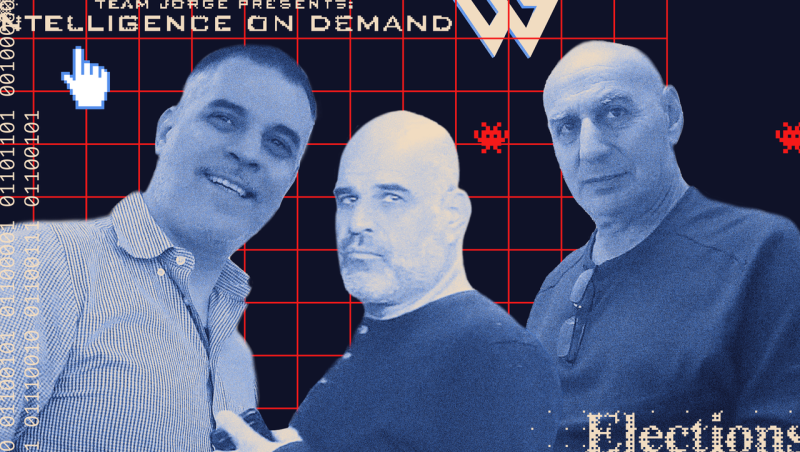
Former Israeli agents have apparently manipulated nearly three dozen elections. Their clients: power-hungry politicians and wealthy businessmen. They are part of a rapidly growing global disinformation industry in which Russia is far from the only player.
By Christo Buschek, Maria Christoph, Jörg Diehl, Roman Höfner, Heiner Hoffmann, Max Hoppenstedt, Roman Lehberger, Ann-Katrin Müller, Frederik Obermaier, Bastian Obermayer, Marcel Rosenbach, Thomas Schulz und Wolf Wiedmann-Schmidt
After months of false leads, traps and hide-and-seek games, a promising clue finally surfaces. It leads into the barren Israeli hill country, to an ugly planned community halfway between Tel Aviv and Jerusalem. A faceless office center is located there squeezed between two highways, its entrance hidden. We make our way through the underground parking lot and up to the third floor. There's no sign on the security door or notice of any kind. Inside are three men, all over 50, all with long careers as agents or military servicemen, shadowy figures who use cover names and don't officially exist.
"We are nothing," says one of them. He calls himself Jorge, a man as cautious as he is dangerous. He doesn't know that he's speaking to journalists or that hidden cameras are running. "We run a different kind of intelligence service," Jorge says. And they have a specialty, he says: Elections.
Going by his own statements, his covert unit has manipulated 33 national votes: with faked scandals, campaigns of lies, influenced votes and other dirty tactics. Once you start looking, indications of such manipulation can be found in many spots around the world - in countries like Indonesia, Nigeria and Bosnia. "We have a team in Greece and a team in the Emirates," Jorge says. In the conference room, documents flicker across a large screen on the wall, full of information about people, campaigns and the places where the men either were or still are active.
One of the folders is called "Kenya." A "good example," says Jorge. Kenya elected a new president last summer. For years, the country had been known as one of the most stable democracies on the continent, but now there is talk of election fraud, high-ranking government officials have been hacked and alleged whistleblowers are spreading blatant lies. Many in the country no longer know what is true and what is false. Later, the Israelis will give a live demonstration of how they apparently penetrated the email account of a powerful Kenyan politician.
They are scenes straight out of a Hollywood thriller. The main characters call themselves "Team Jorge," a group of amoral disinformation peddlers named after their leader's codename. His real name: Tal Hanan. He used to be a special forces operative in the Israeli defense forces, a counter-terrorism specialist and military instructor. Jorge is also an ex-liaison officer to the United States Navy's 6th Fleet, with close links to American security agencies.
Stills from a video recording of a Team Jorge sales pitch for their services
Stills from a video recording of a Team Jorge sales pitch for their services
What Jorge and his team offer are tailored frontal attacks on the heart of democracy. They manipulate what are meant to be free elections, with those who can afford their services increasing their chances of victory. And here, morality counts as little as the law. The main thing is that the money is right. Team Jorge says it charges up $15 million to manipulate an election. Hanan, alias Jorge, says he counts around a half dozen intelligence agencies among his clients.
The methods are apparently as ruthless as they are illegal, and include hacking, slander and forgery. Anything goes as long as the truth is concealed and success is likely. The operation is reminiscent of Cambridge Analytica, the notorious company that scraped Facebook user data in an attempt to influence the 2016 American election campaign in favor of Donald Trump. Indeed, there were apparently even links between Team Jorge and the scandal-plagued and now-defunct British company. But the Israelis appear to be even more lacking in scruples and operate with even greater secrecy - and have managed to avoid detection for more than 20 years.
Their cover had been so good that - until now - their existence had only been known within exclusive circles, including power-hungry politicians, despots and rich business people, primarily in Southeast Asia, Latin America and Africa. At least one European intelligence service had Hanan in its sights at one point, but apparently took no action.
It is only now that Team Jorge's activities have been uncovered, following months of global research by the non-profit investigative journalism organization Forbidden Stories. Among the media organizations participating are DER SPIEGEL, The Guardian, Le Monde, ZDF, Der Standard, Die Tages-Anzeiger and Die Zeit. The starting point was the joint Story Killers project, which sought to quantify the enormous scale of disinformation, propaganda and cyberattacks.
The project's research has revealed that Team Jorge may be the most dangerous mercenary force in an opaque world that has long operated under the radar. But it is by no means the only one. In recent years, a rapidly growing disinformation industry has emerged, with dozens of companies around the globe working specifically to bend the truth to suit their clients. Its mercenaries for hire will stop at almost nothing: They manipulate elections, sabotage politicians, put whistleblowers out of business – and they can even shake the very foundations of entire countries. Journalists and activists have also been the repeat targets of their harassment. The smear campaigns have sometimes even resulted in murders.
The actors behind such campaigns mostly remain in the shadows, their motives hidden, but the trails lead in many directions – to corporate headquarters, to capitals. To Moscow, Beijing, New Delhi, Riyadh and further around the world, to Washington, Berlin and Brussels.
Ties to Russia popped up repeatedly. Troll armies controlled by the Kremlin and information warriors with the Wagner Group mercenary force spread lies, distort facts and create alternative realities. Their influence is particularly strong in Germany, with few other countries in the West being flooded with as many conspiracy theories from Russia.
"You just have to raise enough questions, spread enough dirt, plant enough conspiracy theorizing that citizens no longer know what to believe."
Former U.S. President Barack Obama
Officials with the Office for the Protection of the Constitution (BfV), Germany's domestic intelligence agency, are alarmed. "State-directed disinformation has reached menacing proportions," warns German Interior Minister Nancy Faeser of the center-left Social Democratic Party (SPD). Russia pumps a lot of money into its global campaign of lies, and "we need to do something about it," Faeser says.
Disinformation has long been one of the favorite weapons of many autocratic states. "Hybrid warfare" is the term used by officials at the BfV to describe efforts made by Russian trolls, Chinese hackers and North Koreans agents to infect digital infrastructure or spread fake news. But now, in times of war, the lines between the disinformation spread by private mercenaries for hire and that promulgated by state actors are blurring. It's a dangerous dynamic. "Europe is on fire," Team Jorge's boss said in a video recording from a conference last summer, "but also our business is on fire."
Experts have begun to see disinformation as a significant risk, particularly for unstable or polarized societies. When too many people can no longer distinguish between facts and lies, it becomes easier for despots and populists to spread their dystopian worldviews. Look no further than Hungarian Prime Minister Viktor Orbán, Russian President Vladimir Putin or former U.S. President Donald Trump.
"You just have to raise enough questions, spread enough dirt, plant enough conspiracy theorizing that citizens no longer know what to believe," former U.S. President Barack Obama, said last spring in a speech he delivered at Stanford University, in the heart of Silicon Valley. Facebook and Twitter both have their headquarters there, and Obama left no doubt that he considers these efforts to be gasoline on the fire that threatens to inflame a fundamental danger: "Disinformation is a threat to our democracy."
Meanwhile, the falsehood industry continues to upgrade with constantly improving tools and artificial intelligence. Neither the political world nor security authorities seem to be prepared for this global attack.
How hard is it to rig a presidential election? Not very, says Tal Hanan, alias Jorge. Not if you've done it enough times. The most effective way is to paralyze logistics around Election Day. "What can happen? Maybe the system crashes. Maybe the voter registration is not working." It's that simple.
The era of disinformation wars is only just getting started.
The Israeli disinformation specialists with Team Jorge call these operations "D-Days." Hanan presents the details in a separate sales presentation under the title: "Elections – one shot, shoot it straight." But doing so isn't a problem for Team Jorge, says Hanan. This, after all, is service delivered by professionals. He presents it as matter-of-factly as if it were a question of fixing your gutters. Just sign here and you'll be able to reliably shake up democracy.
The sales pitch for the election manipulation product lasts almost an hour. "It's the perfect combination of our capabilities," the man says as he leads the audience through nearly three dozen PowerPoint slides in slightly shaky English. He calls himself Max, but his real name is likely Mashy Meidan, a veteran of Israeli intelligence service who was once apparently involved in important operations.
"We provide tailor made services," Meidan says. Everywhere where governments are wobbling, where things could really explode if elections were to get out of hand. All the client has to do is define their goals or targets, and Team Jorge designs a suitable strategy and deploys the necessary resources and people, he says - veterans of intelligence and military services, specialists in psychological warfare, financial experts.
Then Meidan demonstrates how he infiltrates the personal mail or chat accounts of his victims. He hacks accounts on a mobile phone, reads private messages and retrieves photos, data and documents. He even writes messages from his victim's accounts to their contacts – live.
Speaking through his lawyer, Mashy Meidan denies all accusations. The lawyer claims his client has never heard the name Team Jorge before and that he has nothing to do with the company's activities. But Israeli security sources have confirmed that Max is Mashy Meidan. Comparing multiple photos of both people using facial recognition software also yields matches of between 98.2 and 99.9 percent. In addition, the mobile phone numbers used by Max and Meidan are identical.
In elections, only a handful of important things matter, Jorge will later say. First, it's about the candidate's image, he says. Second, it's about mobilizing voters. And third, it's about the respective electoral system – and how it can be manipulated. "We cover all three points," says Jorge. For example with the following methods, which always seem to work: "voter's suppression" and "blame game disruption." The one seeks to prevent voters from going to the polls in the first place, while the other foments chaos through false accusations.
Disrupted elections around the world: the work of hackers?
Time spent listening to Hanan and his truth killers can lead to the realization that true democracy is, in their world, nothing but an illusion. And that they consider elections to be a rigged game anyway – one in which those who deploy the most tricks generally emerge victorious. It is, they seem to believe, naive to think the playing field is level just because people head to the polls every now and then. That being the case, according to their take, why not steer things in your favor?
The fact that the leaders of Team Jorge were themselves formerly in the service of a democratically elected governments doesn't seem to bother them. There are only three rules at Team Jorge, emphasizes Nick: No assignments can be accepted in Israel or the United States, at least not in politics. And going up against Putin is off limits.
Why not in Israel, one of the undercover reporters asks? "I don't shit where I sleep," Nick replies.
In fact, the man calling himself Nick is apparently Tal Hanan's older brother Zohar. He, too, appears to have been a member of Israeli intelligence. As was Ilan Mizrahi, formerly the deputy head of the Mossad. Hanan claims that Mizrahi is a member of Team Jorge's "board of directors" today. When asked, Mizrahi confirms that he knows Hanan. As far as he can recall, though, he says, he has no business ties with him. He insists he has never heard of a Team Jorge. Either way, the close ties to intelligence services and the state apparatus likely helped significantly in keeping the existence of Team Jorge under wraps for so long.
The end of the hide-and-seek game began in summer 2022, when reporters went undercover to expose the operation. Israeli investigative journalists Gur Megiddo and Omer Benjakob, joined by their French colleague Frédéric Métézeau of Radio France, posed as new clients interested in Team Jorge's services after Israeli informants arranged a contact.
Métézeau introduced himself as an adviser to a wealthy businessman who had a strong financial interest in thwarting the upcoming election in a central African country. The Frenchman played the role of the shady middleman so credibly that Team Jorge eventually fell for the undercover journalists as supposed new clients.
A months-long exchange followed. In a total of five video conferences and encrypted chats, and finally two face-to-face meetings, the journalists began working with Team Jorge to develop a plan to derail the alleged election.
Throughout the purported cooperation, a number of appalling dialogues take place. For example, when Max, aka Mashy Meidan, turns to the ostensible adviser Métézeau and says: "The best for your client is to create more of a mess, more fear, more problems in the streets now." Basically, Team Jorge is proposing to foment unrest in a country to prevent orderly elections.
Hanan himself doesn't make an appearance until the third video conference, where he shows up under the screen name "Joyce Gamble," the only one without a picture. Only after half a year does he reveal that he is the boss and the secret company's namesake. When invited to Israeli headquarters at the end of December, the investigative journalists meet a stocky man with gray hair in a military style crew cut and a heavy watch on his arm. "I'm Jorge," he says in greeting. As "chairman," he says, he's responsible for cocktails and parties. He laughs.
Stills from a recording of a meeting with Team Jorge
Forbidden Stories doesn't learn of Jorge's true identity until later. Leads and clues quickly lead to international security circles, where Jorge is no stranger under his real name Tal Hanan. In Israel, he rose up in the military's special forces at one time to the position of deputy head of the explosive ordnance disposal unit. As a bomb expert, Hanan traveled the world, even appearing before the U.S. Congress, according to his own account. As a counter-terrorism expert, Hanan apparently also dealt with security officials in Germany.
Roger Noriega, the former Western Hemisphere division chief at the U.S. State Department, was also his business partner for a time. When asked, Noriega confirmed that he knew Hanan and had worked with him on behalf of joint clients in Venezuela around 10 years ago. He said the last time he had contact with Hanan was around two years ago via WhatsApp, but it wasn't about business.
In the 1990s, Hanan began turning his knowledge and connections into money. Several companies are registered under his name, including the security firm Demoman International. "When conventional is insufficient ... we provide the edge," reads an advertisement by the company for its "unique operational capabilities."
For a covert force like Team Jorge, remaining under the radar is critical for survival. So, steps are taken to protect that secrecy. At headquarters, visitors are required to hand in their mobile phones at the entrance. What Jorge doesn't suspect, though, is that the undercover journalists are wearing hidden cameras, which they use to record presentations and video conferences.
DER SPIEGEL was able to review the resulting recordings, the presentations and the chats and also followed Team Jorge's tracks in Tel Aviv, Britain, the U.S., Kenya, Nigeria and also Germany.
It is difficult to trace the extent to which the secret operatives actually managed to manipulate elections. But DER SPIEGEL could verify central aspects of the portrayal of events provided by Team Jorge. Including in Kenya, because Hanan and his team chose the African country for a special demonstration of its capabilities.
During the third video conference between the undercover journalists and Team Jorge, Hanan suddenly interrupts the sales presentation currently in progress. The reporters had repeatedly asked for concrete evidence of the Israelis' alleged capabilities.
It's July 25, 2022, a few weeks before Kenya's presidential election. Hanan has shared his computer screen with the participants of the video meeting so that everyone can see what he's doing on his computer. He opens the folder "Kenya."
A few minutes later, the Israeli apparently infiltrates the Telegram account of a high-ranking Kenyan government official in real time. At this moment, he is logged in as the supposed owner of the account and can act through that account. Contacts, chat groups, messages and documents sent by the top politician appear on the screen. Team Jorge has access to everything and is in a position where it could easily plant files on the politician that could cause problems for him. Or track down messages that would make him vulnerable to blackmail from his opponents. "So, I can create problems," Hanan says.
A folder on Jorge's desktop relating to political interference in Kenya: a "good example"
He then demonstrates how using another hacked Telegram account. It belongs to a Kenyan political consultant. Like the other alleged targets of the hacking attack, he also belongs to the camp of presidential candidate William Ruto. Apparently undetected, Hanan opens up a chat between the consultant and an influential businessman.
To prove that he actually has control of the consultant's account, Jorge randomly types something into the chat: the number "11." He sends the message to the businessman using the consultant's account, only to then immediately delete it. As you can see, Hanan says, his company is capable of doing more than just secretly collect information on opponents. It can also manipulate messages. This makes many things possible: Rumors can be spread and false trails can be laid.
A few days later, Kenyan Vice President William Ruto unexpectedly wins the election by a narrow margin. Shortly after the ballots are counted, an unprecedented disinformation campaign against the election winner begins, one that continues to this day. Election documents that appear to have been doctored are published on dubious websites, fake videos make the rounds on social media, and alleged whistleblowers emerge who later turn out to be phonies.
Much of it sounds like Team Jorge's toolbox. In conversations with the undercover reporters, Hanan does not reveal who, exactly, booked his services in Kenya or what goal they might have been pursuing. As much as he likes to talk about his campaigns and his gamut of manipulations, he does not reveal his clients' identities.
To verify the hair-raising live demonstrations, DER SPIEGEL establishes direct contact with the victims. Because in his haste, Jorge made a mistake, as the reporters' recording shows: When he deleted the "11" he had typed on the political consultant's account, he only deleted it for the sender, not for the recipient, the businessman.
One morning in Nairobi, the businessman who received the message has agreed to meet with DER SPIEGEL. He is suspicious when the reporter asks to be shown his Telegram account. But there, in his chat history with the political consultant, it unmistakably reads: "11."
The Telegram account of a hacking victim (left) and a message sent by Jorge on the recipient's device
The Telegram account of a hacking victim (left) and a message sent by Jorge on the recipient's device [M] Lina Moreno / DER SPIEGEL
It thus seems clear that Israeli disinformation professionals do indeed have the ability to manipulate the accounts of prominent politicians. But it's difficult to determine whether their apparently illegal activities also had an impact on the election results in Kenya – and, if so, how much of one.
Kenya isn't the only country Hanan and his partners cite in their effort to demonstrate their power to manipulate. They also present slides about cyberattacks on a vote for Catalonia's independence in 2014. The attacks did take place, but whether Team Jorge had anything to do with them could not be verified. They even claim to have maintained a branch office in Indonesia. In 2019, there were hacking incidents linked to the Indonesian elections, but it remains unclear whether Team Jorge was involved in those incidents.
Another large African country also experienced significant irregularities during presidential elections a few years back. In Nigeria, elections had to be postponed at short notice. On Election Day, phones of members of the political opposition were flooded with calls, making them practically useless. "Nigeria in 2015, that was us," Hanan says.
Emails suggest that Team Jorge had indeed been on the ground during the presidential campaign. According to the documents, the men were tasked with securing another term for then-head of state Goodluck Jonathan – a task that had also been assigned to British scandal firm Cambridge Analytica.
Internal emails show that the two shadowy firms had been in contact for years. On September 2, 2017, for example, Hanan wrote to Alexander Nix, the head of Cambridge Analytica: "Any help we can offer in Kenya? We do know the place." Two days later, Nix writes back: "What do you suggest?" In response, Hanan sends a one-page PDF titled, "Elections Kenya," and promises: "We provide impact that resonates." Cambridge Analytica, however, responds: "At $400,000 to $600,000 per month … there is nothing in your services offering that I believe our clients would be willing to pay such a premium for."
In her tell-all book, former Cambridge Analytica employee turned whistleblower Britanny Kaiser wrote about ominous Israelis who had allegedly manipulated nearly as many elections as Cambridge Analytica itself. In her book, she writes that the jobs often overlapped. But Kaiser claimed before an investigative committee in the British parliament that she could not remember the names.
But she was certainly aware of them. In 2015, Cambridge Analytica head Nix asked her for the full name of the man behind the Israeli company. Kaiser responded to the email: "Tal Hanan is CEO of Demoman International."
When contacted in the reporting for this story, Kaiser confirmed that she had once been in contact with Hanan. She said there had been talks about coordinating together in Argentina. In Nigeria, she said, Team Jorge had worked "separately but in parallel." However, she said that she first learned the details later, since she had not been there herself. But the Israelis obviously made an impression on Kaiser even then: They were, she wrote in her book, willing to do anything for a victory.
And this includes the the fact that Team Jorge even developed their own technology for manipulating social media platforms like Facebook, since they are often at the heart of covert operations. The system is called Advanced Impact Media Solutions (AIMS). Hanan gushes as he presents it: A whole armada of fake profiles can be created for all kinds of internet platforms through a simple user interface. With photos of real people, pilfered from authentic profiles. Hanan presented an earlier version to Cambridge Analytica back in 2017.
The obvious purpose of this virtual goon squad is to attack targets, manipulate debates and set political agendas. In most cases, the patterns are similar: The fake influencers first post their stolen profile picture and then systematically retweet posts from major media brands like the BBC to make it look like unsuspicious activity. Only then do they strike on behalf of their client. Together with its partners in the joint reporting project, DER SPIEGEL found around 20 different campaigns from such AIMS avatars – one to stir up sentiment in favor of the continued operation of nuclear power plants in California, for example.
Tal Hanan, alias Jorge, did not provide answers to an extensive list of questions from Forbidden Stories about the accusations by the time of the publication of this article. However, he denies "any wrongdoing." His brother Zohar Hanan, alias Nick, merely informed us by the time of publication that he had has been working "all my life according to the law!" The Israeli government did not answer questions submitted by DER SPIEGEL.
The effort was worth it for the cyber-mercenaries. Manipulating the truth has grown into a multi-billion-dollar business in which, according to experts, hundreds of service providers are active around the world alongside state actors. And the falsehood industry is growing quickly.
Political campaigns, propaganda on behalf of certain interests, the attempt to shift public opinion in a specific direction – all of that used to only be possible with the budgets available to secret service organizations. But today, there are social media platforms like Facebook, Twitter, Telegram and WhatsApp that can be used to disseminate one's message. A shadow market has developed, where manipulation and deception have become part of the standard offerings for customers willing to pay. And the palette of services available is broad: Some companies purchase huge numbers of followers for their customers, or they create fake accounts, while others come up with lies for online campaigns. Yet others falsify documents with the aim of ruining the reputation of a company or a political opponent.
Emma Briant, one of the world's foremost experts on information warfare who was involved in uncovering the Cambridge Analytica scandal, is concerned that the public continues to primarily focus on Facebook, Twitter and similar media companies. She says they are ignoring the real problem: "this massive industry which exists beneath the shadows."
Among the giants in this industry is a dubious company called Eliminalia, which promises its customers: "We erase your past." It ensures that information about clients can no longer be found online. Even inconvenient articles in the media can be made to disappear. It is a popular service, particularly, it would seem, for criminals, such as money launderers with links to the Medellin drug cartel, notorious financial swindlers and convicted sex offenders. Such are the findings from an extensive leak from Eliminalia databases, which Forbidden Stories partners were able to examine.
The dataset includes contracts, customer names and other internal company information, a total of 500,000 documents that shed light on the ruthless methods used. According to the data, Eliminalia employees falsify content, backdate posts and regularly lie about their own identity. In the past, the company has posed as a European Union institution and employees have sometimes pretended to be lawyers.
Companies are also among Eliminalia clients. One example is the Italian technology firm Area Spa, which sold a surveillance system to Syria and then wanted to scrub that information from the digital world. When contacted, the company confirmed that it had been an Eliminalia customer, adding that they had relied on Eliminalia to act lawfully and were unaware of any legal wrongdoing.
When reached for comment, Eliminalia said that it would be unable to answer the submitted questions within the week provided. The company also said that the list of questions indicated a "a partial and dishonorable approach" and that they involved company secrets.
"We have observed that the market for similar companies is growing around the world," says a leading Western intelligence agent, though he adds that he hadn't yet heard of Team Jorge. There is, though, an increasing number of "aggressive service providers," says the information specialist, who is also an intelligence veteran. He specializes in hybrid threats, a catchall term that refers to a variety of attack methods aimed at breaking down societies.
The Story Killers Project
Story Killers is an international reporting project on disinformation, propaganda and cyberattacks on journalists around the world. Forbidden Stories launched the project in summer 2022. Bastian Obermayer, who also works for DER SPIEGEL, is a member of the board of directors for the non-profit, investigative group. The reporting project was initiated in response to the murder of the Indian activist and journalist Gauri Lankesh , who was shot to death by fundamentalists. For several years before her murder, extremists had been targeting her with abuse, including lies being spread about her on the internet along with threats and slurs. Since the middle of 2022, more than 100 reporters from more than 20 countries have been reporting on the disinformation business, including the Washington Post, the Guardian and Le Monde. In Germany, the weekly paper Die Zeit and broadcaster ZDF participated in the project alongside DER SPIEGEL. In Austria, Der Standard also took part.
A key moment for the specialist came in 2017. A private company in the United Arab Emirates called DarkMatter had hired an entire team of cyberspecialists from the U.S., all of whom had previously worked for places like the NSA, the CIA and others. At the behest of the government in Abu Dhabi, says the leading Western intelligence agent, the former agents hacked into the computers and mobile phones of pretty much everyone who got on the sheikhs' bad side. The agent says that the group even targeted the emir of Qatar at a time when relations between Qatar and Abu Dhabi were on ice. DarkMatter denies the allegations.
Western intelligence agencies now count around 60 companies in the "Dark PR" branch. And many experts find the boom in private mercenaries to be unsettling, particularly because state actors have been hiding behind such companies in recent years. Governments prefer to use them rather than their own agents to better conceal hacking attacks or disinformation campaigns. Some companies are also subject to covert state control, says security experts. An ominous development.
It was long the case that disinformation was primarily a weapon wielded by countries, mostly during the Cold War. The U.S. tried to destabilize East Germany in its early years by having the CIA distribute fake newspapers. The Soviet Union showed even more zeal in pursuing its campaign of desinformaziya. In one far-reaching operation, the KGB spread the lie that the HIV virus had been accidentally released as part of an American experiment. It developed into one of the greatest propaganda victories of the Soviet secret service agencies.
But the golden age of state disinformation campaigns began with the advent of the internet. "There has been significant growth over time of the number of governments and political parties who are using computational propaganda for various political means," says Samantha Bradshaw. She leads the Computational Propaganda Research Project at Oxford University and has created the Cyber Troops Inventory, the world's largest database on disinformation campaigns. According to the inventory, by 2020 at least 81 countries were using social media channels to distribute propaganda and disinformation, and there are almost certainly more that haven't been identified. "We had around 30 countries" just four years ago, says Bradshaw, noting the marked increase. There are some democratic countries on the list, but most are authoritarian states.
Agents from North Korea and Iran frequently pose as serious journalists to disseminate untrue stories. China, meanwhile, is using all the means at its disposal to cast doubt on the fact that the coronavirus almost certainly originated in the country before spreading around the world.
Among its various propaganda efforts, Beijing's disinformation professionals even invented a Swiss scientist named Wilson Edwards, who wrote on Facebook about how the search for the origins of the coronavirus had purportedly been politicized. Official Chinese channels then spread the findings of the fake researcher. In the summer of 2020 alone, Twitter deleted 170,000 accounts that disseminated such fake news and other pro-Chinese propaganda messages about issues like the coronavirus and Taiwan.
No country in recent years, though, has weaponized disinformation as systematically as Putin's Russia – sometimes with shocking success, as evidenced in the 2016 presidential elections in the U.S. Hackers believed to be linked to the Russian secret service managed to steal compromising documents from the campaign of Hillary Clinton, and then orchestrated the publication of those documents. It was a perfect example of what are known as "hack and leak" attacks, of the kind that also targeted French President Emmanuel Macron in 2017 during his campaign.
At the same time, Putin set up an entire troll factory employing around 1,000 people in a secret office building in St. Petersburg with the goal of systematically breaking down Western societies. Their primary goal? Installing Donald Trump in the White House. Ahead of the U.S. elections, the Russian trolls established what looked like American Facebook groups, such as the United Muslims of America, which claimed to support Hillary Clinton. Up to 120 million Americans were bombarded with polarizing fake news, as a special investigator determined several years later.
U.S. authorities indicted 12 Russian agents for participating in "a criminal conspiracy to commit an offense against the United States." They also posted a reward of $10 million for information about efforts by Yevgeniy Prigozhin to interfere with the election. Prigozhin is a close ally of Putin's, a convicted criminal and the head of the notorious mercenary unit Wagner Group. He also financed the St. Petersburg fake news factory, as Prigozhin confirmed to DER SPIEGEL when reached for comment.
These days, there's a new troll army. It first appeared after Russian troops invaded Ukraine almost exactly one year ago. The Cyber Front Z celebrates Kremlin propaganda, denies the atrocities committed in Bucha and celebrates the deaths of Ukrainian soldiers. Again, it looks as though Prigozhin is involved. He told DER SPIEGEL that he has made office space available to the troll army.
Prigozhin's participation would hardly come as a surprise. The Wagner Group and allied companies have become Moscow's most important weapon in hybrid warfare, a combination of murder and manipulation. The mercenary Wagner Group, made up in part by convicted criminals and right-wing extremists, can be flexibly deployed around the world. Even in places where the Russian army is not officially present, such as in Africa – a region that Moscow has identified as a key geopolitical battlefield.
Disguised as military advisers, thousands of Wagner mercenaries have streamed into countries like Mali, Mozambique and Madagascar in recent years. At the same time, disinformation specialists have flooded Ghana, Nigeria and Burkina Faso with fake news. The combination of violence and disinformation is designed to help secure access to raw materials and recruit new allies.
In Bangui, the capital city of the Central African Republic, it is impossible to miss the Wagner troops – masked white men wearing combat uniforms and carrying modern weapons. The people of Bangui refer to them as "les instructeurs russes," the Russian instructors. The president of Central African Republic brought them into the country to protect him and his regime from rebels, who control parts of the country.
And Moscow's hired guns were only too happy to come. The Central African Republic may be one of the poorest countries in the world, but it is rich in gold and diamond deposits. The Russian company Lobaye Invest – which is, according to the Russian media, also controlled by Prigozhin – has secured important mining licenses. U.S. diplomats say that up to a billion dollars could flow back to Russia from the mining efforts.
Prigozhin insists that he is not actually behind Lobaye Invest and he also says that the company has never been involved in gold or diamond mining. Its role is merely that of exploration, he says, so that "the poorest country in Africa can somehow sell its resources and escape poverty."
If you follow the Wagner trail through Africa – through the embattled capitals in the Sahel, through remote villages and mining regions – a disturbing picture begins to take shape. Even as the fighters continue their pillaging, disinformation specialists do their part by organizing pro-Russian demonstrations. Murders of civilians likely committed by Wagner members are blamed on bandits, while journalists are paid to spread inaccurate stories about the UN troops stationed in the country, with the headlines provided by Russian instructors.
And the message is always the same: The West is evil and Russia is good.
Burkina Faso, which is also home to large quantities of raw materials, has become the most recent target of this information war. After the 34-year-old military officer Ibrahim Traoré staged a successful putsch last September, Wagner Group head Prigozhin was one of the first to congratulate him. At almost exactly the same time, more and more pro-Russian accounts appeared online while demonstrators could suddenly be seen in the capital holding "Merci Wagner" signs. Now, France must withdraw its forces from the country at Traoré's request.
In 2022, the African journalist network Code for Africa identified 74 disinformation campaigns in the Sahel region and in central Africa. Some of them focus on the spreading of lies on Twitter, others involve falsified documents, and still others involve the formation of allegedly gigantic groups of supporters who spam Facebook users with sentences like: "Putin is a savior sent by God to liberate the world from the evil of the West." Experts believe the next target could be Niger, which is home to valuable uranium deposits.
Moscow's deception warriors are not just active in unstable areas of the world. One of the most important targets of Russian disinformation is Germany. A database maintained by the European External Action Service lists 700 cases of fake news and conspiracy theories in Germany between 2015 and 2021 – more than in France, Italy and Spain combined. All of them originated in Moscow. Among them is the claim, for example, that German scientists are participating in the production of biological weapons in Ukraine and are thus committing war crimes.
Alongside such efforts, Russia also deploys its hackers. They are likely behind the attack on the German parliament, the Bundestag, several years ago in which 16 gigabytes of data were stolen. And the group known as Ghostwriter, thought to be controlled by Putin's military secret service, is believed to have gone after the data of dozens of German lawmakers, with success in many cases. The German domestic intelligence agency BfV fears that compromising material stolen in those attacks could ultimately be made public. In Poland and the Baltic states, hackers have already used stolen information to launch smear campaigns against politicians.
Recently, the Kremlin has apparently been trying out new strategies. Last year, thousands of seemingly real copies of established German media outlets appeared, publishing fake articles with headlines like: "With Sanctions Against Russia, Olaf Scholz Has Condemned the German Economy to Death." One of the websites "reproduced" in this manner was www.spiegel.de. Not many people fall for such tactics, of course, but some do, and that group is growing.
Increasingly important for the Russian strategy are individual influencers with a large number of followers. In a confidential memo, the BfV warns that "individual persons are growing more important for the dissemination of Russian propaganda and disinformation over social media channels."
In Germany, the perhaps most important pro-Kremlin infowarrior is Alina Lipp, a 29-year-old who is originally from Lüneburg, just south of Hamburg. Lipp uses her Telegram channel to share propaganda from Russia and Russian occupied territories on a daily basis to her 180,000 subscribers. On February 24, 2022, she welcomed the Russian invasion of Ukraine with the words: "The de-Nazification has begun." Lipp claims that she operates independently.
That is also something that the right-wing extremist Alternative for Germany (AfD) party likes to claim when their parliamentarians or party members act as pro-Kremlin influencers, which has happened repeatedly in the past. High-ranking party functionaries have made regular trips to Russia or to occupied Crimea, while party leader Tino Chrupalla has even been received by Russian Foreign Minister Sergei Lavrov.
Most AfD politicians have continued to defend the Kremlin even after the Russian invasion of Ukraine, both in Germany and in the Russian state media. They demand the lifting of all sanctions, they are opposed to weapons deliveries to Ukraine and they think that Russia should be allowed to retain possession of all the territory it has occupied. They also repeatedly spread false information, such as claiming that Ukrainian refugees only came to Germany to profit from welfare benefits.
It is also a systemic battle between autocratic and democratic countries: "The fight for the hearts and minds of the people over influence, disinformation and propaganda is playing an increasingly significant role," the BfV warns. A number of countries, the BfV continues, are trying to undermine trust in the stability and integrity of the rule of law.
Just how quickly hundreds of thousands of people can be mobilized in outrage became eminently apparent during the most intense phase of the refugee crisis. A teenager from Berlin named Lisa, from a German family with roots in Russia, claimed, for example, that "southerners" had kidnapped and raped her, a charged term than can mean people from Southern Europe or of Arab or other immigrant descent. Russian state media jumped on the story and reported that the girl had been held by Arabs as a "sex slave." Several days passed before the police declared the story to be false.
Still, the German government has, since 2018, maintained a working group to look into covert efforts by Russia and other countries to exert influence. It is called AG Hybrid, and the group includes representatives from the Interior Ministry, the Foreign Ministry and the Chancellery, along with the BfV and Germany's foreign intelligence agency, the Bundesnachrichtendienst (BND). An additional taskforce was set up after the Russian invasion of Ukraine which meets weekly and is charged with countering Russian war lies.
But the government's disinformation hunters primarily work behind the scenes. Berlin has thus far not played much of a role when it comes to the public debunking of fake news. Nobody wants to slip into the role of a "Truth Ministry," say political sources in Berlin.
"The German government addresses the problem in discussion groups instead of developing a comprehensive and long-term strategy," criticizes Felix Kartte from Reset, an initiative that promotes digital democracy.
Other EU countries have taken a more proactive approach, especially the Baltic countries of Latvia, Lithuania and Estonia, which blocked Russian propaganda broadcasters four years ago. In 2015, the EU set up a taskforce which exposes the lies from Russia on a daily basis, and Sweden even has its own government body, the Psychological Defense Agency. In Finland, dealing with disinformation is part of the school curriculum.
Germany's government under Chancellor Scholz now intends to develop a more comprehensive strategy against disinformation, say sources in Berlin. The details, though, remain unclear, and months will pass before the government's plans are finished. Currently, they don't call for a large amount of new resources.
It seems doubtful that such an approach will be able to subdue deception mercenaries like Team Jorge. New technologies, such as artificial intelligence, allow for increasingly intense attacks. "I think we're only at the beginning," says propaganda researcher Samantha Bradshaw.
In other words, the era of disinformation wars is only just getting started.
___________________
____________________________
Yazının yeri: https://www.spiegel.de/international/world/inside-the-covert-firm-that-spreads-lies-and-chaos-around-the-world-a-3c55e1cd-7d61-4cf8-8321-999da1996aa8
[Edited at 2023-02-28 11:54 GMT] ▲ Collapse
| | | | Adnan Özdemir 
Türkiye
Local time: 14:10
Member (2007)
German to Turkish
+ ...
TOPIC STARTER
--tümü alıntı--
"Window Into a Police State"
Data Leak Provides a Look into China's Brutal Camp System
In recent years, the Chinese state has allegedly locked away a million Uyghurs in internment camps. The Xinjiang Police Files now attach names and faces to this brutal system, providing an unprecedented look behind the veil of secrecy.
Yazı: Alexander Epp, Christoph Giesen, Roman Höfner, L... See more --tümü alıntı--
"Window Into a Police State"
Data Leak Provides a Look into China's Brutal Camp System
In recent years, the Chinese state has allegedly locked away a million Uyghurs in internment camps. The Xinjiang Police Files now attach names and faces to this brutal system, providing an unprecedented look behind the veil of secrecy.
Yazı: Alexander Epp, Christoph Giesen, Roman Höfner, Lina Moreno, Frederik Obermaier, Bastian Obermayer, Dawood Ohdah, Matthias Stahl, Achim Tack und Bernhard Zand
24.05.2022, 17.59 Uhr
___________________________
The images from the camp refuse to fade from the mind’s eye – hours, days, even weeks after the folder has been clicked shut.

[M] Lina Moreno / DER SPIEGEL; Quelle: Xingjiang Police Files
A gaunt prisoner, perhaps in his mid-50s, is holding out his bound hands to a woman wearing a white lab coat while a guard holding an angular truncheon stands behind him, a smile on his face. A young man is sitting in a "Tiger Chair,” a steel torture device in which the arms can be immobilized. Another photograph shows a prisoner naked from the waist up, his torso and back revealing clear signs of violence.
The next photo: A man, accompanied by guards, is walking down a prison hallway, past heavy doors and locks, his posture bent, his hands and legs bound. It is impossible to say how old he might be – his head is hidden beneath a black hood. Like all the other prisoners, he is wearing a reflective vest.
//Armed with a wooden club: A policeman stands in front of a cell in the Tekes reeducation facility. Foto: Xinjiang Police Files
A young man sitting with his hands bound in a so-called "Tiger Chair," a device which is used for torture, according to Human Rights Watch.///
//A young man sitting with his hands bound in a so-called "Tiger Chair," a device which is used for torture, according to Human Rights Watch. Foto: Xinjiang Police Files
Among the photos that are part of the leak are also images of people with clear signs of physical abuse.///
Among the photos that are part of the leak are also images of people with clear signs of physical abuse. Foto: Xingjiang Police Files
These men and women were not photographed in an official high-security prison, but rather in a reeducation camp in Tekes, in the northwestern region of Xinjiang, where the vast majority of those locked up are Uyghurs. On paper, they are Chinese, a Muslim minority in the People’s Republic. But in their home region of Xinjiang, Chinese officials have built up a powerful system of surveillance in recent years that controls almost every aspect of their daily lives. Experts believe that more than a million Uyghurs have been locked away in reeducation camps. They are forced to learn communist songs and attend flag ceremonies. Canada, the Netherlands and the U.S. have classified the Chinese policies in Xinjiang as "genocide.” Chinese propaganda, by contrast, refers to the institutions as "free vocational training.”
The people in the camps? China says they are all there voluntarily. Human rights violations? Invented lies and disinformation. China has thus far denied access to the region to all independent human rights organizations from abroad. United Nations High Commissioner for Human Rights Michelle Bachelet has been demanding access to the area since 2018 – and she is finally being allowed to visit Xinjiang this week.
The only information about what really goes on in the camps has come from a handful of eyewitnesses who were able to first leave the camps and then leave China. Until now.
The images from Tekes are part of a new leak, called the Xinjiang Police Files – more than 10 gigabytes of Chinese government data, classified as "confidential” and "internal.” The leak includes thousands of photos of prisoners, secret speeches, instruction material used by security officials and seemingly endless lists of prisoner names. For apologists of this state-run detention system, it will become increasingly difficult to defend the camps.
The data was initially sent to the German anthropologist Adrian Zenz, who has published secret information about the camps in the past. According to Zenz, the information comes from an anonymous source, apparently a hacker who managed to penetrate the computer systems of Chinese security agencies. According to the anthropologist, the source placed no conditions on the use of the data and no payment was made.
//Anthropologist Adrian Zenz Foto: Sonja Och
"It is like a window into a police state from which so little information emerges. We’ve never seen anything like it,” Zenz says.///
He has made a name for himself through his work on Xinjiang. He was the first to track down the calls for tender on the Chinese internet for the construction of the reeducation camps, initially from public sources. In government budgets, he found spending hikes for new detention facilities, some showing increases of over 1,000 percent. Using administrative files, he was able to show that Xinjiang has become perhaps the largest orphanage in the world. Hundreds of thousands of children have been handed over to the state because both of their parents are being reeducated in camps. Two years ago, he was sent the Karakax List, which was reported on by numerous media outlets in Germany and abroad.
"It is definitely a systemic crime against humanity,” says Zenz. "We have here a multitude of different crimes – from internment in reeducation camps to forced labor, to the destruction of mosques and restrictions on religion. The goal is that of assimilating these peoples, to break their spirits so that they submit to the party and can be better controlled by the state.”
Through Zenz, the data from this new leak, the Xinjiang Police Files, found its way to an international media consortium including 14 partners. In Germany, these included the public broadcaster Bayerischer Rundfunk (BR) and DER SPIEGEL. International partners include Le Monde, the BBC, USA Today, El País and the International Consortium of Investigative Journalists (ICIJ).
The international reporting team spent weeks verifying the authenticity of the data. Photos showing buildings were matched up with satellite photos. Some of the photos also included GPS data indicating the precise location where the picture was taken.
Individual documents and photos were sent to renowned forensic experts for examination and the speeches and official instructions were compared with earlier leaks and statements by Chinese party cadres. Finally, a team comprised of journalists from DER SPIEGEL and the BBC traveled to Turkey and the Netherlands to meet with family members of camp inmates whose names and photos could be found in the data.
The conclusion: The data is authentic. Disturbingly so. Carefully listed in Excel spreadsheets, row upon row, column upon column.
The data includes almost every single resident of the Konasheher region, located just south of the city of Kashgar. Hundreds of thousands of people are listed, complete with names, birthdates and ID numbers. More than 22,000 were interned in 2018 according to the Xinjiang Police Files, more than 12 percent of the adult population. And they were locked away for at least a year – in the best-case scenario, that is how long it takes to complete a reeducation program that started in 2017. Those the system fails to break must remain in detention for far longer.
At least one of the camps near the Konasheher industrial park includes cells where prisoners can be placed in solitary confinement, as shown in a camp diagram found in the Xinjiang Police Files. And the cells are apparently put to use.
According to the files, prisoners are allowed a 10-minute video call with family members every 10 days, but the calls are recorded. If the content of the discussion or the mood of the prisoner is considered to be "abnormal,” officials take "appropriate measures,” the documents note. As a result, most relatives are likely unaware of the sentences their family members are serving. The sentences can only be found in the endless Excel files kept by security officials, sometimes with a picture attached.
The Xinjiang Police Files include a total of 5,074 prisoner photos taken by law enforcement officials in Konasheher between January and July of 2018.
The images from the leak give a face to the reality inside of the camps. Hundreds of faces. Thousands of faces. People staring expressionless into the camera in the poorly lit photos, doubt writ large across their faces, at the mercy of the callous bureaucracy of an inhumane detention camp system.
In March 2012, he and his mother allegedly listened to a one-hour recording that his father had played for them on his mobile phone. The security officials recorded that it was about religious taxes, veiled women and men with beards. He was sentenced on Dec. 25, 2017, to 20 years in prison for planning a terrorist act.
His offense: As an 18-year-old, he is alleged to have spent two weeks training in a fitness studio in the capital of Urumqi. On Oct. 28, 2017, he was arrested and convicted of "planning a terrorist act.” He received a prison sentence of 12 years.
The accusation: In January 2002, as a seven-year-old, he allegedly received illegal religious instruction from his father and in January 2004, he supposedly took lessons in Islam from another man. From 2016 to 2017, he used a VPN service on his mobile phone to circumvent internet censorship – as do hundreds of thousands of Chinese every single day in the rest of the country.
But in Xinjiang, police regularly stop people on the streets to check their smartphones, examine their data and ensure that they have an app installed that can determine if the user has watched any banned videos. Those who have an encrypted messenger like WhatsApp on their phone can expect to be thrown into one of the many camps.
The transformation of Xinjiang into a surveillance state is closely linked with Chen Quanguo, the former party head in the region who is still a member of the powerful Politburo in Beijing. From 2016 to 2021, the 66-year-old headed the administration in Xinjiang. Shortly after he arrived in the region, every resident was required to install the surveillance app on their smartphones. Men were no longer allowed to wear beards and meat markets were required to chain up the hatchets they use for butchering. QR codes are embedded in the blades of their knives.
//Chen Quanguo, the former party head of the Xinjiang region, led the surveillance system there from 2016 to 2021. Foto: Tyrone Siu/ REUTERS///
//A Uyghur shopkeeper in Kashgar, long seen as the cultural heart of Xinjiang. Foto: Kevin Frayer / Getty Images///
//A Chinese police officer monitoring a parade of 2,000 Uyghurs in Kashgar. The event was held to honor 16 Chinese police officers who were killed in a purported terrorist attack. Foto: Peter Parks / AFP///
Before Chen was transferred to Xinjiang, he had been party secretary in Tibet from 2011. He ruled with an iron fist there as well. In Tibet, he sent tens of thousands of party members into the countryside, where they moved into villages, slept in the homes of Tibetan families and alongside monks. Monasteries founded party cells and began flying the Chinese flag.
There is no question that Chen has spent the last several years in Xinjiang establishing a police state. As in Tibet, he brought in party loyalists to live and sleep in the homes of Uyghur families and act as minders.
The Xinjiang Police Files reveal for the first time the brutality of the marching orders he has given his underlings. The leaked documents provide a look into the merciless mindset of the security authorities. In a speech in summer of 2018, the manuscript of which can be found in the data, Party Secretary Chen ordered his officials to constantly be on the alert, to continue pressing the fight against separatists, to strengthen the security of camps and prisons and to shoot all those who try to flee or who attempt to attack one of the detention centers. "First kill, then report,” was the message Chen drummed into his people.
Chen was similarly bellicose in a secret speech delivered in 2017. Every prisoner who even tries to take a few steps toward freedom is to be shot, he intoned. Should anything happen, security forces, he said, were to "shoot all the terrorists dead” so that not a single police officer of member of the public will be injured or killed.
The Chinese Embassy in Washington D.C. did not respond to a comprehensive list of questions regarding the Xinjing Police Files, instead sending a statement claiming that it is focused on combatting terrorism, radicalization and separatism in Xinjiang, and that it’s "not about human rights or religion.”
The guards are apparently armed accordingly. One PowerPoint from the Xinjiang Police Files that is marked as classified indicates that the security units in the Tekes camp use QBZ-95 assault rifles, the standard firearm issued to soldiers in the People’s Liberation Army.
Chen, though, has also mandated that significant force be used against normal citizens. Police, he ordered, are to arrest those returning from abroad "as soon as they are seen” and deal with them like "serious criminal offenders.” That means handcuffs, ankle chains and a black hood.
//Officers with wooden truncheons standing in front of a cell in the reeducation facility in Tekes. Metadata indicates that the photo is from Sept. 25, 2018. Foto: Xinjiang Police Files///
//Assault rifles at the ready: This photo also shows security personnel at the reeducation facility in Tekes, likely during an exercise. The metadata indicates that the photo was taken using the same type of camera as numerous other photos showing the inside and outside of the camp. Foto: Xinjiang Police Files///
That is likely what would have happened to Abdurahman Hasan. For work, he would regularly travel to nearby Kyrgyzstan from Kashgar, where he lived with his wife and two children, now aged six and seven. Then, Chen arrived in Xinjiang and tightened the rules: Those who had traveled abroad were required to give up their passports. Abdurahman had a bad feeling and left the region in early 2017, leaving behind his family, his soccer team and his life. It was a happy life, says the 47-year-old during an early May interview in a restaurant in the town of Alkmaar, in the Netherlands, where he now lives in a home for asylum seekers.
He lived in exile in complete uncertainty, with no idea of the fates of his wife and children. Was she dead? Reeducated? Locked away? And if so, for how long? Data from the Xinjiang Police Files would provide Abdurahman with bitter clarity.
According to the leaked documents, the so-called Integrated Joint Operations Platform (IJOP) – yet another insidious project developed under the auspices of Chen – sounded the alarm. The IJOP is essentially a database fed by officials with information, no matter how insignificant and banal it might seem. When and where someone went to a fitness studio to lift weights. Whether someone has stopped smoking or drinking, or whether they fast during Ramadan. It is highly likely that fingerprints, iris scans and DNA data are also collected. Under the pretext of a free health examination, the state has collected genetic samples from almost every resident of Xinjiang. It is a surveillance nightmare.
Using all the collected data, the IJOP develops algorithms purporting to show how dangerous a citizen of Xinjiang is from the perspective of the state. At least 10,000 people in the Xinjiang Police Files were interned based on such IJOP calculations. One of them was Abdurahman’s wife. On June 25, 2017, when the system raised the warning for the first time, officials left her alone. But two months later, they moved in, and on Dec. 24, 2017, she was sentenced to 16 years in a penal camp. She was convicted of inciting conflict and disturbing the public order by gathering a crowd, according to the files. Her current fate is unknown.
"My God, look what news I’ve been getting. She was sentenced to 16 years?” a distraught Abdurahman asks in the Netherlands. Then, he sees her picture. "Her spirit is broken. It must have been taken around the time of her sentencing. She looks destroyed,” he says. The picture was taken on Jan. 16, 2018, three weeks after she had received her draconian sentence. "I don’t see them as a government,” Abdurahman says of the Chinese authorities. "They function as a terrorist organization.”
//Walls surrounded a presumed reeducation camp near Hotan, Xinjiang in May 2019. Foto: Greg Baker / Getty Images///
Today, four-and-a-half years later, some of the internment and reeducation camps have been closed. But satellite images show that new prison camps have been built in remote mountain and desert areas, out of sight and difficult to reach. Other facilities have apparently been transformed into labor camps. The barbed wire has been removed and they look a lot like regular factories from the outside. Meanwhile, the number of normal prisoners in Xinjiang has skyrocketed: Those who cannot be reeducated are simply locked away for many years.
____________________
________________________________
Yazının kaynağı: https://www.spiegel.de/international/window-into-a-police-state-data-leak-provides-a-look-into-china-s-brutal-camp-system-a-b81a6538-369d-4511-ac94-9b11c28a1f5a ▲ Collapse
| | | | Adnan Özdemir 
Türkiye
Local time: 14:10
Member (2007)
German to Turkish
+ ...
TOPIC STARTER | *-*Für eine gerechte Welt. Ohne Armut - Oxfam Deutschland | Mar 8, 2023 |
Internationaler Frauentag
10 Frauen, die uns inspirieren
Der 8. März dient weltweit als Weckruf: Feminismus passiert nicht einfach so. Tagtäglich setzen sich Aktivist*innen und Organisationen dafür ein, dass die Gleichberechtigung aller Geschlechter selbstverständlich wird. Um ihre Arbeit zu würdigen, stellen wir Ihnen zehn Frauen vor, die uns inspirieren und unsere Visionen zum Leben erwecken.
Blog vom 08. März 2023 Autor*in:0 Ko... See more Internationaler Frauentag
10 Frauen, die uns inspirieren
Der 8. März dient weltweit als Weckruf: Feminismus passiert nicht einfach so. Tagtäglich setzen sich Aktivist*innen und Organisationen dafür ein, dass die Gleichberechtigung aller Geschlechter selbstverständlich wird. Um ihre Arbeit zu würdigen, stellen wir Ihnen zehn Frauen vor, die uns inspirieren und unsere Visionen zum Leben erwecken.
Blog vom 08. März 2023 Autor*in:0 Kommentare
Bunte Grafik, auf der eine Frau mit pinken Haaren die Faust in die Luft streckt. Auf ihrem weißen T-Shirt steht "The future is equal".
© Lucia Picerno
Oxfams Vision: Eine Zukunft, in der alle Menschen die gleichen Rechte und Chancen haben.
Geschlechtergerechtigkeit ist ein Thema, das Oxfam in allen Arbeitsbereichen stets umtreibt. Wir wissen, dass noch viel getan werden muss und wir stets dazulernen. Anlässlich des Internationalen Weltfrauentags geben wir Ihnen einen Einblick in die Projekte von Frauen und sich als lesbisch-, intersex-, trans- und/oder asexuell indentifizierenden Menschen, die Oxfams Arbeit nicht nur unterstützen, sondern maßgeblich geprägt haben und mitgestalten. Für uns verkörpern sie unsere Vision von einer feministischen Welt, in der alle Menschen dieselben Rechte und Chancen haben:
Elizabeth Wanjiru Wathuti, Klimaaktivistin
Elizabeth (Mitte) mit Luisa Neubauer (rechts) und Julia Fischer auf der Pressekonferenz in Lützerath.
© Oxfam
Elizabeth ist eine kenianische Klimaaktivistin, Gründerin der Green Generation Initiative und gehörte 2022 u.a. zu den einflussreichsten jungen Afrikaner*innen. Bei der Klimakonferenz COP27 hat sie ihren Offenen Brief zusammen mit den Unterschriften von 133.610 Oxfam-Unterstützer*innen übergeben, um einen gerechteren Umgang mit der Klimakrise zu fordern. Und an der Abbruchkante in Lützerath richtete sie sich mit Luisa Neubauer und anderen Aktivist*innen an deutsche Politiker*innen, um sie an ihre Verantwortung in der Klimakrise und Klimaziele zu erinnern.
30 Jahre Untätigkeit beim Klimaschutz haben zu genau dem Ausmaß an Verlusten und Schäden geführt, das wir heute erleben. Es ist an der Zeit, dass unsere Staats- und Regierungschefs Verantwortung für diese Untätigkeit übernehmen und solidarisch handeln.
Ana Kulyeva, Gründerin und Leiterin von Anika (Partnerorganisation von Oxfam)
Ana Kulyeva läuft in Winterkleidung und mit Drogerieartikeln in der Hand eine Straße in Chernihiv entlang. Im Hintergrund sind zwei Autos und Häuser zu sehen.
© Kieran Doherty/Oxfam
Nach Kriegsbeginn in der Ukraine musste Ana unbedingt etwas für die Menschen tun, die fast alles verloren hatten. Sie gründete kurzum die Organisation Anika, die Menschen in Chernihiv unterstützt, indem sie beispielsweise zerstörte Fenster repariert. Ohne Ausgangsfinanzierung hat sie es geschafft, Ehrenamtliche zu mobilisieren, das Vertrauen der Gemeinde zu gewinnen und den Betroffenen ihre Lebensgrundlagen Stück für Stück wiederzugeben.
Ich traf zufällig Menschen, die Hilfeleistungen für unser Land organisierten. Das hat mich inspiriert und ich wollte weitermachen und mehr tun […] Du kannst einfach nicht damit aufhören, weil du realisierst, wie wichtig das ist, was du tust.
Yuli*, Aktivistin für Menschen mit Behinderung
Yuli streckt ihre Faust in den Himmel. Sie trägt ein lila Kopftuch, eine blaue Bluse und einen gemustertes Unterteil. Oxfam dankt der australischen Regierung für die Unterstützung durch das Australian NGO Cooperation Program (ANCP).
© M. Nugie and Andito Wasi/Oxfam
Yuli ist aktives Mitglied bei der Himpunan Wanita Disabilitas Indonesia (HWDI, Verband von Indonesischen Frauen mit Behinderung). Die Organisation ist geleitet von und stärkt Frauen mit Behinderungen, weil sie oftmals mehrfach diskriminiert sind und ihre Bedürfnisse von der Gesellschaft zu oft übersehen werden. Ihr Ziel ist es, dass die Frauen in Würde und gleichberechtigt leben können und entsprechend Chancen und Ressourcen erhalten, die ihnen ein solches Leben ermöglichen. Für Yuli ist es besonders wichtig, anderen Frauen mit Behinderung mitzugeben, dass auch sie Rechte haben, wenn sie geschlechtsbasierte Gewalt erlebt haben. Deshalb vernetzt sie sich beispielsweise mit Oxfams Partner Ardara und informiert über Beratungs- und Unterstützungsangebote.
Najou Dahflaoui, Gründerin von Tahadi in Tunesien
Najou hat eine Genossenschaft gegründet, um gemeinsam mit anderen Frauen hochwertiges Harissa unabhängig produzieren zu können. Obwohl die Lebensmittelpreise und Energiekosten in Tunesien durch die aktuelle Inflation gestiegen sind, bleiben sie weiter stark und setzen sich mit Oxfam für soziale Gerechtigkeit ein.
Gogo Gambera, Geschäftsführerin der Jugendorganisation Coalition 2250
Porträt von Gogo Bambera. Sie trägt einen schwarzen Hut und ein grau-weißes Oberteil. Sie lächelt.
© Nikolai Link/Oxfam
Gogo hat einen Abschluss in Psychologie und lebt in Bla, einer ländlichen Kleinstadt 300 km östlich der Hauptstadt von Mali. Sie ist Geschäftsführerin von Coalition 2250, deren Hauptziel es ist, Konflikte zu verhindern und zu bewältigen und als junge Menschen in Entscheidungsprozesse einbezogen zu werden. Gogo glaubt an das Potenzial von jungen Menschen und fördert sie darin, ihre Stimme zu finden und sich selbstbewusst für eine gerechtere Gesellschaft einzusetzen:
Im ländlichen Raum, wo wir arbeiten, sind die Jugendlichen nicht allzu sehr an Politik interessiert, und das versucht meine Organisation zu ändern.
Mehr Informationen zu Gogo und ihrer Arbeit in Mali können Sie in unserem Interview nachlesen.
Jennifer Smith Zúñiga, Trans Aktivistin
Jennifer schaut aus einem Fenster, sie trägt ein blaues Oberteil und hat schulterlange, wellige Haare.
© La Fabrica/Oxfam
Jennifer lebt in San Marcos, Guatemala. Neben dem Studium kümmert sie sich um ihre krebskranke Mutter und verdient Geld für die Behandlung. Die Corona-Pandemie traf Jennifer stark: Diskriminierungen aufgrund ihrer Transidentität machen es ihr fast unmöglich, fest angestellt zu werden. Während der Pandemie fielen viele andere Jobmöglichkeiten weg, während zugleich Lebensmittelpreise und Mieten stiegen. Dennoch gibt sie nicht auf und hat in der Organisation Otrans eine Stütze gefunden, die sie in ihrem Weg bestärkt. Diese neugefundene Stärke möchte Jennifer heute weitergeben:
Meine Botschaft an alle, die Gewalt erlitten haben: Lasst uns unsere Stimme erheben, damit wir nicht länger geschlagen und diskriminiert werden. Genug ist genug! Ich bin es wert, du bist es wert, so wie alle von uns!
Grâce Ngbaleo, Journalistin und Aktivistin
Grâce spricht auf dem Internationalen Afrikanischen Frauenforum (FIFAF) in Kinshasa (Demokratische Republik Kongo). Sie hält ein Mikrofon in der rechten Hand, mit der Linken winkt sie Zuhörenden zu und lächelt sie an. Sie trägt eine blau-gemusterte Tunika.
© Patrick Byuma/Oxfam
Spätestens seit ihrer Position als Chefredakteurin eines Radiosenders weiß Grâce wie wichtig es ist, dass alle Menschen die Chance bekommen, ihre Stimme zu erheben. Deshalb setzt sie sich in der Zentralafrikanischen Republik für Menschen- und insbesondere Frauenrechte ein. Und sorgt dafür, dass Frauen einen Raum bekommen, um ihre Erfahrungen und ihr Wissen einzubringen. Außerdem ist sie Gründerin und aktives Mitglied der Platform I Londo Awé! (Wir stehen aufrecht), einem Netzwerk, das Frauen in Führungspositionen fördert und engagierte Menschen miteinander verknüpft. Sie wurde auf dem Internationalen Afrikanischen Frauenforum (FIFAF) bereits für ihre Erfolge geehrt, und ihre Motivation ist weiterhin groß:
Ich möchte, dass die zentralafrikanischen Frauen an dem festhalten, was sie tun, um echte Akteurinnen des Wandels und Förderinnen von Frieden und Entwicklung zu werden.
Mehr über Grâce und ihren Blog, in dem sie über Falschinformationen aufklärt, erfahren Sie in einem Video-Beitrag von Oxfam Großbritannien.
Susanne Lipka, Shop-Referentin
Susanne im Gespräch mit einer Ehrenamtlichen, die unseren Shop in München Haidhausen am Laufen hält.
© Thomas Einberger
20 Jahre lang war Susanne für Oxfam aktiv, suchte passende Ladenflächen, eröffnete Oxfam Shops und baute Teams aus Ehrenamtlichen auf.
Wenn es diese Shops nicht gäbe, müssten sie erfunden werden. Die Oxfam Shops sind Orte der Menschlichkeit inmitten der anonymen Großstadt.
Und Susanne weiß auch: Ohne engagierte Frauen wie Uschi Endemann, Oxfams dienstälteste Ehrenamtliche, wären die Shops nicht so erfolgreich. Uschi war schon 1985 bei der Eröffnung des ersten Oxfam Shops in Deutschland dabei und hat uns 38 Jahre tatkräftig unterstützt.
Iman, Sozialarbeiterin
Iman, gekleidet in einem dunklen Gewand, steht in einer hellblau gestrichenen Tür. Die Steinwand um die Tür herum ist mit Schriftzeichen und einem Stadtbild bedeckt.
© Samar Hazboun/Oxfam
Iman arbeitet für die Non-Profit-Organisation Tubas Charitable Society, die sich im Jordantal u.a. durch Bildungsangebote für Frauen einsetzt. Da die finanzielle Unterstützung während der Pandemie einbrach, fielen viele dieser Angebote für Frauen weg. Iman allerdings bewies Beharrlichkeit und konnte Scheich Abu Sakr im Dorf Aatof davon überzeugen, dass die Workshops für Frauen wichtig sind und ihre Ehemänner die Zusammenkünfte nicht verbieten sollten:
Wenn Frauen ihre Rechte kennen und über sie aufgeklärt werden, haben sie die Möglichkeit, bessere Entscheidungen zu treffen, vor allem, wenn es um Fragen der Ehe, der Scheidung und ihrer Rechte geht.
Nicole Schenda, ehemalige Kollegin bei Oxfam Deutschland e.V.
Porträt von Nicole Schenda. Sie trägt ein blaues Oberteil und steht in einer Waldlandschaft.
© Maria Elena Capristo
Nicole hat viele Jahre die entwicklungspolitische Programmarbeit von Oxfam Deutschland e.V. geleitet. Gerechtigkeit, vor allem für Frauen und Mädchen, war ihr Lebensthema, dem sie sich mit großem Mut und Entschlossenheit widmete. Derselbe Mut begleitete sie nun auch durch das letzte Jahr ihrer Krankheit. Ihr Tod am 13. Januar 2023 beendete viel zu früh ihren konsequent gelebten Weg hin zu mehr Feminismus und Gerechtigkeit – ihre Inspiration wird bleiben.
*Name zum Schutz der Person verändert oder gekürzt.
Kommentieren
Ihr Name
Ihr Name
Kommentar *
Ihr Kommentar
Wir freuen uns über anregende Diskussionen, sachliche Kritik und eine freundliche Interaktion.
Bitte achten Sie auf einen respektvollen Umgangston. Auch wenn Sie unter einem Pseudonym schreiben sollten, äußern Sie bitte dennoch keine Dinge, hinter denen Sie nicht auch mit Ihrem Namen stehen könnten. In den Kommentaren soll jede*r frei seine Meinung äußern dürfen. Doch es gibt Grenzen, deren Überschreitung wir nicht dulden. Dazu gehören alle rassistischen, rechtsradikalen oder sexistischen Bemerkungen. Auch die Diffamierung von Minderheiten und Randgruppen akzeptieren wir nicht. Zudem darf kein*e Artikelautor*in oder andere*r Kommentator*in persönlich beleidigt oder bloßgestellt werden.
Bitte bedenken Sie, dass Beleidigungen und Tatsachenbehauptungen auch justiziabel sein können. Spam-Meldungen und werbliche Einträge werden entfernt.
Die Verantwortung für die eingestellten Kommentare sowie mögliche Konsequenzen tragen die Kommentator*innen selbst.
------------
Yeri: https://www.oxfam.de/blog/internationaler-frauentag-feminist-power?utm_campaign=20230308-ox-mtnl&utm_source=nl-mtnl&utm_medium=20230308-ox-mtnl&utm_wec=12867&utm_term=nl-link ▲ Collapse
| | |
|
|
|
Adnan Özdemir 
Türkiye
Local time: 14:10
Member (2007)
German to Turkish
+ ...
TOPIC STARTER
--Alıntıdır--
KRIMINALITÄT
:
Über den Sinn und Unsinn von Haftstrafen
Harte Strafen für Verbrecher: Diese Forderung kommt längst nicht mehr nur aus konservativen Kreisen. Doch Forscher stellen der Gefängnisstrafe ein schlechtes Zeugnis aus: Häufig bringe sie mehr Schaden als Nutzen. Geht das nicht auch anders?
Yazı: *Theodor Schaarschmidt
Spektrum.de 5 Nisan 2023
-----------------------------
... See more --Alıntıdır--
KRIMINALITÄT
:
Über den Sinn und Unsinn von Haftstrafen
Harte Strafen für Verbrecher: Diese Forderung kommt längst nicht mehr nur aus konservativen Kreisen. Doch Forscher stellen der Gefängnisstrafe ein schlechtes Zeugnis aus: Häufig bringe sie mehr Schaden als Nutzen. Geht das nicht auch anders?
Yazı: *Theodor Schaarschmidt
Spektrum.de 5 Nisan 2023
-----------------------------
//Eine Freiheitsstrafe soll unter anderem dazu dienen, von weiteren Taten abzuschrecken. Ob das tatsächlich gelingt, ist umstritten.///
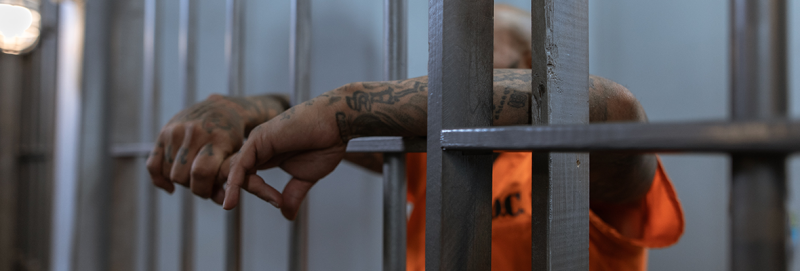
Wenn die Medien über Aufsehen erregende Straftaten berichten, wird schnell der Ruf nach harten Maßnahmen laut: Nach den Attacken auf Rettungskräfte in der Silvesternacht forderte Neuköllns Bürgermeister Martin Hikel (SPD), »bei Erwachsenen das Strafmaß auszureizen«, denn: »Ein paar Sozialstunden helfen da nicht weiter.« Auch die Klimaproteste lassen die Gemüter hochkochen: »Straßenblockierer und Museumsrandalierer härter bestrafen«, beantragte die Union-Bundestagsfraktion im November 2022. Nach der Besetzung des Rollfelds am Flughafen BER verlangte CSU-Landesgruppenchef Alexander Dobrindt eine »harte Antwort des Rechtsstaats«. Und für Geldautomatensprenger forderte Hessens Justizminister Roman Poseck eine höhere Mindeststrafe: fünf Jahre statt wie bisher ein Jahr.
In ihrem Drängen auf die strenge Hand des Gesetzes ähneln sich politisch Aktive, die sonst wenig eint: Konservative fordern gern ein konsequentes Durchgreifen gegen Gewalttäter und Dealer. Extreme Gegner der Coronapolitik wiederum wünschen sich ein Tribunal gegen die Verantwortlichen hinter den Maßnahmen. Auch in progressiven Kreisen sind Strafgelüste keine Seltenheit: »Karzeralen Feminismus« nennt die Soziologin Elizabeth Bernstein den Versuch, Geschlechtergerechtigkeit per Polizei und Gericht herzustellen. Sie meint damit Kampagnen, das Sexualstrafrecht zu verschärfen oder die Prostitution pauschal als Menschenhandel verfolgen.
Quer durch politische Strömungen scheint sich die Sehnsucht zu ziehen, die vermeintlichen Verursacher gesellschaftlichen Übels dingfest zu machen. In einer europaweiten Befragung aus dem Jahr 2010 stimmten über zwei Drittel der Aussage zu, es brauche deutlich härtere Urteile gegen Straftäter. Schon jetzt lässt sich der Staat den Vollzug einiges kosten: Ein Tag in der Zelle schlägt in Baden-Württemberg etwa mit 153 Euro zu Buche – so viel wie ein besseres Hotelzimmer. Rund 40 000 Gefangene sitzen ihre Freiheitsstrafe in einer der 172 deutschen Strafanstalten ab. Bei rund einer von sieben Verurteilungen entscheiden die Gerichte auf Freiheitsentzug, in den übrigen Fällen meist auf Geldstrafe.
Gerade bei schweren Verbrechen wirkt das Gefängnis als Sanktion wie eine Selbstverständlichkeit. Dabei wirft das Vorgehen beim näheren Hinsehen einige Fragen auf: Woher stammt überhaupt der Wunsch, Übeltäter hart zu bestrafen? Was erhofft man sich davon, Menschen ihre Freiheit zu nehmen – und werden diese Ziele eingelöst?
Selbst einen Preis bezahlen, um anderen zu schaden: So verstehen evolutionäre Psychologen die Logik der Strafe. Lange Zeit vermuteten sie ein kulturübergreifendes »Strafbedürfnis«, das im Lauf der menschlichen Entwicklung entstanden sei. Trittbrettfahrer, welche die Gemeinschaft für ihre eigenen Zwecke missbrauchten, sollten so in ihre Schranken gewiesen werden.
Warum wir selbst Federn lassen, um andere zu maßregeln
Als Beleg für diese Annahme dienten Versuche mit dem berühmten Diktatorspiel: Die Schweizer Ökonomen Ernst Fehr und Urs Fischbacher ließen ihre Versuchspersonen in Dreiergruppen um echtes Geld zocken. Ein »Diktator« kann seinem mittellosen »Untertan« einen Teil seiner 100 Wertpunkte abtreten, ganz nach eigenem Ermessen. Im Schnitt gaben die Diktatoren rund ein Viertel ihrer Punkte ab – manche waren großzügiger, andere geiziger. Der dritte Spieler, der »Bestrafer«, beobachtete das Geschehen und hatte die Chance, den Kontostand eines knausrigen Despoten schrumpfen zu lassen. Für diese Sanktion musste er jedoch selbst Federn lassen: Um drei Punkte des Diktators zu vernichten, musste er je einen seiner eigenen 50 Punkte aufgeben. Dennoch gaben die Bestrafer im Schnitt 14 ihrer 50 Punkte aus, um einen egoistischen Diktator zu piesacken, der sein Vermögen ganz für sich behielt. Das entsprach rund vier Franken.
Der Befund passt nicht zur Annahme, Menschen seien stets nur auf ihren eigenen geldwerten Vorteil aus. Immerhin zahlten sie für die Sühne eines Fremden aus eigener Tasche, ohne selbst etwas davon zu haben. Spricht das für einen angeborenen und universellen Strafimpuls?
Neuere Befunde säen Zweifel an dieser These. Denn Menschen rächen offenbar nicht nur egoistische Manöver, sondern ärgern ihre Mitspieler auch dann, wenn jene völlig fair zu Geld kommen. »Strafentscheidungen rühren eher vom Unwillen, schlechter dran zu sein als andere, weniger vom Unwillen, betrogen zu werden«, schreiben die britische Evolutionspsychologin Nichola Raihani und der Biologe Redouan Bshary in einer Überblicksarbeit.
Noch einmal anders sieht es aus, wenn die Regelbrüche nicht im Labor, sondern in natürlichen Situationen stattfinden, wo sich alle Beteiligten freier entfalten können. Raihani und Bshary nennen eine ganze Reihe von Strategien: Je nach Situation eilen Unbeteiligte mal dem Opfer zu Hilfe, statt dem Schurken eins auszuwischen, mal gehen sie einfach befremdet weg. Auch Klatsch und Tratsch können helfen, milde Vergehen zu sühnen. Diese Strategie ist der Strafe nicht unähnlich: Wer über einen Missetäter in dessen Abwesenheit herzieht, gefährdet dessen guten Ruf – auf lange Sicht aber auch den eigenen. Sich zum Racheengel aufzuschwingen, ist deshalb nicht immer zum eigenen Vorteil. Jenseits des westlichen Kulturkreises finden sich noch völlig andere Wege, um erlebtes Unrecht zu bearbeiten. Die Inuit etwa nutzten traditionell Duelle in Liedform, in denen sich Beschuldigter und Opfer in kunstvollen Spottversen vor Publikum miteinander stritten. Wer dabei für mehr Applaus sorgte, »gewann« die Auseinandersetzung.
Hinter dem Strafwunsch stecken oftmals autoritäre Sehnsüchte
Uneinigkeit besteht auch darüber, was eine Strafe genau bewirken soll. Das Vergeltungsprinzip etwa verlangt einen zweckfreien Ausgleich von Schuld und Sühne, ganz nach dem alttestamentlichen Motto »Auge um Auge, Zahn um Zahn«. Der Philosoph Immanuel Kant war glühender Anhänger dieser Idee: Selbst wenn ein Inselvolk seine Heimat verlassen und sich in alle Welt zerstreuen würde, »müßte der letzte im Gefängnis befindliche Mörder vorher hingerichtet werden, damit jedermann das widerfahre, was seine Taten wert sind«, so Kant. Sein britischer Zeitgenosse Jeremy Bentham sah das anders, ihm ging es allein um Effektivität. »Generalprävention sollte das höchste Ziel der Strafe sein«, mahnte er. Das moderne Strafrecht ist näher an Benthams Ideen: Es betont Ideen von Abschreckung und Wiedereingliederung der Täter in die Gemeinschaft.
Doch der Wunsch nach Vergeltung spielt weiterhin eine Rolle. Wenn Laien im Labor den Richter spielen und ein Strafmaß für fiktive Fälle aussprechen sollen, folgen sie fast ausschließlich dem Prinzip der »verdienten Strafe«, wollen also ein erlebtes Ungleichgewicht wieder ins Lot bringen. Um die sozialen Konsequenzen ihres Schuldspruchs kümmern sie sich wenig. Die chilenische Psychologin Monica Gerber interessierte sich dafür, weshalb der Wunsch nach drakonischen Strafen derart verbreitet ist. Dafür ließ sie drei beliebte Erklärungsansätze gegeneinander antreten: erstens die Angst, selbst zum Opfer von Straftaten zu werden, zweitens die Sorge um Anstand und Moral in der Gesellschaft und drittens ein Weltbild, das als »rechter Autoritarismus« bekannt ist. Gemeint ist die Überzeugung, Menschen sollten eingespielte Traditionen stets befolgen und sich den Weisungen der Machthabenden beugen. Gerber testete die drei Modelle an den Daten einer aufwändigen Interviewstudie von Scotland Yard mit 20 000 Befragten sowie einer kleineren eigenen Erhebung unter Londoner Studierenden. In beiden Fällen war das Ergebnis ähnlich: Ängste um die private Sicherheit oder die der Gemeinschaft spielten nur eine kleine Rolle. Allein die autoritären Einstellungsmuster sagten maßgeblich voraus, wie sehr sich eine Person für harsche Strafen einsetzt. Was also oft mit persönlichen Sorgen begründet wird, scheint vielmals eher eine Frage der politischen Einstellung zu sein.
Beugt eine Haft weiteren Straftaten vor?
Die Laien sind offenbar mehr vom »heißen« Wunsch nach Vergeltung getrieben als von der »kühlen« Logik der Prävention, selbst wenn sie etwas anderes behaupten. Auch in der Praxis gehen Anspruch und Realität auseinander: Die klassischen Strafzwecke, wie sie in den juristischen Lehrbüchern stehen, werden kaum erfüllt – insbesondere, wenn es um Gefängnisstrafen geht. Die Haft soll beispielsweise als »Spezialprävention« wirken, also den Einzelnen vor zukünftigen Taten abschrecken. Doch sie beeinflusst offenbar kaum, ob jemand rückfällig wird. Eine Langzeitstudie im US-Bundesstaat Michigan untersuchte, was mit gut 110 000 Verurteilten in den fünf Jahren nach ihrer Strafe geschah. Dabei schlossen die Forscher zuvor mit Hilfe eines statistischen Verfahrens sonstige Einflussfaktoren aus, die neben dem Strafmaß ebenfalls auf die Rückfallrate einwirkten. Das Ergebnis war ernüchternd: Auf Bewährung Verurteilte begingen später nicht mehr oder weniger Gewaltverbrechen als jene, die Zeit hinter Gittern verbüßten. Anders gesagt: Eine harte Strafe brachte nicht mehr als eine milde.
Vereinzelte Studien bescheinigen der Haft gar eine »kriminogene« Wirkung, das heißt: Gefangene verübten nach ihrer Entlassung eher mehr Straftaten. »Haftstrafen können künftige Verbrechen kaum verhindern. Gefängnisse können sogar den gegenteiligen Effekt haben: Insassen lernen effektive Tatstrategien voneinander«, schreibt der wissenschaftliche Dienst des US-Justizministeriums. Die wenigen Studien, die tatsächlich einen Rückgang von Straftaten maßen, betrafen meist Anstalten mit einem soliden Wiedereingliederungsprogramm. Eine Einschränkung gibt es dabei: Die Daten beziehen sich auf die (deutlich strengeren) US-amerikanischen Gefängnisse. Möglicherweise erfüllen deutsche Anstalten ihre Mission besser – das ist jedoch bislang kaum erforscht. Hier zu Lande wird knapp die Hälfte der Insassen in den drei Jahren nach Entlassung rückfällig.
Auch die Idee einer »Generalprävention«, laut der die Angst vor Strafe generell Verbrechen vorbeugt, ist für Gefängnisstrafen erstaunlich schlecht belegt. Wie kann das sein? »Gefangene berichten, dass sie gar nicht an die Möglichkeit von Gefängnis dachten, während sie ihre Tat verübten«, schreibt der Sozialpsychologe John Darley. Das deckt sich mit dem Ergebnis einer Interviewstudie des Ökonomen David Anderson mit knapp 300 Gefangenen: 76 Prozent sahen bei ihren Taten kaum ein Risiko, erwischt oder bestraft zu werden, in der Gruppe der Gewaltverbrecher waren es gar 89 Prozent.
Das mag zunächst erstaunlich wirken. Verständlicher wird es, wenn man bedenkt, dass viele Gefangene eine Vorgeschichte mit Alkoholmissbrauch oder Sucht haben – drei von fünf waren es in einer deutschen Stichprobe unter jungen männlichen Gefangenen, die der Psychologe Denis Köhler mit seiner Arbeitsgruppe untersuchte. Hinzu kommen eskalierende Gruppendynamiken unter jungen Männern. Auch psychische Erkrankungen spielen eine Rolle; das Team entdeckte bei vier von fünf Gefangenen diverse Verhaltensstörungen. Anders gesagt: Die meisten Straftaten entstehen eben nicht nach einer sorgfältigen Abwägung von Gefahren und Nutzen, sondern eher impulsiv, aus dem Bauch heraus. »Die monetären und sozialen Kosten von langen Haftstrafen sind hoch«, resümiert John Darley. Trotzdem gibt es kaum Hinweise, dass sie die Allgemeinheit stärker schützen würden.
Dafür sind die negativen Folgen der Haftanstalten umso eindrücklicher: Gefangene haben ein höheres Risiko, sich mit HIV und Tuberkulose anzustecken, nehmen sich häufiger das Leben oder werden Opfer von sexuellen Übergriffen. Die schwersten Probleme würden sich oft erst zeigen, nachdem die Gefangenen wieder freikommen, schreibt der Sozialpsychologe Craig Haney von der University of California in Santa Cruz. Er erklärt das mit einer übermäßigen Anpassung an den Alltag hinter Gittern: Über Jahre würden andere entscheiden, wann die Insassen ins Bett gehen, aufstehen, was sie essen oder wie lange sie telefonieren. »Sie fühlen sich infantilisiert durch diesen Kontrollverlust in den banalsten Aspekten ihres Lebens«, berichtet Haney. In der Folge würde ihre Eigeninitiative oft deutlich abnehmen – vergleichbar mit dem so genannten Hospitalismus bei Menschen, die lange Zeit in der Psychiatrie verbracht haben. Gerade jene Gefangenen, die sich besonders gut an das Knastleben anpassen, so Haney, hätten später die größten Probleme, wenn sie wieder in Freiheit kämen. Dem Klischee nach sind Gefangene »schwere Jungs« und »hart im Nehmen«, doch scheint das Gegenteil wahr zu sein: »Viele Insassen kommen aus sozial und ökonomisch benachteiligten Gruppen und haben als Kinder und Erwachsene widrige und traumatische Erfahrungen durchlebt«, so Haney.
Allerdings sind all diese Probleme schon lange bekannt. Der französische Philosoph Michel Foucault bemerkte in seinem Buch »Überwachen und Strafen« aus dem Jahr 1975, die Anstalten würden neue Missetäter regelrecht hervorbringen. Er gibt zu bedenken, dass die Kritik an der Haftlogik mittlerweile selbst 150 Jahre alt sei und sich trotz aller Reformbemühungen kaum etwas ändere. Das Strafsystem sei aber keineswegs gescheitert, sondern verfolge bloß andere Zwecke als gemeinhin vermutet. Foucault dreht also den Spieß um und fragt: »Gehört nicht auch der angebliche Misserfolg des Gefängnisses in seinen Funktionszusammenhang hinein?« Die Haft würde niemanden »bessern«, sondern ganz im Gegenteil ein geschlossenes Milieu an Delinquenten – Gesetzesbrecher aus den unteren Schichten – hervorbringen, das als abschreckendes Beispiel die soziale Ordnung stabilisiere. »Indem sich die Delinquenz von den anderen Gesetzwidrigkeiten absetzt, schwebt sie als Drohung über ihnen«, schrieb Foucault. Die Gefängnisse mit all ihren Missständen hätten so ihren festen Platz in der Gesellschaft und ließen sich deshalb kaum ernsthaft reformieren oder gar abschaffen, ohne das gesellschaftliche Miteinander völlig neu zu denken.
Wie Gerechtigkeit auch ohne Gitterstäbe gelingt
Doch auch im Hier und Jetzt stehen bereits andere Wege offen. Bei opferlosen Delikten lässt sich fragen, ob sich die dahinterliegenden Probleme nicht ohne Strafrecht besser lösen ließen, etwa beim Thema Flucht: Menschen ohne Papiere verstoßen bereits bei der Einreise gegen das Aufenthaltsrecht und machen sich strafbar, selbst wenn die Behörden solche Verfahren häufig einstellen. Abhängige machen sich schuldig, wenn sie kleine Mengen Drogen besitzen (das bleibt in der Praxis ebenfalls meist folgenlos). Dass es auch anders geht, zeigt das Beispiel Portugal: Das Land entkriminalisierte im Jahr 2001 alle Drogen für den persönlichen Gebrauch und setzte auf Hilfe statt Strafe für Suchtkranke. In den Folgejahren sank die Zahl der Drogentoten und der drogenbedingten HIV-Infektionen stetig.
Umstritten ist ebenso die so genannte Ersatzfreiheitsstrafe, bei der Menschen hinter Gitter kommen, weil sie eine verhängte Geldstrafe nicht zahlen – 2022 waren das rund elf Prozent aller vollzogenen Freiheitsstrafen hier zu Lande. Besonders häufig trifft es Menschen, die in Bus oder Bahn ohne Ticket erwischt werden und damit nicht gerade zum Klischee eines Verbrechers passen. Hier wird Armut bestraft und nicht etwa ein besonders schlimmes Vergehen, meinen Kritiker. Sozialverbände wie die Caritas fordern, diese Regelung abzuschaffen.
Anders sieht es bei Taten aus, die ein konkretes Opfer hervorbringen, etwa bei einer Schlägerei. Bei solchen Vergehen schwingt oftmals eine symbolische Bedeutung mit, welche mehr Schmerzen verursacht als die kaputte Hose oder das blaue Auge. »Solche Schädigungen sind auch Botschaften«, schreiben der Philosoph Jeffrie Murphy und seine Kollegin Jean Hampton. »Gezielte Missetaten verletzen uns und versuchen (manchmal erfolgreich) uns zu demütigen.« Schließlich bauen die Taten stillschweigend ein Machtgefälle auf, nach der Devise: Mit dir kann man so etwas machen. Deswegen ist für viele Opfer und deren Angehörige die öffentliche Aufarbeitung so wichtig: Eine unabhängige Institution soll feststellen, dass das Geschehene unrecht war und nicht folgenlos bleibt.
Doch Strafprozesse mit ihren strengen Beweiskriterien und bürokratischen Finessen sind nicht immer der beste Weg, um Ruhe einkehren zu lassen. Es geht auch anders: Manche Einrichtungen und Kollektive setzen auf alternative Ansätze jenseits von Gericht und Polizei, etwa den der »transformativen Gerechtigkeit«. Statt um Vergeltung soll es um Verantwortungsübernahme und die Wünsche der Betroffenen gehen, zum Beispiel nach einem sexuellen Übergriff. Bei politischen Verbrechen kommen »Wahrheitskommissionen« zum Einsatz, die das Geschehen aufarbeiten und eine Versöhnung anstreben, beispielsweise nach den Gräueltaten im Kolumbienkonflikt oder der Apartheid in Südafrika. Doch die Aussicht auf völlige Amnestie für die Täter sorgt bei manchen Opfern und Angehörigen für Unverständnis.
Das deutsche Recht kennt ebenfalls eine Alternative zum klassischen Strafprozess: den Täter-Opfer-Ausgleich. Sind alle Beteiligten dafür offen, besprechen sie das Geschehene unter professioneller Anleitung und einigen sich auf eine Wiedergutmachung. Das kann ein Schmerzensgeld sein, eine Entschuldigung oder gemeinnützige Arbeit. Nicht immer geht das gut, der Prozess hat seine ganz eigenen Tücken. Aber hin und wieder kommen die Beteiligten auf kreative Lösungen, so etwa in einem von der evangelischen Kirche Frankfurts betreuten Fall: Nachdem ein Jugendlicher im Streit Opfer einer Körperverletzung wurde, wünschte er sich zur Wiedergutmachung ein faires Fußballturnier mit seinen früheren Peinigern. Bei schlechtem Wetter besiegte die Mannschaft des Geschädigten den Gegner dann mit einem knappen 13 : 11 – und die Beteiligten konnten den Zwist friedlich beilegen.
------
Spektrum.de
*Theodor Schaarschmidt
Der Autor ist Diplompsychologe und arbeitet als Wissenschaftsjournalist in Berlin.
Yeri: https://www.spektrum.de/news/straftaten-ueber-den-sinn-und-unsinn-von-haftstrafen/2123994 ▲ Collapse
| | | | Adnan Özdemir 
Türkiye
Local time: 14:10
Member (2007)
German to Turkish
+ ...
TOPIC STARTER
-Hepisi alıntı--
TRAUER
:
»Ein Haustier ist kein Kühlschrank, den man einfach austauscht«
Manche Menschen trauern noch nach Monaten oder Jahren um ihren verstorbenen Vierbeiner: Das Tier war für sie ein Familienmitglied. Was hilft ihnen beim Trauern – und wann ist der richtige Zeitpunkt für einen neuen Mitbewohner?
Yazı: Delia Filippone
Spektrum.de - 6 Nisan 2023

Autorin Delia Filippone und ihr erster Hund Bingo: Er starb vor ungefähr sieben Jahren.
Der 21. Dezember 2015 hat sich in mein Gedächtnis eingebrannt. An diesem Tag verlor ich meinen geliebten Hund Bingo. Er war erst drei Jahre alt. Er litt an Epilepsie, und die Medikamente halfen nicht mehr; in der Woche vor seinem Tod hatte er schwere Anfälle und wurde sehr krank. Der Tierarzt sah keinen anderen Ausweg mehr, als ihn von seinem Leid zu erlösen.
Für mich war Bingo etwas Besonderes. Er hatte einen kleinen weißen Fleck auf der Brust und wunderschöne braune Augen. Sobald ich die Worte »Gehen wir ...« sagte, wusste er, dass wir spazieren gehen. Außerdem war er besessen von seinem Ball. Er bellte und bellte, bis wir den Ball quer durch den Garten warfen und er ihn fangen und zurückbringen konnte. Für ihn konnte das Spiel stundenlang dauern. Wie gerne würde ich wieder mit ihm spielen.
Rund sieben Jahre später kämpfe ich immer noch mit dem Verlust. Dennoch spreche ich nicht oft darüber, aus Angst vor Reaktionen wie »Aber es war doch nur ein Hund«. Es ist mir unangenehm zuzugeben, wie sehr ich nach Bingos Tod getrauert habe – mehr als nach dem Tod eines Familienmitglieds. Ich finde es peinlich, dass ich beim Gedanken an ihn auch nach so vielen Jahren noch manchmal weinen muss.
»Acht von zehn Besitzern sehen ihr Haustier als vollwertiges Familienmitglied an«
Nienke Endenburg, Professorin für Mensch-Tier-Beziehungen an der Universität Utrecht
»Der Verlust eines Haustiers ist ein Tabu. Die Menschen schämen sich für ihre Trauer«, bestätigt die Gesundheitspsychologin Nienke Endenburg, Professorin für Mensch-Tier-Beziehungen im Fachbereich Veterinärmedizin der Universität Utrecht. Sie berät Menschen, die ein Haustier verloren haben, bei ihrem Trauerprozess. »Die Vorstellung ist, dass es ›nur‹ ein Tier ist und man sich einfach ein neues Haustier aus dem Tierheim holen sollte. Aber acht von zehn Besitzern sehen ihr Haustier als vollwertiges Familienmitglied an. Ein Haustier ist kein Kühlschrank, den man einfach austauscht.«
Für manche Menschen sei das Haustier der liebste Begleiter, es bedeute ihnen sehr viel, sagt auch der Trauerexperte Manu Keirse, klinischer Psychologe und Professor an der Medizinischen Fakultät der Universität Löwen in Belgien. Ihm zufolge sind Trauer und Kummer in der Gesellschaft allgemein mit einem Tabu belegt. »Die Menschen lernen nicht mehr, damit umzugehen. Sie neigen dazu, ihren Kummer zu verdrängen.« Nach ein paar Wochen sollten sie über den Verlust hinweg sein, so die Erwartung. Früher habe man viel länger getrauert.
Wie der Trauerprozess verläuft, hängt weitgehend von der Bindung an das verstorbene Tier ab, aber auch vom Verständnis der Mitmenschen und von anderen belastenden Faktoren. Das zeigt eine Studie der New Yorker Forscher Gerald Gosse und Michael Barnes. Die beiden hatten mehr als 200 Personen befragt, deren Haustier kurz zuvor verstorben war.
Auch Nienke Endenburg hat den Verlust von Haustieren untersucht. »Im Durchschnitt dauerte der Trauerprozess über acht Monate. Doch es gab große Unterschiede. Manche waren schon nach zwei Tagen darüber hinweg, andere brauchen Jahre.« Endenburg wollte wissen, wie die Unterschiede zu Stande kommen. »Es lag vor allem an der Bindung zu dem Tier und an der Art, wie es starb. Wenn das Einschläfern nicht gut verläuft, kann das zu einem Trauma führen.« Manchmal werden die Tiere nicht genug sediert, berichtet Endenburg. Und manchmal tut die Narkosespritze weh oder das Tier wird desorientiert und fängt an zu jaulen.
»Beim Trauern gibt es für mich keine zeitliche Begrenzung«, fügt Keirse hinzu. »Es dauert so lange, wie es dauert.« Das hänge zum Teil davon ab, welche Bedeutung das Haustier im Leben der betreffenden Person hatte. Ein Hund bestimme auch die Tagesstruktur mit: »Man geht mit ihm spazieren, füttert ihn und kümmert sich um ihn. Er wartet auf einen, wenn man abends nach Hause kommt. All das fällt weg, wenn er stirbt.«
Entscheidung über Leben und Tod
Das Einschläfern von Bingo verlief ohne Zwischenfälle, aber für mich ging alles sehr schnell. Den einen Tag lief er noch zu Hause herum, am nächsten war er plötzlich nicht mehr da. Er war noch jung, auch darum kann ich seinen Tod nicht so einfach akzeptieren.
»Euer Hund wäre normalerweise zwölf Jahre alt geworden«, sagt Endenburg. »Da rechnet man nicht damit, dass sein Leben schon nach drei Jahren endet. Das ist einfach ungerecht. Man fragt sich, warum alle anderen Hunde zwölf Jahre alt werden, nur der eigene nicht.«
Ich frage mich auch manchmal, ob es keine Alternative gab. Vielleicht existierte doch irgendwo ein neues Medikament gegen Epilepsie bei Hunden? Oder hätte es eines gegeben, wenn wir noch ein wenig länger gewartet hätten? Ich fühle mich oft schuldig, und laut Endenburg bin ich damit nicht die Einzige.
»Mit Ritualen gießt man eine persönliche Erfahrung in eine gesellschaftliche Form. So wird das, was man fühlt und erlebt, in der Gesellschaft sichtbar«
Manu Keirse, Trauerexperte und Professor an der Medizinischen Fakultät der Universität Löwen
Viele Besitzer kämpfen nach dem Einschläfern mit Schuldgefühlen, sagt die Psychologin. Denn es sei schwierig, den richtigen Zeitpunkt zu finden: »Es ist eine Entscheidung über Leben und Tod. Das ist unumkehrbar.« Viele Menschen fragen sich, ob sie nicht doch länger hätten warten müssen – oder umgekehrt, ob sie das Tier schon früher hätten erlösen sollen.
Die Schuldgefühle und der Kummer kommen jedes Jahr wieder. Im Dezember denke ich mehr an Bingo als in den anderen Monaten. »Ein Jahr nach dem Tod des Tiers erlebe ich in der Regel, dass die Trauer bei meinen Klienten wieder auflebt«, sagt Endenburg. »Es kann helfen, am Todestag an einem Ort spazieren zu gehen, den der Hund geliebt hat, oder etwas mit einem Foto zu machen.«
Wie Rituale helfen können
Laut dem klinischen Psychologen und Trauerexperten Manu Keirse kann ein Ritual wie eine Gedenkfeier dabei helfen, den Verlust eines Haustiers zu verarbeiten. »Mit Ritualen gießt man eine persönliche, private Erfahrung in eine gesellschaftliche Form. So wird das, was man fühlt und erlebt, in der Gesellschaft sichtbar.« Das helfe, weil sich die Gesellschaft auf diese Weise auch damit beschäftige.
Bestattungen für Hunde oder Katzen sind nicht sehr verbreitet. Es gibt Tierkrematorien, in denen man sein Tier einäschern lassen und eine Urne oder eine Kette mit der Asche mit nach Hause nehmen kann. In Belgien, wo meine Familie und ich wohnen, gibt es derzeit 15 Friedhöfe und Krematorien für Tiere. Wir haben Bingo im Garten vergraben, aber das ist nicht immer und überall erlaubt. Beispielsweise darf das Tier nicht an einer Infektionskrankheit gestorben sein, und der Boden darf nicht aus Lehm oder Ton sein.
Letzte Ruhestätte
Haustiere können auf speziellen Tierfriedhöfen bestattet werden. Auch eine gemeinsame Bestattung von Mensch und Tier ist möglich, aber nur in getrennten Urnen: Das Tier wird dazu in einem Tierkrematorium eingeäschert, der Mensch in einem Humankrematorium.
Das Begraben im eigenen Garten ist in den meisten Bundesländern unter bestimmten Bedingungen – im Rahmen der gesetzlichen Hygienevorschriften für »tierische Nebenprodukte« – erlaubt. Voraussetzung ist unter anderem die Zustimmung der Grundstückseigentümer; ausgeschlossen sind Tiere mit meldepflichtigen Krankheiten. Außerdem sollte man vorab bei Stadt oder Gemeinde nachfragen, ob es eine Genehmigung des Veterinäramts braucht.
»Rituale wie Beerdigungen haben wir natürlich nicht ohne Grund erfunden. Sie haben eine äußerst wichtige Funktion«, sagt Endenburg. »Wenn man auf diese Weise Abschied nimmt, gibt es viel Unterstützung von Familie und Freunden.« Diese Anteilnahme sei wichtig. Das gilt auch für den Verlust eines Haustiers. »Eine Karte zu schicken oder eine Kerze anzuzünden kann viel bedeuten. Aber leider geschieht das nicht sehr oft.«
Manche brauchen nach dem Verlust eines Haustiers eine Trauerbegleitung, wie die Menschen, die bei Endenburg Hilfe suchen. Das sei jedoch nicht immer so, meint Manu Keirse: »Trauer nach einem Verlust zu empfinden, ist normal. Verweilen Sie in diesem Kummer. Ein Foto oder ein Gedenkbuch können helfen. Und sprechen Sie darüber mit Menschen, die das ernst nehmen und von denen Sie wissen, dass Sie ihnen davon erzählen können.«
Neues Tier, neue Persönlichkeit
Im April hießen meine Eltern und ich unseren neuen Hund Bono willkommen. Sechs Jahre lang hatten wir keinen Hund, aus Angst, noch einmal einen so schweren Verlust zu erleben. Doch plötzlich kam Bono zu uns, und er brachte viel Freude ins Haus. Zuerst war ich von ihm nicht so angetan. Als wir ihn abholten, bellte er uns ständig an. Auf einmal fiel mir das alles wieder sehr schwer, ich wollte keinen anderen Hund – ich wollte Bingo. Aber als Bono noch am selben Abend in meinen Armen schlief, war ich überzeugt.

//Delia und Bono | Sechs Jahre nach dem Tod von Bingo ist Bono eingezogen. Am ersten Tag war Delia skeptisch, doch das änderte sich schnell.///
Wir haben sechs Jahre gewartet. Manche Menschen nehmen ein neues Haustier bereits wenige Tage oder Wochen nach dem Tod des vorherigen auf. Laut Manu Keirse lenkt das ein wenig von der Trauer ab. »Dann sieht es so aus, als ob ein Hund ersetzbar wäre, aber so ist es nicht.«
Jeder müsse für sich selbst entscheiden, wann er ein neues Haustier möchte, sagt Nienke Endenburg. »Einige Leute sind sehr schnell so weit, andere warten jahrelang. Und manche sagen, sie wollen kein neues Haustier, weil sie diesen Kummer nie wieder erleben wollen, legen sich nach einiger Zeit aber doch ein neues Tier zu.«
Das sei völlig in Ordnung. »Allerdings erlebe ich auch Menschen, die den Trauerprozess nicht beginnen wollen und schnell die gleiche Art von Tier kaufen wie das verstorbene«, berichtet die Psychologin. Dann stelle sich heraus, dass das Tier ganz anders ist und die Erwartungen nicht erfüllen kann. Jedes Tier habe seinen eigenen Charakter. Endenburg betont, man müsse sich darüber im Klaren sein, dass es Zeit und Energie braucht, um ein neues Tier kennen zu lernen und eine Bindung zu ihm aufzubauen.
»Wenn Sie dazu bereit sind, sollten Sie sich unbedingt ein neues Haustier zulegen. Solange Sie sich darüber im Klaren sind, dass es niemals Ihr voriges ersetzen kann«
Nienke Endenburg, Psychologin
Häufig haben die Menschen auch ein schlechtes Gewissen gegenüber ihrem verstorbenen Hund, wenn sie sich einen neuen anschaffen – als ob sie deshalb nicht mehr an ihn denken oder sie ihn einfach ersetzen würden. »Doch wenn Sie dazu bereit sind, sollten Sie sich unbedingt ein neues Haustier zulegen«, rät Endenburg. »Solange Sie sich darüber im Klaren sind, dass es niemals Ihr voriges ersetzen kann.«
Für mich wird Bono niemals Bingo ersetzen – das steht fest. Bono hat seine eigene Persönlichkeit. Er ist schwarz mit braunen Pfoten und zwei kleinen braunen Flecken über den Augen. Er spielt nicht so oft mit dem Ball wie Bingo, sondern beißt lieber in Äste (was wir ihm gerade abgewöhnen wollen) und jagt Fliegen. Wenn ich eine Weile weg war und er mich wiedersieht, rennt er wie verrückt durch den ganzen Garten. Er liebt es über alles, in meinen Armen zu liegen. Ich weiß, dass auch er eines Tages sterben wird. Und ich weiß, dass das sehr wehtun wird. Aber alles, was ich tun kann, ist, die Zeit mit ihm zu genießen und zu hoffen, dass er so lange wie möglich ein Mitglied unserer Familie sein kann.
------------
*Delia Filippone
Die studierte Journalistin schreibt für das belgische Wissenschaftsmagazin »Psyche&Brein«.
Kaynak: https://www.spektrum.de/news/haustiere-der-schwere-abschied-vom-geliebten-hund/2105598
| | | | Adnan Özdemir 
Türkiye
Local time: 14:10
Member (2007)
German to Turkish
+ ...
TOPIC STARTER
--Alıntıdır--
Why Do Rich People Always End Up Saving More Money Than Poor People?
Written By Kavya Rao
Last Updated On: 10 Apr 2023
-----
The rich are more likely to save an additional dollar handout than a poor person. This is solely because of low availability of personal disposable income.
There is a highly consistent relationship between the incomes and food expenditures of any household, e... See more --Alıntıdır--
Why Do Rich People Always End Up Saving More Money Than Poor People?
Written By Kavya Rao
Last Updated On: 10 Apr 2023
-----
The rich are more likely to save an additional dollar handout than a poor person. This is solely because of low availability of personal disposable income.
There is a highly consistent relationship between the incomes and food expenditures of any household, especially when a household’s income falls into the low-income category, as per the economy’s standard classifications.
In the myriad of theories on family consumption and expenditure, one theory stands out. It was first brought to light by Ernst Engel, a German statistician and an economist. Today, this observation is famously known as Engel’s Law.
//Engel was a statistician. He studied 199 family budget sets in Europe to arrive at Engel’s Law, which we know and apply today///

Every family must spend on necessities, such as food, clothing, shelter, healthcare, education, recreation etc. They need to budget accordingly. Ernest Engel conducted an investigation of family budgets 160 years ago. The resultant analysis holds policy relevance to this day regarding issues of poverty.
It is also imperative for every country to study how family budgets are spent across multiple expenditure heads. This study would significantly help governments design policy interventions.
What Is Engel’s Law?
Broadly, Engel’s Law infers that at lower household income levels, a significant proportion of the income will be spent on food consumption, primarily necessities. In other words, as household income rises, the proportion of income spent on food consumption declines. This decline does not imply that absolute expenditure declines, as it very well may increase, but the proportion of income spent on food (necessities) does decline.
Think about it. Suppose you have a staple diet where you consume wheat and rice as a part of your meals. If your income rises and your preferences stay the same, your consumption will not change. In the same light, if your expenditure on necessary food is about $10 when your income is $100 a month, which is 10% of your income, if your income increases to $200 a month, even if you spend $15, it is 7.5% of your income. Even if you decide to spend $20, it is still only 10% of your income.
As the income of a household increases, expenditure on different types of food items may rise. It is also true that people might shift their eating habits. They might switch to healthier alternatives which may add to their costs.
Comparatively, there will always be a limit on food expenditure, unlike other categories of expenditure, such as consumer durables and luxury items, upon which expenditure increases steadily with rising incomes.
Several assumptions follow while generalizing this tendency, such as family size, food necessities required for survival, and relative food and non-food item prices being the same across both periods. When all these assumptions are held constant, the constant decline of expenditure on food items as incomes rise is hard to ignore.
//Items that come under “needs” for any individual will have an income elasticity of less than 1. Irrespective of income, the demand for those needs will remain unaffected. Think of goods like water.///

Furthermore, the income elasticity of necessary items like staple food is less than 1. This means that as incomes rise, the proportion of expenditure on food remains unlikely or less likely to change.
Generally, items are said to be income elastic when a slight change in income causes the buyer to switch their expenditure pattern. For instance, luxury goods are often said to be income elastic. This is because a slight change in the buyer’s income might lead them to switch their brand choice or abandon the purchase of a given product. This is different for necessities, as food is required for subsistence.
What Is A Rich Vs. Poor Person More Likely To Do With An Additional Dollar?
Every additional dollar a person gains will likely be spent on consuming necessary food until that household attains a certain minimum income threshold. This is the minimum income threshold required for their survival.
Every nation defines income limits and categorizes earners in fixed categories. The most apparent categories are high-, medium- and low-income earners. These limits vary from country to country. This categorization helps in identifying spending patterns and targeting interventions accordingly.
Since low-income individuals tend to have low levels of disposable income, they are more likely to focus on meeting their current consumption needs. Hence, it is expected that they would spend any additional dollar tending to their immediate needs.
Comparatively, high-income earners, as a result of having high personal disposable income, always have a choice on what they can do with an additional dollar. They can choose to spend it or save it.
Low-income earners are constantly robbed of this choice, as they are still at subsistence living standards.
This is not to conclude that all low- or high-income earners will spend their incomes on consumption; these observations are for an average low- or high-income earner. Exceptions exist on both extremes. A high-income earner could be a spendthrift, while a low-income earner might be extremely frugal and, having had the experience of financial insecurity, might end up saving it.
//Low-income earners tend to spend on necessities, as they are still struggling to reach a minimum standard of living.///

//Netten buldum///

These observations also have policy implications when governments decide whether to give tax incentives to high-income vs. low-income earners. High-income earners are more likely to pocket the benefits they receive in such an instance, or invest it for even higher returns.
On the other hand, a handout to a low-income earner will lead to an uptick in demand, which might kick-start the economy’s investment cycle. As demand spurs, avenues for investment open things up for competition among potential suppliers.
Similarly, when the government needs to decide which category of goods to tax, taxing food necessities may receive backlash, as opposed to more taxation of luxury items. If the tax levied is too high, governments might have to roll out food programs to supplement the nutritional needs of people who cannot afford these necessities.
A contextual study of family budgets becomes significant when designing economic interventions, as it represents an essential insight into consumer behavior. Engel has acquired an immortal reputation for his observations by studying 199 family budgets across Europe. His law has also been tested with data in developed and emerging countries. No one has contested it thus far, and it holds with empirical data to this day.
______________
Yeri: https://www.scienceabc.com/social-science/why-do-rich-people-always-end-up-saving-more-money-than-poor-people.html ▲ Collapse
| | | | Adnan Özdemir 
Türkiye
Local time: 14:10
Member (2007)
German to Turkish
+ ...
TOPIC STARTER | Bruce Willis rahatsızlığı olarak biliniyor... | Apr 16, 2023 |
--Alıntı--
What Are Frontotemporal Disorders? Causes, Symptoms, and Treatment
Frontotemporal disorders (FTD), sometimes called frontotemporal dementia, are the result of damage to neurons in the frontal and temporal lobes of the brain. Many possible symptoms can result, including unusual behaviors, emotional problems, trouble communicating, difficulty with work, or difficulty with walking. FTD is rare and tends to occur at a younger age than other forms of deme... See more --Alıntı--
What Are Frontotemporal Disorders? Causes, Symptoms, and Treatment
Frontotemporal disorders (FTD), sometimes called frontotemporal dementia, are the result of damage to neurons in the frontal and temporal lobes of the brain. Many possible symptoms can result, including unusual behaviors, emotional problems, trouble communicating, difficulty with work, or difficulty with walking. FTD is rare and tends to occur at a younger age than other forms of dementia. Roughly 60% of people with FTD are 45 to 64 years old.
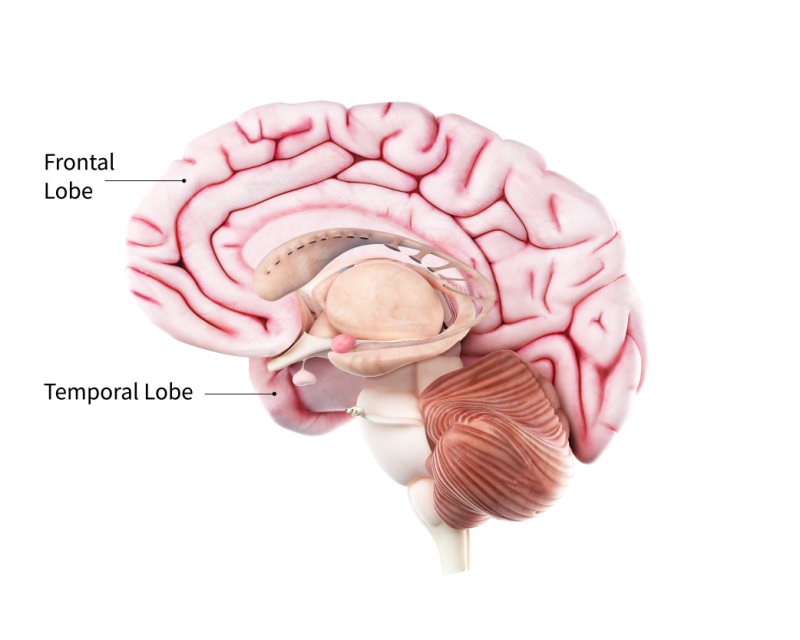
FTD is progressive, meaning symptoms get worse over time. In the early stages, people may have just one symptom. As the disease progresses, other symptoms appear as more parts of the brain are affected. It is difficult to predict how long someone with FTD will live. Some people live more than 10 years after diagnosis, while others live less than two years after they are diagnosed.
There is currently no cure for FTD, and no treatments slow or stop the progression of the disease, but there are ways to help manage the symptoms.
What do the terms mean?
One of the challenges shared by people living with these disorders, families, clinicians, and researchers is what terminology to use. Here, we have used the term frontotemporal disorders to characterize this group of diseases and the abbreviation FTD, which is commonly used to refer to them. Other terms used include frontotemporal lobar degeneration and frontotemporal dementia, but it's important to note that with some frontotemporal disorders, the primary symptoms are problems with speech or movement, rather than dementia symptoms. Physicians and psychologists diagnose the different forms of FTD based on a person’s symptoms as well as the results of brain scans and genetic tests.
What are the types and symptoms of FTD?
In the early stages, it can be hard to know which type of FTD a person has because symptoms and the order in which they appear can vary from one person to another. Also, the same symptoms can appear across different disorders and vary from one stage of the disease to the next as different parts of the brain are affected.
Symptoms of FTD are often misunderstood. Family members and friends may think that a person is misbehaving, leading to anger and conflict. It is important to understand that people with these disorders cannot control their behaviors and other symptoms and lack any awareness of their illness.
There are three types of frontotemporal disorders (FTD): behavioral variant frontotemporal dementia (bvFTD), primary progressive aphasia (PPA), and movement disorders.
Behavioral variant frontotemporal dementia
The most common FTD, bvFTD, involves changes in personality, behavior, and judgment. People with this disorder may have problems with cognition, but their memory may stay relatively intact. Symptoms can include:
- Problems planning and sequencing (thinking through which steps come first, second, and so on)
- Difficulty prioritizing tasks or activities
- Repeating the same activity or saying the same word over and over
- Acting impulsively or saying or doing inappropriate things without considering how others perceive the behavior
- Becoming disinterested in family or activities they used to care about
Over time, language and/or movement problems may occur, and the person living with bvFTD will need more care and supervision.
Primary progressive aphasia
PPA involves changes in the ability to communicate — to use language to speak, read, write, and understand what others are saying. This includes difficulty using or understanding words (aphasia) and difficulty speaking properly (e.g., slurred speech). People with PPA may have one or both of these symptoms. They may become mute or unable to speak.
Many people with PPA develop symptoms of dementia. Problems with memory, reasoning, and judgment are not apparent at first but can develop over time. In addition, some people with PPA may experience significant behavioral changes, similar to those seen in bvFTD, as the disease progresses.
There are three types of PPA, categorized by the kind of language problems that appear first.
Semantic PPA: A person slowly loses the ability to understand single words and sometimes to recognize the faces of familiar people and common objects.
Agrammatic PPA: A person has more and more trouble speaking and may omit words that link nouns and verbs (such as to, from, the). Eventually, the person may no longer be able to speak at all. The person may eventually develop movement symptoms similar to those seen in corticobasal syndrome.
Logopenic PPA: A person has trouble finding the right words during a conversation but can understand words and sentences. The person does not have problems with grammar.
Researchers do not fully understand the biological basis of the different types of PPA. But they hope one day to link specific language problems with the changes in the brain that cause them.
Movement disorders
Two rare neurological movement disorders associated with FTD, corticobasal syndrome and progressive supranuclear palsy, occur when the parts of the brain that control movement are affected. The disorders may affect thinking and language abilities, too.
- Corticobasal syndrome can be caused by corticobasal degeneration — a gradual atrophy (shrinkage) and loss of nerve cells in specific parts of the brain. This degeneration causes progressive loss of the ability to control movement, typically beginning around age 60. The most prominent symptom may be apraxia, the inability to use the hands or arms to perform a movement despite normal strength, such as difficulty closing buttons or operating small appliances. Other symptoms can include muscle rigidity and difficulty swallowing. Symptoms may appear first on one side of the body, but eventually both sides are affected. Occasionally, a person with corticobasal syndrome first has language problems or trouble orienting objects in space and later develops movement symptoms. Not everyone who has corticobasal syndrome has problems with memory, cognition, language, or behavior.
-Progressive supranuclear palsy causes problems with balance and walking. People with the disorder typically move slowly, experience unexplained falls, lose facial expression, and have body stiffness, especially in the neck and upper body — symptoms similar to those of Parkinson’s disease. A hallmark sign of this disorder is trouble with eye movements, particularly looking down. These symptoms may give the face a fixed stare. Problems with behavior, memory, problem solving, and judgment can also develop.
Other movement-related types of FTD include frontotemporal dementia with parkinsonism and frontotemporal dementia with amyotrophic lateral sclerosis (FTD-ALS).
-Frontotemporal dementia with parkinsonism can be an inherited disease caused by a genetic tau genetic variant. Symptoms include movement problems similar to those of Parkinson’s disease, such as slowed movement, stiffness, and balance problems, and changes in behavior or language.
-FTD-ALS, also called FTD with motor neuron disease, is a combination of bvFTD and ALS, the latter commonly known as Lou Gehrig’s disease. In addition to the behavioral and/or language changes seen in bvFTD, people with FTD-ALS experience the progressive muscle weakness seen in ALS, fine jerks, and wiggling in muscles. Symptoms of either disease may appear first, with other symptoms developing over time. Changes in certain genes have been found in some people with FTD-ALS, though most cases are not hereditary.
What causes FTD?
Scientists are beginning to understand the biological and genetic basis for the changes observed in brain cells that lead to FTD.MRI brain scan
Scientists describe FTD using the patterns of change in the brain seen in an autopsy after death. These changes include loss of neurons and abnormal amounts, or forms of proteins called tau and TDP-43. These proteins occur naturally in the body and help cells function properly. When the proteins don’t work properly, for reasons not yet fully understood, neurons in specific brain regions are damaged.
In most cases, the cause of a FTD is unknown. Individuals with a family history of FTD are more likely to develop such a disorder. About 10 to 30% of bvFTD is due to specific genetic causes.
FTD that runs in a family is often related to variants (permanent changes) in certain genes. Genes are basic units of heredity that tell cells how to make the proteins the body needs to function. Even small changes in a gene may produce an abnormal protein, which can lead to changes in the brain and, eventually, disease.
Scientists have discovered several different genes that, when mutated, can lead to FTD:
- Tau gene (also called the MAPT gene) — A change in this gene causes abnormalities in a protein called tau, which then forms tangles inside neurons and ultimately leads to the destruction of brain cells. Inheriting a variant in this gene means a person will almost surely develop a frontotemporal disorder, usually bvFTD, but the exact age of onset and symptoms cannot be predicted.
- GRN gene — A change in this gene can lead to lower production of the protein progranulin, which in turn causes another protein, TDP-43, to go awry in brain cells. Many frontotemporal disorders can result, though bvFTD is the most common. The GRN gene can cause different symptoms in different family members and cause the disease to begin at different ages.
- C9ORF72 gene — An unusual change in this gene appears to be the most common genetic abnormality in familial frontotemporal disorders and familial ALS. This variant can cause a frontotemporal disorder, ALS, or both conditions.
In recent years researchers have discovered several other genetic changes in genes that lead to rare familial types of frontotemporal disorders. These other variants account for less than 5% of all cases of FTD.
Families affected by inherited and familial forms of FTD can help scientists advance research by participating in clinical studies and trials. For more information, talk with a health care professional or visit the Alzheimers.gov Clinical Trials Finder.
--------------------------------------------
Brian's story
Brian, an attorney, began having trouble organizing his cases. In time, his law firm assigned him to do paperwork only. Brian’s wife thought he was depressed because his father had died two years earlier. Brian, 56, was treated for depression, but his symptoms got worse. He became more disorganized and began making sexual comments to his wife’s female friends. Even more unsettling, he neither understood nor cared that his behavior disturbed his family and friends. As time went on, Brian had trouble paying bills and was less affectionate toward his wife and young son. Three years after Brian’s symptoms began, his counselor recommended a neurological evaluation. Brian was diagnosed with behavioral variant FTD — the most common form of FTD.
--------------------------------------------
How is FTD diagnosed?
FTD can be hard to diagnose because the symptoms are similar to those of other conditions. For example, bvFTD is sometimes misdiagnosed as a mood disorder, such as depression. To make matters more confusing, a person can have both FTD and another type of dementia, such as Alzheimer's disease. Also, because these disorders are rare, physicians may be unfamiliar with the signs and symptoms.
To help diagnose frontotemporal dementia, a doctor may:
- Perform an exam and ask about symptoms
- Look at personal and family medical history
- Use laboratory tests to help rule out other conditions
- Order genetic testing
- Conduct tests to assess memory, thinking, language skills, and physical functioning
- Order imaging of the brain
A psychiatric evaluation can help determine if depression or another mental health condition is causing or contributing to the condition. Only genetic tests in familial cases or a brain autopsy after a person dies can confirm a diagnosis of FTD.
Researchers are studying ways to diagnose FTD earlier and more accurately and to distinguish them from other types of dementia. One area of research involves biomarkers, such as proteins or other substances in the blood or cerebrospinal fluid which can be used to measure disease progression or the effects of treatment. Researchers are also exploring ways to improve brain imaging and neuropsychological testing.
Treatment and management of FTD
Doctor speaking to a middle-aged woman about frontotemporal disordersSo far, there is no cure for FTD and no way to slow down or prevent these diseases. However, there are ways to manage symptoms. A team of specialists — doctors, nurses, and speech, physical, and occupational therapists — familiar with these disorders can help guide treatment.
Managing behavior changes in FTD
Behavior changes associated with bvFTD can upset and frustrate family members and other caregivers. Understanding changes in personality and behavior and knowing how to respond can reduce frustration and help provide the best care for a person with FTD.
Managing behavioral symptoms can involve several approaches. Here are some strategies to consider:
-Try to accept rather than challenge someone with behavioral symptoms. Arguing or reasoning will not help, because they cannot control their behaviors or see that they are unusual or upsetting to others. Instead, be as sensitive as possible and understand that it’s the illness “talking.”
-Take a “timeout” when frustrated — take deep breaths, count to 10, or leave the room for a few minutes.
-To deal with apathy, limit choices and offer specific choices. Open-ended questions, such as “What do you want to do today?” are more difficult to answer than specific ones, such as “Do you want to go to the park or for a walk?”.
-Maintain a regular schedule, reduce distractions, and modify the environment to reduce confusion and improve the person’s sleep.
-If compulsive eating is an issue, consider supervising eating, limiting food choices, locking cabinets and the refrigerator, and distracting the person with other activities.
To ensure the safety of a person and his or her family, caregivers may have to take on new responsibilities or arrange care that was not needed before.
Medications are available to treat certain behavioral symptoms. Antidepressants called selective serotonin reuptake inhibitors are commonly prescribed to treat social disinhibition and impulsive behavior. People with aggression or delusions sometimes take low doses of antipsychotic medications. If a particular medication is not working, a doctor may try another. Always consult a doctor before changing, adding, or stopping a drug or supplement.
Treating language problems in FTD
Treatment of PPA has two goals — maintaining language skills and using new tools and other ways to communicate. Treatment tailored to a person’s specific language problem and stage of PPA generally works best. Since language ability declines over time, different strategies may be needed as the illness progresses. The following strategies may help:
- Use a communication notebook (an album of photos labeled with names of people and objects), gestures, and drawings to communicate without talking.
- Store lists of words or phrases in a computer or phone to point to.
- Speak slowly and clearly, use simple sentences, wait for responses, and ask for clarification if needed.
- Work with a speech-language pathologist familiar with PPA to determine the best tools and strategies to use. Note that many speech-language pathologists are trained to treat aphasia caused by stroke, which requires different strategies from those used with PPA.
--------------------------------------------
Mary Ann's story
Mary Ann, a television news anchor for 20 years, began having trouble reading the nightly news. At first, her doctor thought she had a vision problem, but tests showed that her eyesight was normal. Although normally creative and energetic, Mary Ann, 52, had trouble finishing assignments and voicing her ideas at staff meetings. In time, she was let go from her job. Mary Ann applied for Social Security disability benefits, which required a medical exam. Her symptoms puzzled several doctors until a neurologist diagnosed logopenic PPA. A speech therapist taught Mary Ann to use a personal digital assistant to express words and phrases. For emergencies, Mary Ann carries a card in her wallet that explains her condition.
--------------------------------------------
Managing movement problems in FTD
Medications and physical and occupational therapy may provide modest relief for the movement symptoms of FTD. A doctor who specializes in these disorders can guide treatment.
For people with corticobasal syndrome, Parkinson’s disease medicines may offer some temporary improvement. Physical and occupational therapy may help the person move more easily. Speech therapy can help them manage language symptoms.
For people with progressive supranuclear palsy, sometimes Parkinson’s disease drugs provide temporary relief for slowness, stiffness, and balance problems. Exercises can keep the joints limber, and weighted walking aids — such as a walker with sandbags over the lower front rung — can help maintain balance. Speech, vision, and swallowing difficulties usually do not respond to any drug treatment. Antidepressants have shown modest success. For people with abnormal eye movements, bifocals or special glasses called prisms are sometimes prescribed.
People with FTD-ALS typically decline quickly over two to three years. During this time, physical therapy can help treat muscle symptoms, and a walker or wheelchair may be useful. Speech therapy may help a person speak more clearly at first. Later on, other ways of communicating, such as a speech synthesizer, can be used. The ALS symptoms of the disorder ultimately make it impossible to stand, walk, eat, and breathe on one’s own.
Physicians, nurses, social workers, and physical, occupational, and speech therapists who are familiar with these conditions can ensure that people with movement disorders get appropriate medical treatment and that their caregivers can help them live as well as possible.
The future of FTD treatment
Researchers are continuing to explore the biological changes in the body, including genetic variants and proteins, that lead to FTD and identify and test possible new drugs and other treatments. They are also developing better ways to track disease progression, so that treatments, when they become available, can be directed to the right people. Clinical trials and studies are underway to advance these efforts. People with FTD and healthy people may be able to participate. To find out more, talk to your health care provider or visit the Alzheimers.gov Clinical Trials Finder.
Where to find FTD diagnosis and treatment
Columbia-Presbyterian Medical Center
Department of Neurology
New York, NY
646-426-3876
Houston Methodist Hospital
Frontotemporal Degeneration Unit
Houston, TX
713-441-7650
Indiana University School of Medicine
Indiana Alzheimer's Disease Center
Indianapolis, IN
317-963-5500
Johns Hopkins University School of Medicine
Frontotemporal Dementia and Young-Onset Dementias Clinic
Baltimore, MD
410-955-5147
Massachusetts General Hospital
Frontotemporal Disorders Unit
Boston, MA
617-726-1728
Mayo Clinic
Department of Neurology
Rochester, MN
507-538-3270
Jacksonville, FL
904-953-0853
Phoenix or Scottsdale, AZ
800-446-2279
Northwestern University Feinberg School of Medicine
Mesulam Center for Cognitive Neurology and Alzheimer's Disease
Chicago, IL
312-908-9339
University of Alabama, Birmingham
Neurology Department, Division of Memory Disorders
Birmingham, AL
205-996-3679
University of California, Los Angeles
Neurobehavior Clinic
Los Angeles, CA
310-794-1195
University of California, San Diego
Shiley-Marcos Alzheimer's Disease Research Center
La Jolla, CA
858-822-4800
University of California, San Francisco
Memory and Aging Center
San Francisco, CA
415-353-2057
University of Pennsylvania Health System
Penn Frontotemporal Degeneration Center
Philadelphia, PA
215-349-5863
Washington University
Department of Neurology
St. Louis, MO
314-362-1408
------------------------------------------
Yazının yeri: https://www.nia.nih.gov/health/what-are-frontotemporal-disorders#:~:text=Frontotemporal%20disorders%20(FTD),%20sometimes,work,%20or%20difficulty%20with%20walking. ▲ Collapse
| | |
|
|
|
Adnan Özdemir 
Türkiye
Local time: 14:10
Member (2007)
German to Turkish
+ ...
TOPIC STARTER
--Alıntı--
Frontotemporale Demenz
Yazı: Prof. Dr. Janine Diehl-Schmid, München
Die Frontotemporale Demenz (FTD) ist eine Krankheit, bei der Nervenzellen vor allem im Stirn- und Schläfenbereich (= frontaler und temporaler Lappen) des Gehirns absterben. Von hier aus werden unter anderem Emotionen und Sozialverhalten kontrolliert.
Frontotemporale Demenzen beginnen normalerweise früher als die Alzheimer-Krankheit, durchsc... See more --Alıntı--
Frontotemporale Demenz
Yazı: Prof. Dr. Janine Diehl-Schmid, München
Die Frontotemporale Demenz (FTD) ist eine Krankheit, bei der Nervenzellen vor allem im Stirn- und Schläfenbereich (= frontaler und temporaler Lappen) des Gehirns absterben. Von hier aus werden unter anderem Emotionen und Sozialverhalten kontrolliert.
Frontotemporale Demenzen beginnen normalerweise früher als die Alzheimer-Krankheit, durchschnittlich zwischen dem 50. und 60. Lebensjahr. Die jüngsten Betroffenen erkranken im dritten Lebensjahrzehnt, manche aber auch erst im fortgeschrittenen Alter.
Bei fast allen Erkrankten fallen zu Beginn Veränderungen der Persönlichkeit und des zwischenmenschlichen Verhaltens auf. Dazu zählen insbesondere Teilnahmslosigkeit, aber auch Reizbarkeit, Taktlosigkeit und Enthemmung. Bei manchen Patienten zeigen sich ausgeprägte Sprachstörungen vor allem im Sinne von Wortfindungsstörungen und Benennstörungen. Erst im weiteren Verlauf der FTD kommt es zur Beeinträchtigung des Gedächtnisses, die lange Zeit meist aber nicht so stark ausgeprägt ist wie bei der Alzheimer-Krankheit.
Diagnose
Die Diagnostik der Frontotemporalen Demenz kann schwierig sein. Weil zu Beginn der Erkrankung Veränderungen der Persönlichkeit und des Verhaltens im Vordergrund stehen, kommt es nicht selten zu Verwechslungen mit psychischen Störungen wie Depression, Burn-out-Syndrom, Schizophrenie oder Manie.
Behandlung
Die Betroffenen zeigen in der Regel kaum Krankheitseinsicht oder Therapiemotivation.
Weil die Vorgänge, die zum Nervenzelluntergang führen, zum größten Teil nicht bekannt und nicht beeinflussbar sind, gibt es bisher allerdings auch keine gezielten Therapiemöglichkeiten. Die medikamentöse Behandlung zielt derzeit darauf ab, die Verhaltensauffälligkeiten der Patienten zu mildern. Am besten haben sich serotonerge Antidepressiva bewährt. Sie wirken bei einigen Patienten antriebssteigernd und können zu einer besseren Ausgeglichenheit der Betroffenen beitragen. Mit nicht-
medikamentösen Ansätzen wie kreativen Therapien und körperlicher Aktivierung kann eine Milderung der typischen Verhaltensauffälligkeiten versucht werden.
Auswirkungen auf die Angehörigen
Das Zusammenleben mit einem Menschen, der an einer Frontotemporalen Demenz erkrankt ist, bedeutet für die Angehörigen eine enorme Belastung. Vor allem sind es die Verhaltensauffälligkeiten, besonders Aggressionen, enthemmtes Verhalten und Unberechenbarkeit der Erkrankten, die den Angehörigen zu schaffen machen. Auch die fehlende Empathie und ein Mangel an Interesse an Angehörigen und Freunden sind oft schwer auszuhalten.
-------------
Yazının yeri: https://www.deutsche-alzheimer.de/demenz-wissen/frontotemporale-demenz#:~:text=Die%20Frontotemporale%20Demenz%20(FTD)%20ist,anderem%20Emotionen%20und%20Sozialverhalten%20kontrolliert.
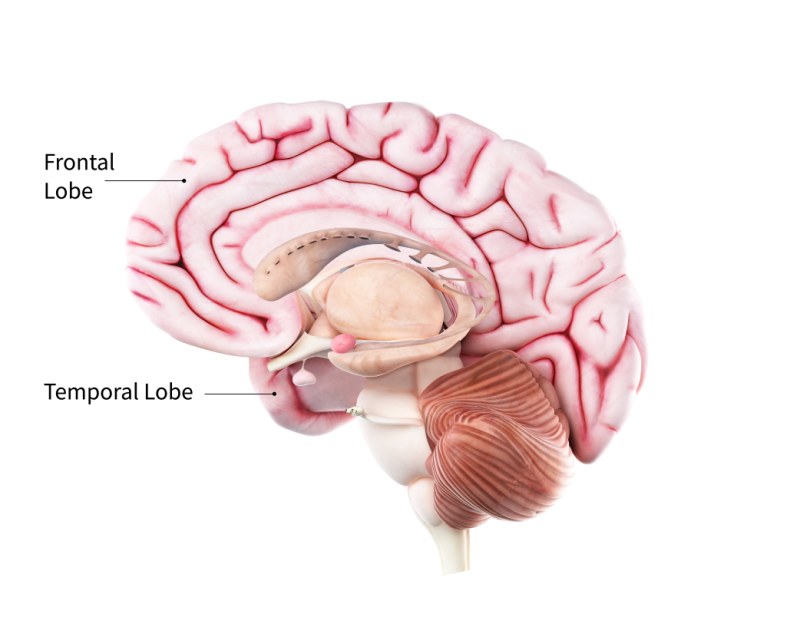 ▲ Collapse
| | | | Adnan Özdemir 
Türkiye
Local time: 14:10
Member (2007)
German to Turkish
+ ...
TOPIC STARTER
--tümü başka yerlerden alınmıştır--
Büyük ve Küçük Harf Ayrımı Hayatımıza Nasıl Girdi?
Yazı: Sibel Çağlar
14/04/2023 - Son güncelleme: 14/04/2023
Hepimiz dilimizi güzel ve doğru bir biçimde kullanmak isteriz. Bunun için de noktalama ve yazım kurallarına elimizden geldiğince dikkat etmeye çalışırız. Örneğin nokta işareti kullandıktan sonra cümleye büyük harf kullanarak başlarız. Yaz�... See more --tümü başka yerlerden alınmıştır--
Büyük ve Küçük Harf Ayrımı Hayatımıza Nasıl Girdi?
Yazı: Sibel Çağlar
14/04/2023 - Son güncelleme: 14/04/2023
Hepimiz dilimizi güzel ve doğru bir biçimde kullanmak isteriz. Bunun için de noktalama ve yazım kurallarına elimizden geldiğince dikkat etmeye çalışırız. Örneğin nokta işareti kullandıktan sonra cümleye büyük harf kullanarak başlarız. Yazının devamında da küçük harf kullanırız. Yine özel isimlerin ilk harfi büyük harf olur. Bunda ne var ki diye düşünebilirsiniz.
Ancak biraz geçmişe baktığınız zaman büyük ya da küçük harf biçiminde bir ayrım olmadığını göreceksiniz. Üstelik günümüzde dahi, Hint, Çin ve Japon alfabeleri dahil olmak üzere bazı Doğu ve Asya yazı sistemlerinde büyük ve küçük harfler arasında ayrım yoktur. Ek olarak, Almancada özel adların yalnızca baş harfi değil, tüm harfleri büyük yazılmaktadır.
Büyük ve Küçük Harf
Görselde de gördüğünüz gibi bir çok dilde büyük, küçük harf ayrımı mevcut değildir.
Kısacası büyük ve küçük harf kullanılması ile ilgili bugüne kadar öğrenmiş olduğunuz kurallar dünyanın bir çoğunu bağlamaz. O zaman neden İngilizce’de ya da Türkçe’de bu kurala uyuyoruz.
İnsanlık Büyük Harfler İle Küçük harflerden Önce Tanıştı
İnsanlar yaklaşık 50.000 yıl önce konuşarak iletişim kurmaya başladılar. Ancak yazı son 5.000 yılda hikayemize dahil oldu. Zaman içinde Mezopotamya’da, Mısır’da, Çin’de ve Mezoamerika’da (şimdi Orta Amerika dediğimiz yerin yakınında) yaşayan insan topluluklarının her biri birbirinden bağımsız olarak kendi yazı türlerini icat etti.
Ancak erken yazı sistemleri, hiyeroglif olarak bilinen piktografik sembollere veya bir kalemin yumuşak kile bastırılmasıyla elde edilen çivi yazısına dayanıyordu. Medeniyetler ilerledikçe insanlar kelimeleri temsil etmek için çok daha küçük sembollerin kullanmanın mümkün olduğunu keşfetmeye başladılar. İlk alfabe, yaklaşık yedi yüz yıl sonra Fenikeliler geliştirdi.
Tamamı ünsüz 22 harften oluşan bu alfabe, Levant, İber yarımadası, Kuzey Afrika ve Güney Avrupa dahil olmak üzere tüm Akdeniz’de kullanılmaya başlandı. Gördüğünüz gibi bu alfabe tamamen büyük harflerden oluşmaktaydı.
Fenike alfabesi olarak bilinen Proto-Kenan alfabesi ilk alfabe olarak kabul edilmektedir. Arapça, Kiril alfabesi, Yunanca, İbranice, Latince ve muhtemelen Brahmik dahil olmak üzere en modern alfabelerin atasıdır. Hem Kuzey Sami hem de Fenike alfabesi – bugünkü İbranice ve Arapça gibi – sağdan sola yazılmıştır.
Küçük Harflerin Ortaya Çıkışı
Bir Antik Roma yazıtı gördüyseniz, muhtemelen eşit büyüklükte büyük harflerle oyulmuş olduğunu fark etmişsinizdir. Bu yazı, Roman majuscule olarak bilinmektedir. Majuscule, tamamı büyük harflerle yazılmış bir yazı anlamına gelir.
Ancak Roma’nın düşüşünden sonra, Orta Çağ’ın başlarındaki birçok Latince metin, daha yuvarlak bir formda uncial yazı olarak bilinen bir stil kullandı. Bunun bir örneğini aşağıda görmektesiniz.
Aynı zamanlarda Yarı onsiyal olarak bilinen yeni yazı türü daha gelişecekti. Bu yazı, bazı harflerin şeklini günümüzün küçük harflerine benzeyecek şekilde değiştirdi. Bu iki yazı biçimi de ortaçağ boyunca yaygın biçimde kullanılacaktı.
Ancak bugün kullandığımız küçük harflerin izleri, Fransız Kralı Charlemagne’nin sarayında asıl karşımıza çıkar. Bu dönemde katipler çoğu zaman ortaçağ el yazmalarını gözden geçiriyorlardı. Ancak bir kitabın müsveddesini elle kopyalamak uzun zaman alıyordu. Bu nedenle de daha basit bir harf kullanmayı tercih ettiler. Harflerin bu daha küçük versiyonları zamanla küçük bir harf grubuna dönüştü.
Bununla birlikte, 1300’den önce, çoğu Avrupa dilinde büyük harf kullanımı kuralları yoktu. Bu nedenle yazıdaki bu değişim, dilden çok el yazısındaki bir gelişmeydi. 1439’da Johannes Gutenberg tipo baskı sürecini Avrupa’ya tanıttı ve icadı hızla yayıldı. Gutenberg’in önemli buluşu, “hareketli / çıkarılabilir harf sistemi” aslında büyük küçük harf ile ilgili kullanım alışkanlıklarımız da etkileyecekti.
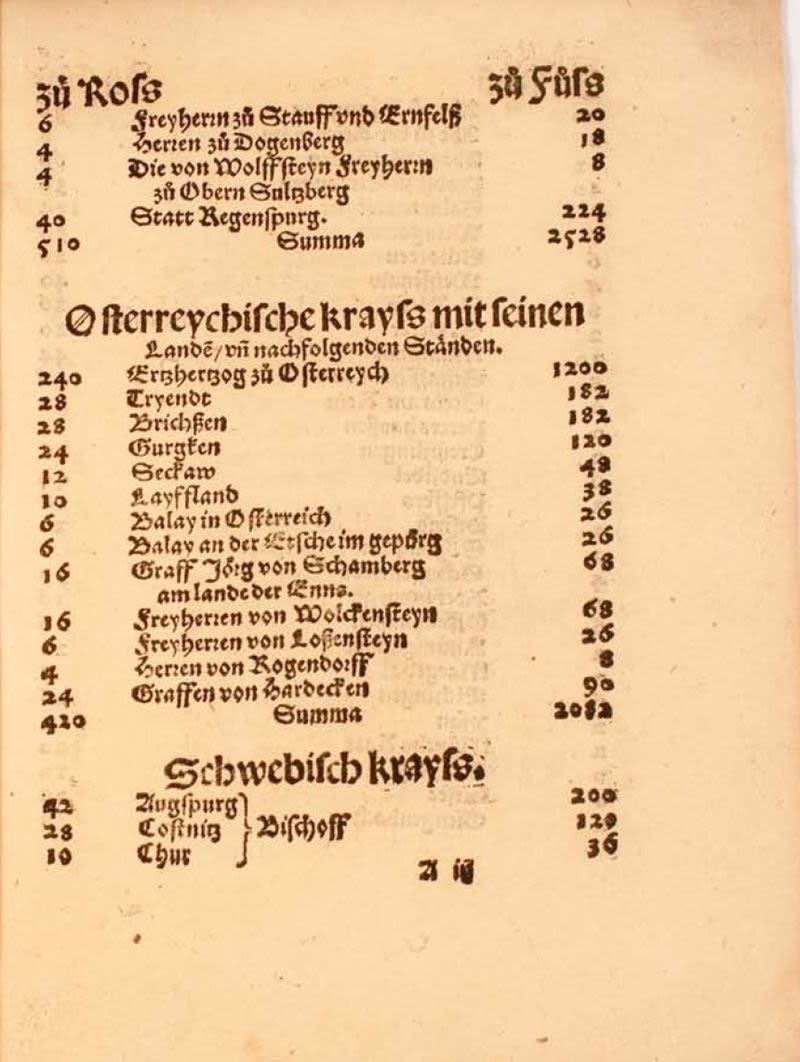
Büyük Ve Küçük Harfler İle İlgili Kurallar Hayatımıza Nasıl Girdi?
İlk matbaacılar, harfleri ve sembolleri sıralamak için pek çok küçük bölmesi olan düz tepsiler kullanıyorlardı. Bunları da raflarda saklıyorlardı. Baskı işini hızlandırmak için de kendilerince bir teknik geliştirmişlerdi. Buna göre büyük harfler üst raflarda yer alıyordu. Daha küçük harfler ise alt raflarda yer alıyordu.
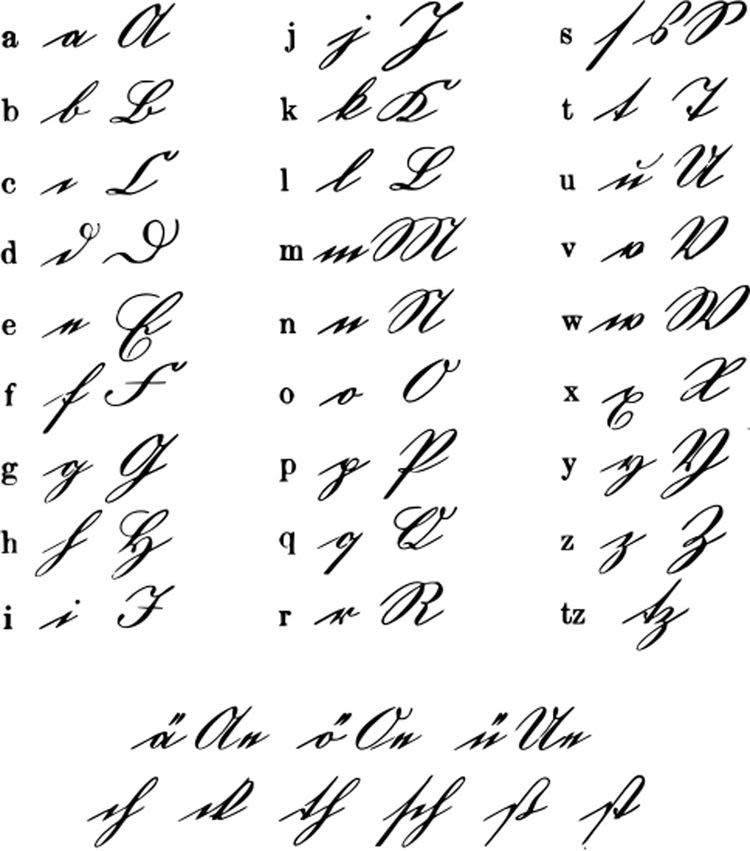
Sırasıyla majuscule ve minuscule harflerine dönük düşünülen bu harf depolama sistemi zaman içinde büyük ve küçük harflere yol açtı. Bu terimler ise ilk kez 18. yüzyılda kullanılacaktı. Daha sonrasında da okumada kolaylık sağladığı için hızla yaygınlaşacaktı.
Bu dönem aynı zamanda İngiliz dili için gramer standardizasyonu zamanıydı. Bu nedenle, büyük ve küçük harfler günümüze bildiğimiz dilbilgisi kuralları ile bu süreçte birleşti. İlerleyen süreçte de ülkemiz de dahil olmak üzere dünyanın büyük bir kesimi tarafından kabul edildi.
Kaynaklar ve ileri okumalar
Uppercase and Lowercase: An Etymological Tale of Two Scripts. Yayınlanma tarihi: 30 Eylül 2020; Bağlantı: https://mymodernmet.com/uppercase-lowercase-letters/?
Why Are There UPPERCASE and lowercase Letters? Bağlantı: https://www.youtube.com
Why Are There Uppercase and Lowercase Letters? Bağlantı: https://wonderopolis.org/
------
Yeri: https://www.matematiksel.org/buyuk-ve-kucuk-harf-ayrimi-hayatimiza-nasil-girdi/
---------------------------------------------------------------------

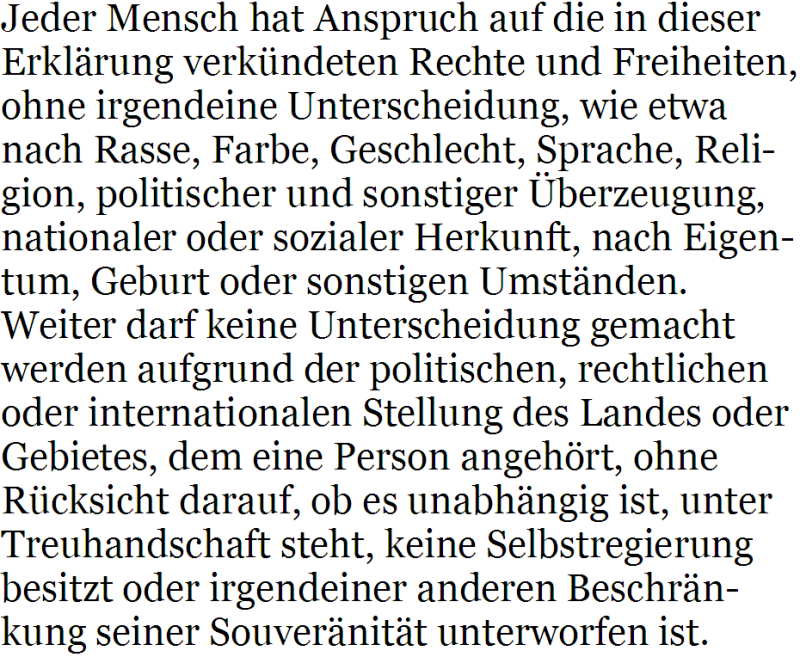
▄▄▄▄▄▄▄▄▄▄▄▄▄▄▄▄▄▄▄▄▄▄▄▄▄▄▄▄▄▄▄▄▄▄▄▄▄▄▄▄▄▄▄▄▄▄▄▄▄▄▄▄▄▄▄▄▄▄▄▄▄▄▄▄▄▄▄▄▄▄▄▄▄▄▄▄▄▄▄▄
∞∞∞∞∞∞∞∞∞∞∞∞∞∞∞∞∞∞∞∞∞∞∞∞∞∞∞∞∞∞∞∞∞∞∞∞∞∞∞∞∞∞∞∞∞∞∞∞∞∞∞∞∞∞∞∞∞
Öğrenmeyi Öğrenmek: Metabilişsel Düşünme Nedir?
Yazı: Gamze Dönmez
16/10/2020 - Son güncelleme: 11/04/2023
Herhangi bir konuda, bilgi edinmek için nasıl bir yol izleyeceğinizi bilmediğiniz zamanlar oldu mu? Ya da herhangi bir bilgiyi zihninize nasıl yerleştireceğinizi kolayca öngördüğünüz zamanlar?
Bu yazımızda, öğrenmemiz gereken şeyleri fark etmeyi ve öğrenmek için neler yapmamız gerektiğini düşünebilmeyi inceleyeceğiz. Bunun içinde sizleri Metabilişsel Düşünme (Üst Bilişsel Düşünme) kavramı ile tanıştıracağız. Keyifli okumalar!
Metabilişsel Düşünme Yani Düşünme Hakkında Düşünme Nedir?
Türkçedeki karşılığı çok tartışılan ve bu yüzden bilişsel farkındalık, üst biliş, yürütücü biliş ve biliş ötesi gibi ifade edilen metabilişsel kavramı, İngilizce metacognition kavramına karşılık gelmektedir.
Biliş, bir şeyin farkında olma onu anlama; üst biliş ise onu nasıl öğrendiğinin farkında olmaktır. Bu nedenle Metabilişsel Düşünme en kısa biçimde, kişinin kendi düşünme süreçlerinin farkında olması ve bu süreçleri kontrol edebilmesi olarak tanımlanmaktadır.
Kişi, bir konu hakkında: “Ne biliyorum?”, “Daha neler bilmem gerekli?”, “Etkili öğrenmek için kullanmam gereken stratejiler nelerdir?” şeklinde düşünmeye başladığı zaman üst bilişsel düşünmeye başlamış demektir.
Kavramı literatüre kazandıran psikolog John Flavell’fit. Kendisi üstbilişsel farkındalığı, birinin yeteneklerini anlaması, kontrol etmesi ve en yüksek seviyede öğrenmek için sahip olduğu bilişsel süreçleri harekete geçirmesi olarak tanımlamaktadır.
Flavell üstbilişi; üstbilişsel bilgi, üstbilişsel deneyimler, hedefler/görevler ile eylemler/stratejiler olmak üzere dört öğeye ayırmıştır. Şekilde de görüleceğiniz gibi bu dört öğe bilişin kontrolü sürecinde sürekli etkileşim halindedir.
Flavell üstbilişsel bilgiyi de kendi içinde üçe ayırmıştır. Burada birey değişkenler, bireyin bir öğrenci olarak kendisiyle ilgili inançları ve kendisi hakkındaki bilgisidir. Görev değişkenleri, bireyin bir görevin gerektirdiklerine yönelik sahip olduğu bilgidir. Strateji ise bireyin, bir görevi yerine getirirken ya da bir problemi çözerken kullanabileceği stratejiler hakkındaki bilgisidir.
Modeldeki Üstbilişsel deneyimler, bilişsel bir deneyime eşlik eden deneyimler ve o deneyime ait hislerdir. Örneğin, öğrencinin yeni bir matematik formülünü okuduktan sonra kafasının karıştığını hissetmesi üstbilişsel bir deneyimdir. Bu deneyimler öğrencilerin ilgisini ve gelecekteki benzer öğrenmelerini de etkileyecektir.
Modeldeki bir diğer öğe olan hedefler veya görevler bilişsel bir eylemin hedeflerini ya da sonuçlarını tanımlamayı gerektirir. Stratejiler ise bilişin planlanmasını, izlenmesini ve düzenlenmesini gerektirir. Örneğin bir strateji, öğrencinin bir matematik formülünü nasıl çalıştığını ve nasıl uygulanması gerektiğini anlamada öğrenciye yardımcı olacaktır.
Öğrenme Stratejileri Alanında Metabiliş Nedir?
Son yıllarda eğitimde öğrenmeyi öğrenme, etkin öğrenme, kendi kendine öğrenme gibi kavramların ön plana çıktığı görülmektedir. Bu bağlamda, metabilişsel düşünme kavramı, öğrencinin kendi kendine öğrenme yetisini kazanmada öğrenciye destek olan bir unsurdur.
Konu ile ilgili yapılan çalışmalarda da metabiliş ve öz düzenleme arasında pozitif bir ilişki bulunmuştur. Metabilişsel stratejileri kullanan öğrencilerin önceki başarılarından veya sınav kaygısından bağımsız olarak zor veya ilgilerini çekmeyen bir akademik görev karşısında daha ısrarcı davrandıkları görülmüştür.
Metabilişsel Düşünme Nasıl Gelişir?
Öğrencilerin metabilişsel yeteneklerini geliştirmek için okul uygun bir ortamdır. Bu ortamı yaratmak için, öğretmenler ve öğrenciler, bir düşünme dili geliştirmelidir. Öğretmenler ‘strateji’, ‘süreç’ ve ‘metabilişsellik’ gibi terimleri sık kullanmalıdır. Ayrıca, bunların önemini öğrencilere aktarmalı ve etkin öğrenme için önemli olan süreçleri vurgulamalıdır.
Öğrencilerin tutacakları öğrenme günlükleri, kullandıkları ya da kullanabilecekleri stratejileri belirlemelerine ve sonra da bunları değerlendirmelerine yardımcı olacaktır. İpuçları ya da ‘Bundan sonra ne yapabilirsin?’ ‘Stratejilerin ne kadar iyi işliyor?’ gibi sorular, öğrencilere metabilişsel düşünme altyapısı sağlayacaktır.
Metabilişsel öğretime yönelik kaynaklar inceledikleri alandaki ünlü uzmanların biyografileri, günlükleri, mektupları ve diğer kişisel yazıları olabilir. Efsane düşünürlerin problem çözme stratejilerine maruz kalma, öğrenciler için ilham verici ve bilgilendirici olur. Ayrıca ‘İlk önce ne yapabilirsin?’, ‘Başka ne deneyebilirsin?’ ve ‘Stratejin ne kadar iyi işliyor?’ gibi sorular kullanmakta önemlidir.
Sonucunda bu sorular öğrencilere çalışırlarken, düşünme hakkında düşünmelerini hatırlatır. Denildiği gibi düşünmek zor bir sanattır. Ancak bir kere bu konuda uzmanlaştıktan sonra da hiçbir şey eskisi gibi olmayacaktır.
---------
Eleştirel Düşünme Becerileri Nedir ve Nasıl Geliştirilir?
İlk 20 Saat Kuralı Nedir? 20 Saatte Öğrenme Nasıl Mümkün Olabilir?
Yabancı Dil Öğrenmeden Olmaz! Peki Hangi Dilleri Öğrenmek Daha Kolay Veya Daha Zordur?
Hipnopedi Nedir? Uyurken İngilizce Ya da Başka Bir Şey Öğrenmek Mümkün Olabilir mi?
Kaynaklar ve ileri okumalar
Marzano, Robert J. & Educational Resources Information Center (U.S.). (1998). A theory-based meta-analysis of research on instruction. Aurora, Colo. : [Washington, DC] : Mid-continent Regional Educational Laboratory ; U.S. Dept. of Education, Office of Educational Research and Improvement, Educational Resources Information Center
Metabilişsel öğrenme stratejileri; https://dergipark.org.tr
Pegem Akademi Yay. , Öğretim İlke ve Yöntemleri – Metabilişsel Düşünme / 2015, Ankara
Yeri: https://www.matematiksel.org/ogrenmeyi-ogrenmek-metabilissel-dusunme-nedir/
▄▄▄▄▄▄▄▄▄▄▄▄▄▄▄▄▄▄▄▄▄▄▄▄▄▄▄▄▄▄▄▄▄▄▄▄▄▄▄▄▄▄▄▄▄▄▄▄▄▄▄▄▄▄▄▄▄▄▄▄▄▄▄▄▄▄▄▄▄▄▄▄▄▄▄▄▄▄▄▄
∞∞∞∞∞∞∞∞∞∞∞∞∞∞∞∞∞∞∞∞∞∞∞∞∞∞∞∞∞∞∞∞∞∞∞∞∞∞∞∞∞∞∞∞∞∞∞∞∞∞∞∞∞∞∞∞∞
Modern Zaman Takıntılarımızdan Biri Olan Oniomania (Onyomani) Nedir?
Yazı: Sibel Çağlar
18/04/2023 - Son güncelleme: 18/04/2023
Hepimiz az ya da çok alışveriş yapmayı severiz. İmkanlarımız el verdiği ölçüde yeni bir şeylere sahip olmak geçici de olsa bizi mutlu eder. Ancak bir sorun var. Araştırmalar oniomania (onyomani) yani diğer adıyla kompulsif harcama bozukluğunun günümüzde her zamankinden daha yaygın olduğunu gösteriyor.
Bu cümle üzerine hemen kendinizi eleştirmeye başlamayın. Onyomani olan bir kişi ile biraz fazla alışveriş yapmayı seven biri arasındaki farkın ne olduğunu öncelikle anlayın. Bir çok kişi ikisinin de aynı olduğunu kabul eder. Bununla birlikte aslında birbirinden ayrılmaları oldukça kolaydır.
Alışveriş yapmaktan hoşlanan çoğu insan satın alma işlemleriyle ilgilenir. Oysa ki takıntılı alıcılar, satın alma eyleminin kendisine takıntılıdır.
Oniomania (Onyomani) Nedir?
Alışveriş bağımlılığında kişiler, rutin hayatından uzaklaşmak, kendisiyle ilgili hoş olmayan düşünceleriyle yüzleşmemek, gerçek hayattaki rahatsız edici durumlardan kaçmak ve ruh hallerinin düzelmesi için alışverişe yönelebilmektedir.
Alışveriş yapmayı seven insanlar, beğenmedikleri bir ürünü iade edecek ve paraları azaldığında bütçe yapmaya başlayacak kontrole sahip olurlar. Oysa ki bu rahatsızlıktan muzdarip olanlar finansal olarak sorumlu kararlar almanın ötesinde, rasyonel kararlar bile alamazlar. Bu kişiler alışveriş yaparken gerçeklikten koparlar ve neredeyse bir trans haline geçerler.
Bu bilinçsiz harcama durumu, kişideki kaygı ve depresyon duygularını hafifletir. Ancak elbette bu hafifletme geçicidir. Kısa sürede kişi karamsar, sinirli hale gelir ve özgüvenini kaybeder. Bundan kurtulmanın tek yolu ise elbette yeniden alışveriş yapmaktır. ( Ek okumalar: Obsesyon (Saplantı) Nedir? Beyinlerimiz Neden Bir Konuya Takılıp Kalır?)
Döngü bu biçimde devam eder. Onyomani tedavi edilmezse finansal sağlığınız ve zihinsel sağlığınız üzerinde yıkıcı bir etki bırakabilir. Kişisel olarak onyomani sorunu yaşamasanız bile, harcama alışkanlıklarınız hakkında eleştirel bir şekilde düşünmek, kişisel mali durumunuzla ilgili daha sorumlu olmanıza yardımcı olabilir.
Alışveriş Bağımlılığı Yani Onyomani İle Nasıl Tanıştık?
Alışveriş, modern yaşamda yaygın bir davranıştır. İnsanlar ihtiyaçlarını satın almak veya rahatlamak ve kendilerini ödüllendirmek için alışveriş yaparlar. Bununla birlikte, alışveriş aşırı ve yönetilemez hale geldiğinde kişinin hayatı için zararlı ve yıkıcı bir davranış haline gelir. Bu da “kompulsif satın alma”ya yol açar.
1905 gibi erken bir tarihte bilimsel literatürde benzer durumlar tanımlansa da bozukluk son yirmi yıla kadar psikologlar ve araştırmacılar tarafından pek de ilgi görmedi. Ancak küresel kapitalizmin zaferi ve sosyal medya platformlarının yükselişi, konuyu giderek cazip hale getirdi.
Sonucunda günümüzde birçok araştırmanın konusu olmaya başladı. Bu arada oniomania (onyomani) sözcüğü Yunancada “onios” satılan, “mania” ise çılgınlık anlamına gelmektedir.
Onyomani konusu, çevrimiçi alışverişin her zamankinden daha fazla sayıda kişi için tek seçenek olduğu COVID salgını sırasında daha da net belirginleşti. Anket sonuçlarından da gördüğümüz kadarıyla insanlar karantina sırasında bozulan psikolojilerini alışveriş yaparak iyileştirmeye çalıştılar.
Konu ile ilgili araştırmalar yeni yapılmaya başlandığı için net sayılardan bahsetmek olası değil. Ancak Amerika Birleşik Devletleri’nde yapılan bir araştırmaya göre bu durum nüfusun %8’ini etkilemektedir
Aynı çalışma, tartışmalı olmasa da, bu kişilerin kabaca %90’ının kadın olduğundan bahsetmektedir. Daha sonraki araştırmalar bu durumun her iki cinsiyeti de eşit biçimde etkilediğini ortaya koymuştur.
Kadınların vurgulanma sebebi olarak da, kadınların sorunun farkında olması, tedavi olma amacı ile arayışa girmesi ancak erkeklerin bu durumun kendilerini de etkilediğini kabul etmemesi olarak düşünülmektedir.
Onyomoni Tedavisi Mümkün mü?
Kişiler yaşadıkları olumsuz duygularla baş etme yöntemi olarak veya benlik saygısında yaşanan azalmanın etkisiyle bu aşırı davranışlara yönelebilmektedir. Sosyal statü sağlama arzusu da kişileri kompulsif satın alma davranışına iten sebepler arasında bulunmaktadır.
Aslında konu ile ilgili araştırmalar yakın zamanda yapılmaya başlandığı için tedavi konusunda da net cevaplara sahip değiliz. Kişilerde satın alma sürecinde aşırı davranışların gerçekleşmesini tetikleyen birçok neden bulunmaktadır. Bu nedenlerin azaltılması sorunun dolaylı bir biçimde azalmasına da neden olacaktır.
Ayrıca onyomoni’nin, finansal ve psikolojik sıkıntıya neden olduğu kanıtlanmış olsa da henüz bir hastalık olarak kabul edilmemektedir. Neyse ki kompulsif satın alma ve biriktirme gibi davranışsal bağımlılıklar, özellikle gelişmiş ülkelerde giderek daha fazla tanınmaktadır.
Kesin sonuç bulunana kadar öneriler durumun farkına varma ve satın alma dürtünüzü sınırlamaya çalışmak biçiminde olacaktır. Bazı takıntılı harcamacılar, bir şeyleri satın almayı tamamen bırakmaya çalışır, ancak bu genellikle iyi sonuçlanmaz. Bunun yerine bazı sınırlamalar getirmeniz daha faydalı olacaktır.
Örneğin kredi kartı limitinizi düşürmek ya da kullanmayı tamamen bırakmak akıllı bir yöntem olacaktı. Çünkü kredi kartı kullanmanın kişilerin harcama alışkanlıklarını değiştirdiği günümüzde net biçimde bilinmektedir. Göz atmak isterseniz: Son Kuruş Etkisi Nedir? Cebimizdeki Son Parayı Harcamak Neden Acı Verir?
-------
Kaynaklar ve ileri okumalar
How to overcome “oniomania” — compulsive spending disorder. Yayınlanma tarihi: 13 Nisan 2023; Bağlantı: https://bigthink.com/sponsored/oniomania-compulsive-spending/
‘Going cashless’ may make you an ‘Oniomaniac’. Yayınlanma tarihi: 26 Şubat 2017; Bağlantı: https://economictimes.indiatimes.com
Granero R, Fernández-Aranda F, Mestre-Bach G, Steward T, Baño M, Del Pino-Gutiérrez A, Moragas L, Mallorquí-Bagué N, Aymamí N, Gómez-Peña M, Tárrega S, Menchón JM, Jiménez-Murcia S. Compulsive Buying Behavior: Clinical Comparison with Other Behavioral Addictions. Front Psychol. 2016 Jun 15;7:914. doi: 10.3389/fpsyg.2016.00914. PMID: 27378999; PMCID: PMC4908125.
Front. Psychol., 09 December 2021; Sec. Psychopathology; Volume 12 – 2021 | https://doi.org/10.3389/fpsyg.2021.568041
Marcinko D, Karlović D. Oniomania–successful treatment with fluvoxamine and cognitive-behavioral psychotherapy. Psychiatr Danub. 2005 Jun;17(1-2):97-100. PMID: 16395851.
-------
Size Bir Mesajımız Var!
Matematiksel, 2015 yılından beri yayında olan ve Türkiye’de matematiğe karşı duyulan önyargıyı azaltmak ve ilgiyi arttırmak amacıyla kurulmuş bir platformdur. Sitemizde, öncelikli olarak matematik ile ilgili yazılar yer almaktadır. Ancak bilimin bütünsel yapısı itibari ile diğer bilim dalları ile ilgili konular da ilerleyen yıllarda sitemize dahil edilmiştir. Bu sitenin tek kazancı sizlere göstermek zorunda kaldığımız reklamlardır. Yüksek okunurluk düzeyine sahip bir web sitesi barındırmak ne yazık ki günümüzde oldukça masraflıdır. Bu konuda bizi anlayacağınızı umuyoruz. Ayrıca yazımızı paylaşarak veya Patreon üzerinden ufak bir bağış yaparak da büyümemize destek olabilirsiniz. Matematik ile kalalım, bilim ile kalalım.
Matematiksel
--------
Yeri: https://www.matematiksel.org/modern-zaman-takintilarimizdan-biri-olan-oniomania-onyomani-nedir/

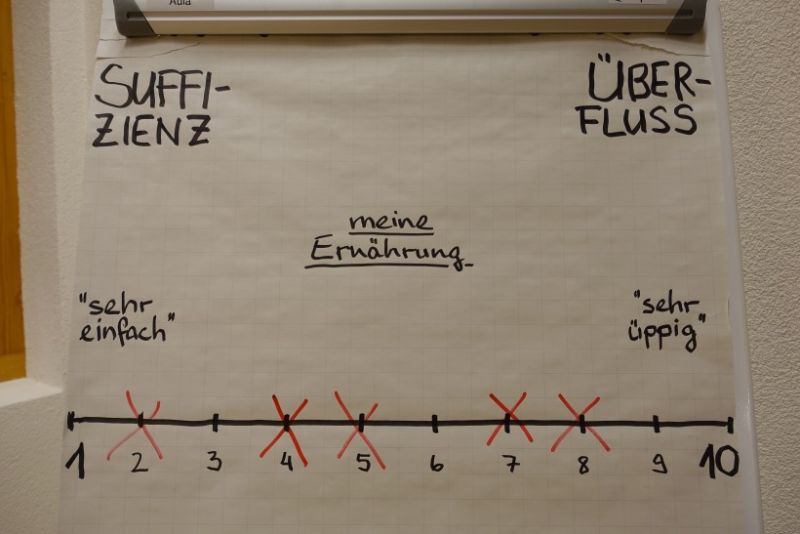





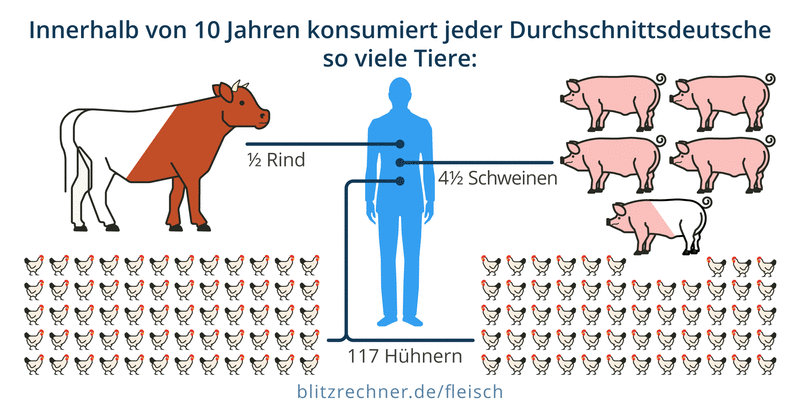

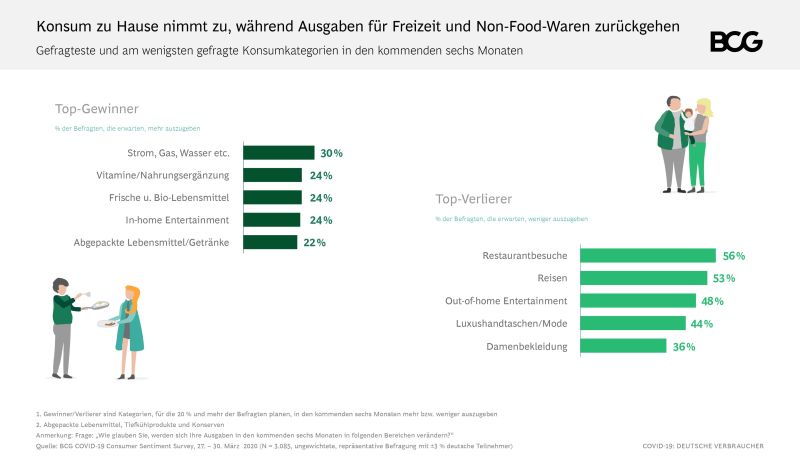
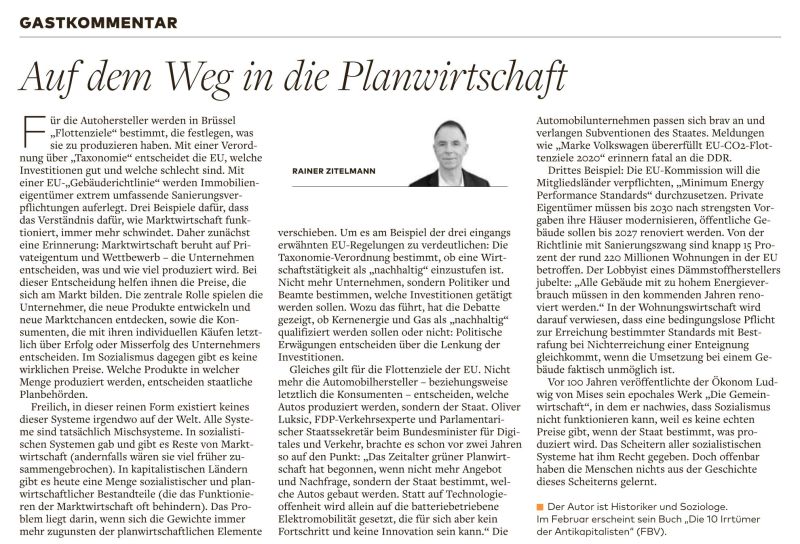






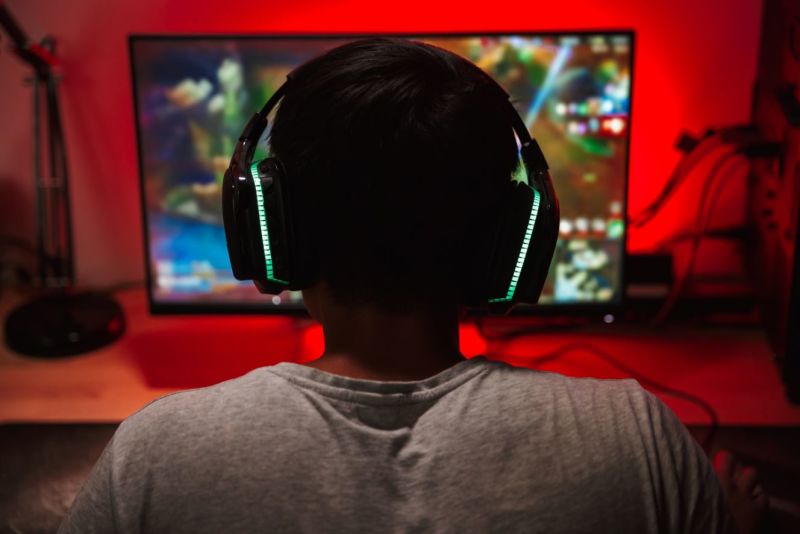


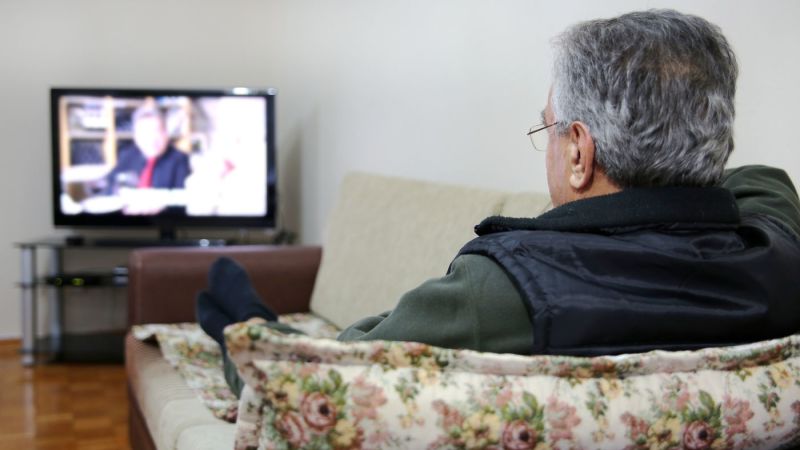


[Edited at 2023-04-19 11:51 GMT] ▲ Collapse
| | | | Adnan Özdemir 
Türkiye
Local time: 14:10
Member (2007)
German to Turkish
+ ...
TOPIC STARTER
--Tümüyle başka başka yerlerden alındı--
Nose picking: The health reasons you shouldn’t indulge in it
The habit is even grosser than you thought
Yazı: Gabriel Filippelli, Michael Gillings, Mark Patrick Taylor
August 20, 2022 at 7:32 a.m. EDT
------
Come on, you know you do it.
Whether you’re in the trusted company of your spouse or sneaking a quick one when you think nobody’s looking, w... See more --Tümüyle başka başka yerlerden alındı--
Nose picking: The health reasons you shouldn’t indulge in it
The habit is even grosser than you thought
Yazı: Gabriel Filippelli, Michael Gillings, Mark Patrick Taylor
August 20, 2022 at 7:32 a.m. EDT
------
Come on, you know you do it.
Whether you’re in the trusted company of your spouse or sneaking a quick one when you think nobody’s looking, we all pick our noses. Other primates do it, too.
The social stigma around nose picking is widespread. But should we really be doing it — and what should we do with our boogers?
We’re scientists who have researched the environmental contaminants — in our homes, our workplaces, our gardens — so we have some insight on what you’re really jamming up there when your finger is slotted satisfyingly into your sniffer.

What is in a booger?
Nose picking is a natural habit — children who have not yet learned social norms realize early on that the fit between their forefinger and a nostril is pretty good. But there is lot more than just snot up there.
During the approximately 22,000 breath cycles per day, the booger-forming mucus up there forms a critical biological filter to capture dust and allergens before they penetrate our airways, where they may cause inflammation, asthma and other long-term pulmonary issues.
Cells in your nasal passage called goblet cells (named after their cuplike appearance) generate mucus to trap viruses, bacteria and dust containing potentially harmful substances such as lead, asbestos and pollen.
Nasal mucus and its antibodies and enzymes are the body’s front line immune defense system against infections.
The nasal cavity also has its own microbiome. Sometimes these natural populations can be disturbed, leading to various conditions such as rhinitis. But in general, our nose microbes help repel invaders, fighting them on a mucus battlefield.
The dust, microbes and allergens captured in your mucus eventually get ingested as that mucus drips down your throat.
This is typically not an issue, but it can exacerbate environmental exposure to some contaminants.
For instance, lead — a neurotoxin prevalent in house dust and garden soils — enters children’s bodies most efficiently through ingestion and digestion.
So, you might worsen particular environmental toxic exposures if you sniff or eat boogers up instead of blowing them out.
What does the science say about the risks of booger-mining?
Golden staph (Staphylococcus aureus, sometimes shortened to S. aureus) is a germ that can cause a variety of mild to severe infections. Studies show it is often found in the nose (this is called nasal carriage).
One study found that nose picking is associated with S. aureus nasal carriage, meaning the role of nose picking in nasal carriage might be causal in certain cases. Overcoming the habit of nose picking might aid S. aureus decolonization strategies.
Nose picking might also be associated with an increased risk of golden staph transmission to wounds, where it poses a more serious risk.
Sometimes, antibiotics do not work on golden staph. One paper noted that growing antibiotic resistance calls for health-care providers to assess patients’ nose-picking habits and educate them on effective ways to prevent finger-to-nose practices.
Nose picking could also be a vehicle for transmission of Streptococcus pneumoniae, a common cause of pneumonia among other infections.
In other words, sticking a digit in your nose is a great way to jam germs further into your body or spread them around your environment with your snotty finger.
There is also the risk of gouging and abrasions inside the nostrils, which can allow pathogenic bacteria to invade your body. Compulsive nose picking to the point of self-harm is called rhinotillexomania.
Well, I picked. Now what?
Some people eat them (the technical term is mucophagy, meaning “mucus feeding”). Apart from booger eating being disgusting, it means ingesting all those inhaled mucus bound germs, toxic metals and environmental contaminants discussed earlier.
Others wipe them on the nearest item, a little gift to be discovered later by someone else. Gross, and a great way to spread germs.
Some more hygienic people use a tissue for retrieval, and dispose of it in a trash can or toilet afterward.
That’s probably among the least-worst options, if you really must pick your nose. Just make sure you wash your hands extra carefully after blowing or digging in your nose, given that until mucus has completely dried, infectious viruses can remain on the hands and fingers.
No advice in the world will keep you from digging away
In secret, in the car or on napkins, we all do it. And truth be told, it is so very satisfying.
But let’s honor the tireless labor done by our remarkable noses, mucus and sinus cavities — such amazing biological adaptations — and remember they’re trying hard to protect you.
Your snoz is working overtime to keep you healthy, so don’t make it any harder for it by jamming your grubby fingers up there. Don’t be a grub — blow discreetly, dispose of the tissue thoughtfully and wash hands afterward.
--------------------------
Gabriel Filippelli is the chancellor’s professor of Earth sciences and executive director at Indiana University Environmental Resilience Institute. Michael Gillings is professor of molecular evolution at Macquarie University in Sydney. Mark Patrick Taylor is chief environmental scientist at EPA Victoria and honorary professor of environmental science and human health at Macquarie University.
This article was originally published on theconversation.com.
Yeri: https://www.washingtonpost.com/health/2022/08/20/nose-picking-germs-gross/
▄▄▄▄▄▄▄▄▄▄▄▄▄▄▄▄▄▄▄▄▄▄▄▄▄▄▄▄▄▄▄▄▄▄▄▄▄▄▄▄▄▄▄▄▄▄▄▄▄▄▄▄▄▄▄▄▄▄▄▄▄▄▄▄▄▄▄▄▄▄▄▄▄▄▄▄▄▄▄▄
∞∞∞∞∞∞∞∞∞∞∞∞∞∞∞∞∞∞∞∞∞∞∞∞∞∞∞∞∞∞∞∞∞∞∞∞∞∞∞∞∞∞∞∞∞∞∞∞∞∞∞∞∞∞∞∞∞
Ist es gefährlich, in der Nase zu bohren?
Wer es tut, wird es kaum zugeben. Denn Popeln schickt sich nicht. Aber was spricht jenseits schlechter Manieren eigentlich dagegen, die Nase mit dem Finger von ihren Sekreten zu befreien?
Yazı: * Uta Schindler - 22.04.2023
--------
//Weil Nasenbohren einen äußerst schlechten Ruf genießt, tun die meisten Menschen es, wenn sie sich unbeobachtet fühlen.///

Beobachtet man kleine Kinder, scheint es eine ganz natürliche Angewohnheit zu sein, in der Nase zu bohren. Sie entdecken schon früh und ohne, dass man es ihnen beibringen müsste, wie gut der Zeigefinger ins Nasenloch passt. Dort gibt es viel zu erkunden. Gleich hinter dem Nasenloch liegt der Nasenvorhof. Die sich daran anschließende Nasenhöhle ist eine ziemlich feuchte Angelegenheit, da sie vollständig mit Schleimhaut ausgekleidet ist. Die Nasenschleimhaut übernimmt viele wichtige Funktionen. Sie erwärmt die Atemluft auf körpergerechte 32 bis 34 Grad Celsius. Der von ihr gebildete Schleim befeuchtet die eingeatmete Luft und fängt zugleich Schmutz, Staub und andere Partikel ein, bevor diese in die empfindliche Lunge gelangen können. Bewegliche, haarähnliche Fortsätze auf der Nasenschleimhaut, Zilien oder auch Flimmerhärchen genannt, sorgen dafür, dass der Schleim in Richtung Rachen befördert wird.
Trocknet das Sekret aus, können die Flimmerhärchen es nicht mehr transportieren. Ein Popel entsteht. Verursacht wird der eingetrocknete Nasenschleim sowohl von Körperfunktionen wie dem wechselseitigen An- und Abschwellen der Nasenschleimhaut in den beiden Nasenkammern als auch von Umwelteinflüssen wie zum Beispiel trockener Heizungsluft. Unterm Strich gilt: Je näher der Schleim sich an der Nasenöffnung befindet, desto wahrscheinlicher ist es, dass er austrocknet und sich festsetzt.
Ob zähflüssig oder richtig fest: Eingetrockneter Nasenschleim kann ein Fremdkörpergefühl verursachen, ein Jucken auslösen, die Nasenatmung erschweren oder einfach gewaltig stören. Und schon ist er da: der Impuls, den Finger in die Nase zu stecken, um sich des Störenfrieds zu entledigen. Aber was genau macht das Nasenbohren eigentlich so unwiderstehlich?
Wider das gute Benehmen
Wer auf den Reiz des Verbotenen tippt, liegt nicht zwingend richtig. Warum das Nasenpopeln derart verführerisch ist, lässt sich nämlich auch folgendermaßen erklären. Die Bereiche der Großhirnrinde, die dem Empfinden von Hand und Gesicht zugeordnet werden, liegen ziemlich nah beieinander. Diese Nähe erklärt möglicherweise, warum es nicht nur so beruhigend ist, das eigene Gesicht zu berühren, sondern eben auch, den Finger in die Nase zu stecken. Aber nur, weil sich das Nasenbohren befriedigend anfühlt, ist es für andere nicht unbedingt ein angenehmer Anblick. Entsprechend scheint es nicht nur hier zu Lande, sondern in vielen Kulturen weltweit verpönt zu sein.
Wer es dennoch tut, ist zwar nicht in guter, dafür aber in zahlreicher Gesellschaft. In einer Studie, veröffentlicht Mitte der 1990er Jahre im »Journal of Clinical Psychology«, gestanden 91 Prozent der Befragten, regelmäßig in der Nase zu bohren. Angeblich landet der Finger im Schnitt sogar viermal pro Tag in der Nase. Zugegeben, nur wenige wissenschaftliche Studien haben sich bis heute des Phänomens angenommen. Die meisten davon beziehen sich auf psychologische Umfragen und kommen zu dem Schluss, dass Nasenbohren sehr verbreitet ist – wobei sich die meisten Menschen schämen, das offen zuzugeben.
Nasenpopeln ist allerdings keine vornehmliche Eigenart des Menschen. Mindestens elf andere Primatenarten tun es ihm gleich, darunter Schimpansen, Gorillas und Orang-Utans. Während Menschen meist heimlich und höchstens in der eigenen Nase popeln, stecken Weißschulter-Kapuzineraffen auch mal anderen Artgenossen den Finger in die Nase – möglicherweise, so vermutet man, um soziale Bindungen aufzubauen. Im Jahr 2022 beschrieben Forschende der Universität Bern sehr detailreich, wie Aye-Ayes, eine Primatenart aus der Gruppe der Lemuren, in der Nase bohren. Sie verglichen deren Verhalten anschließend mit bereits als nasenbohrend bekannten Primatenarten. Laut Studie eint sie alle eine besonders ausgeprägte Fingerfertigkeit sowie die teilweise beobachtete Vorliebe dafür, die Popel anschließend zu verzehren.
Da es zum Nasenbohren also eine gewisse Fingerfertigkeit braucht, könnte es sich um ein Phänomen handeln, das ausschließlich bei Menschen und eng mit uns verwandten Arten auftritt. Aber wozu ist es gut? Bislang kann die Wissenschaft lediglich darüber spekulieren, ob das Nasenbohren nur dazu dient, die Nase von störenden Schleimansammlungen zu befreien oder auch andere wichtige Funktionen übernimmt.
In der englischsprachigen Literatur hat sich Rhinotillexis als Fachbegriff fürs Nasenbohren durchgesetzt, im Deutschen gibt es dagegen noch keinen speziellen Ausdruck dafür. Anders sieht es mit der wissenschaftlichen Bezeichnung für zwanghaftes Nasenbohren aus, das wird Rhinotillexomanie genannt. Und dann gibt es noch die Mukophagie. Das bedeutet so viel wie »Schleimfressen« und ist der fachlich korrekte Begriff dafür, Popel zu essen. Denn selbst, wenn es kaum einer zugibt: Nicht nur Kinder verspeisen die kleinen Schleimkügelchen. Aber ist der Popelkonsum gefährlich?
Die Risiken der Mukophagie
Den körpereigenen Schleim zu verspeisen, ist an sich nicht besonders risikobehaftet. Mund und Nase sind ohnehin miteinander verbunden, insofern gelangt ständig Nasensekret in den Rachen und wird unbemerkt heruntergeschluckt. Der auf diese Weise verzehrte Schleim unterscheidet sich nur in seiner Konsistenz vom Popel – Ersterer ist eher flüssig als fest und besteht vor allem aus Wasser. Trocknet das Nasensekret aus, bleiben seine übrigen Bestandteile als Popel zurück: Proteine, Salze, Antikörper sowie Spuren von Enzymen und Lipiden. Möglicherweise enthaltene Viren oder Bakterien machen in der Regel nicht krank, weil spätestens die Magensäure die Krankheitserreger eliminiert – falls das der Nasenschleim, der ja Antikörper und Enzyme enthält, nicht bereits erledigt hat.
Einige Forschende vermuten, Popelessen wirke wie eine Art Schluckimpfung und trainiere das Immunsystem. Wissenschaftliche Belege für diese Annahme fehlen allerdings. Auch dass Popel zur Kariesprophylaxe dienen könnten, beruht nicht auf Fakten, sondern einer Zeitungsente – nach deren Erscheinen die Autorinnen der falsch zitierten Studie dem irreführenden Medienbericht lautstark widersprachen.
Bevor man sich den Nasenschleim in den Mund steckt, sollte man sich eher fragen, was einem vorher durch die Nase gegangen sein könnte. Denn im Popel können Schadstoffpartikel aus der Umwelt gebunden sein. Etwa Blei, das manchmal in Hausstaub und Gartenerde vorkommt. Gefährlich kann das vor allem für Kinder werden, die das Schwermetall über den Verdauungstrakt leichter aufnehmen als Erwachsene.
Deutlich größeres Gefahrenpotenzial als der Popel selbst – wenn er nicht gerade mit Umweltschadstoffen belastetet ist – bergen schmutzige Finger und Nägel. Auch wenn die Nasenhöhle von etlichen verschiedenen Mikroorganismen besiedelt ist, kann dieses Mikrobiom durch eingebrachte Keime aus dem Gleichgewicht geraten und damit zu Infektionen und Krankheiten führen. Üblicherweise helfen unsere Nasenmikroben jedoch dabei, Eindringlinge abzuwehren. Gesunde Menschen mit einem stabilen Immunsystem müssen daher in aller Regel nichts Schlimmeres befürchten. Berichte, dass Nasenbohren Hirnhautentzündungen oder gar Alzheimer auslösen könnte, beruhen entweder auf Einzelfällen oder sind als spekulativ zu betrachten. Vor und nach dem Nasenbohren sollte man sich dennoch besser die Hände waschen.
Wer besonders häufig, ausdauernd oder grob in der Nase bohrt, kann allerdings tatsächlich ernsthafte Probleme provozieren: Nasenbluten etwa. Meist stammt die Blutung aus einem Geflecht von besonders nah an der Oberfläche liegenden Gefäßen am Ende der vorderen Nasenscheidewand, dem so genannten Locus Kieselbacchi. Aber auch Krusten, die sich infolge von sehr trockenen Schleimhäuten oder mechanischen Verletzungen bilden, können durch Bohren aufbrechen und bluten. Im schlimmsten Fall verformt sich bei besonders intensiver Krafteinwirkung die Nasenscheidewand oder es entstehen sogar Löcher und Abszesse. Immerhin sollte Popeln – egal wie ausgiebig es betrieben wird – den Geruchssinn nicht beeinträchtigen, da der Teil der Nase, in dem sich die Geruchsnerven befinden, zu weit oben liegt, als dass man ihn mit den Fingern erreichen könnte.
Wem Sicherheit vor Popeln geht, dem sei die Verwendung von speziellen Nasensalben, befeuchtenden Sprays oder Nasenölen empfohlen. Bei regelmäßiger Anwendung können damit selbst sehr trockene Nasen zur popelfreien Zone werden. Ansonsten muss – in unbeobachteten Momenten – eben doch der Finger ran.
------------
*
Uta Schindler
ist Filmautorin und Wissenschaftsjournalistin.
Yazının yeri: https://www.spektrum.de/frage/ist-es-gefaehrlich-in-der-nase-zu-popeln/2131371
▄▄▄▄▄▄▄▄▄▄▄▄▄▄▄▄
∞∞∞∞∞∞∞∞∞∞∞





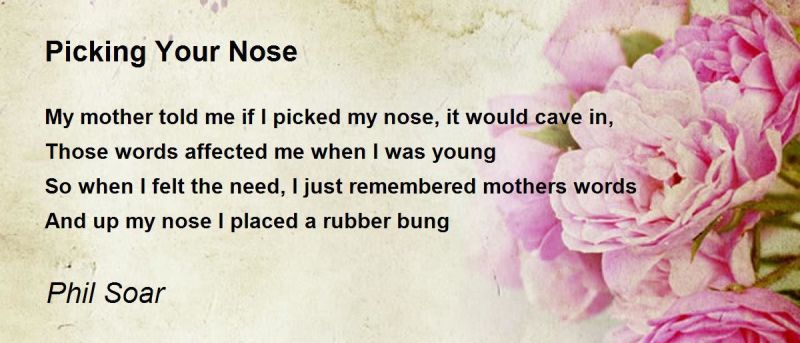








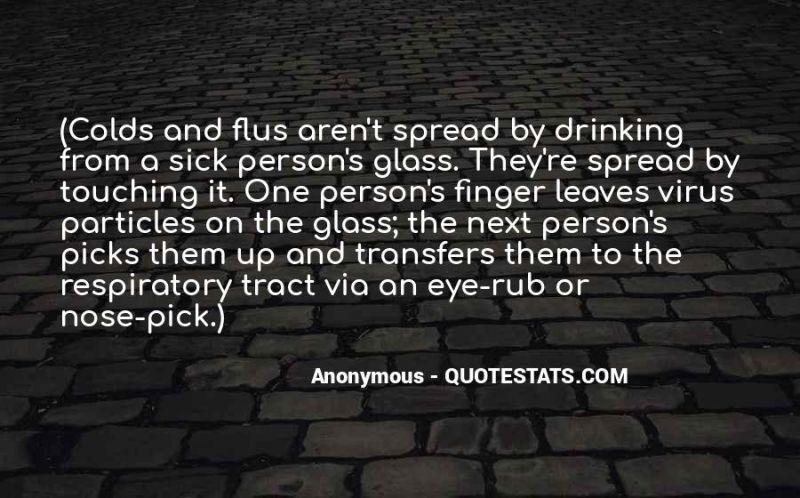




[Edited at 2023-04-24 03:14 GMT] ▲ Collapse
| | | | Adnan Özdemir 
Türkiye
Local time: 14:10
Member (2007)
German to Turkish
+ ...
TOPIC STARTER
--Tümüyle başka başka yerlerden alındı--
Süt fabrikasındaki kazanda banyo yapmıştı! Gözaltına alındı
DHA 05.11.2020 - 13:58 | Son Güncellenme: 05.11.2020 - 17:43
Gelen bir son dakika haberine göre, Konya'da üretim yapan bir süt fabrikasından gelen görüntüler mide bulandırdı. Tesiste Uğur Turgut isimli şahıs süt kazanının içine girerek süt banyosu yaptığı anları kamera kaydına alarak paylaşt�... See more --Tümüyle başka başka yerlerden alındı--
Süt fabrikasındaki kazanda banyo yapmıştı! Gözaltına alındı
DHA 05.11.2020 - 13:58 | Son Güncellenme: 05.11.2020 - 17:43
Gelen bir son dakika haberine göre, Konya'da üretim yapan bir süt fabrikasından gelen görüntüler mide bulandırdı. Tesiste Uğur Turgut isimli şahıs süt kazanının içine girerek süt banyosu yaptığı anları kamera kaydına alarak paylaştı. İnfial yaratan görüntülerle ilgili Tarım ve Orman Bakanlığı ve görüntülerin çekildiği firma açıklama yaptı. İş yeri Tarım ve Orman Bakanlığı'nın talimatı üzerine kapatıldı. Öte yandan olayla ilgili Emre Sayar ve Uğur Turgut'un gözaltına alındığı bildirildi.
Konya Ticaret Odası'nın sicil kaydına göre 10 Mayıs 2019 tarihinde iki ortaklı olarak kurulan bir hayvancılık sanayi ve ticaret limited şirketine ait süt toplama merkezinde, bir işçinin kazan içinde süt banyosu yaptığı ana ait görüntüler U.T. tarafından sosyal medyada paylaşıldı. Hızla yayılan görüntülere tepki yağdı.
FİRMA, İŞÇİ HAKKINDA ŞİKAYETÇİ OLACAK
Firma ortaklarından Ali Osman T., skandal görüntüleri kendisinin de internetten izlediğini ve şoke olduğunu belirtti. Görüntülerde kişi hakkında suç duyurusunda bulunacaklarını belirten Ali Osman T., işçinin banyo yaptığı sıvının süt olmadığını öne sürdü. Ali Osman T., şöyle konuştu:
''Öncelikle üzücü bir durum. Bu şahsın içinde bulunduğu küçük tank süt için değil. Tesisi temizlemek amacıyla kullanılan, deterjan, solüsyon ve dezenfektanları içinde karıştırdığımız tank. Onun içinde temizlik malzemelerini karıştırıp, fayansları temizleriz. Biz de şok olduk. Bu videoyu internette gördük. Bununla ilgili işten çıkarma işlemini başlattık. Bunun özellikle şirketi yıpratma amacıyla yapıldığını düşünüyoruz. Videoya konu olan kişi hakkında da şikayetçi olacağız. Tankın içindeki süt değil. Süt yoğun olur. Suyla karıştırılmış temizlik malzemesi.''
SÜT TOPLAMA MERKEZİ KAPATILDI
Görüntülerin sosyal medyada yayınlanmasının ardından iş yeri Tarım ve Orman Bakanlığı'nın talimatı üzerine kapatıldı. Görüntülerin ardından süt toplama merkezinde denetim yapan Konya Tarım ve Orman Müdürü Ali Ergin, iş yeri hakkında 4 yasal işlem uyguladıklarını belirtti.
Ergin, şunları söyledi:
''Bugün maalesef bizi de üzen bir olay. Sosyal medyada yayınlanan bir süt toplama ünitesinde bir kişinin süt banyosu yapmasıyla ilgili görüntü vardı. Sayın Bakanımız Dr. Bekir Pakdemirli'nin de talimatıyla buraya denetime geldik. Gıda denetim ekiplerimizle birlikte denetimimizi yaptık. Sosyal medyada yayınlanan yeri tespit ettik. Bununla ilgili dört konuda işlem yapacağız. Birincisi, insan sağlığını riske soktuğu acil durumlardan dolayı 5996 Sayılı Kanununun 41'inci maddesinin 'e' bendine göre faaliyetten men cezası uygulayacağız. İkincisi 13 bin 934 lira para cezası uygulayacağız. Üçüncüsü, kişilerin sağlıklarını riske soktuğu için Cumhuriyet Savcılığı'na suç duyurusunda bulunulacak. Dördüncü olarak da var olan sütlerin imhası ve işletme onay belgelerinin iptali şeklinde uygulama yapacağız. İşletmeyi bugünden itibaren faaliyetten menediyoruz. Onay belgelerini iptal ediyoruz ve savcılığa suç duyurusunda bulunacağız. Konya'daki üretilen sütlerin bu şekilde heba edilmesine izin vermedik ve vermeyeceğiz.''
Görüntülerde işçinin banyo yaptığı sıvının süt olduğunu belirten Ergin, ''Görüntüde süt gibi görünüyor. Kişiyle ilgili işletme sahibi, gerekli işlemleri başlatıp işten çıkardığını söylüyor; ama o tabii işletmeyle ilgili, bizimle ilgili bir sorun değil. Biz işletmeyi baz alırız. Firma, piyasaya süt verdiklerini söylediler. Biz onunla ilgili çalışmaları da sürdürüyoruz'' dedi.
'İŞTEN ÇIKARDIK'
Firma yetkilisi İsmail Uğur Kafalıer de, süt banyosu yapan ve görüntüyü çeken 2 işçinin, iş akitlerini sona erdirdiklerini ve haklarında Cumhuriyet Savcılığına suç duyurusunda bulunacaklarını söyledi. Kendilerine komplo düzenlendiğini öne süren Kafalıer, şöyle konuştu:
''Gönül rahatlığıyla şunu söyleyebilirim. Bu bir komplo gerçekten. Hızla yükselen bir itibarımız vardı. Bu itibar karşısında ciddi anlamda rakiplerimiz bu organizasyonu yapmışlar ve bu organizasyon çerçevesinde de bunun sosyal medyaya sızdırılmasını sağlamışlar. Gördüğümüz bu. Ciddi anlamda komplo. Görüntülerde süt olduğu söyleniyor. Bizim mevcutta kullandığımız dezenfektan türü. Burada temizliğimizi yaparken akşam yapılan bir organizasyon. Yaklaşık olarak, 30- 35 saniye bir görüntü var. Görüntüyü çekenler iş arkadaşı; ama birileri tarafından güdülendiğini düşünüyoruz.''
Kafalıer, işçilere niçin, böyle bir olayı gerçekleştirdiklerini sorduklarında ise "Kendi aralarında eğlenmek ve şakalaşmak için böyle bir girişimde bulunduklarını söylediler'' dedi.
TORKU FİRMASINDAN 'SÜT BANYOSU' AÇIKLAMASI
Konya Şeker'in iştiraklerinden olan Torku firması, bugün sosyal medyada yayınlanan bir işçinin süt banyosu yaptığı süt toplama merkeziyle herhangi bir iş bağının olmadığını açıkladı. Yapılan açıklamada, ''Paylaşımlarda görülen söz konusu firma ile başta Torku olmak üzere hiçbir Konya Şeker iştirakinin geçmişte bir iş bağı veya ticari alışverişi olmadığı gibi, bundan sonra da kesinlikle olmayacaktır” ifadelerine yer verildi.
Süt toplama merkezinde çalışan işçinin, kazanda süt banyosu yaparken çekildiği görüntülerin sosyal medyada yayınlanması infial yarattı. Bu görüntülerin ardından sosyal medyada Konya'da süt ve süt üretimi yapan bazı firmaların isimleri, skandal yaşanan süt toplama merkeziyle birlikte anılmaya başlandı. Firmalardan Konya Şeker'in iştiraki olan Torku da görüntülerin çekildiği süt toplama merkeziyle iş bağının olmadığını belirtti. Yapılan açıklamada, ''Bugün internette dolaşıma giren, sadece gıda hijyeni yönetmeliği değil, vicdan ve ahlak ile de alakası olmayan videonun Konya'da bir süt toplama firmasında gerçekleşmesi sonucunda, Torku markamızın adının anılması nedeniyle açıklama gereği hasıl olmuştur. Paylaşımlarda görülen söz konusu firma ile başta Torku olmak üzere hiçbir Konya Şeker iştirakinin geçmişte bir iş bağı veya ticari alışverişi olmadığı gibi, bundan sonra da kesinlikle olmayacaktır. Torku'nun bu firmadan süt aldığına dair iddialar tamamen asılsız ve gerçeği yansıtmamakta olup konuyla ilgili yargı makamları nezdinde hukuki girişimde bulunulmuştur. Arkasında 900 bin çiftçi ortağıyla Konya Şeker’in bulunduğu "Torku Güvenilir Gıda Zinciri"nin iki temeli; sertifikalı çiftçilerden oluşan hammadde tedarik modelimiz ve yüksek teknolojinin kullanıldığı en üst düzeyde hijyenin sağlandığı Akıllı Üretim Tesisimiz ile siz değerli tüketicilerimize her aşamada titizlikle denetlenen ürünler sunduğumuzu bir kez daha belirtmek isteriz'' denildi.
GÖZALTINA ALINDILAR
Konya Cumhuriyet Başsavcılığı, konuyla ilgili soruşturma başlattı. Soruşturma doğrultusunda görüntülerde yer alan Emre Sayar ve çekip paylaşan Uğur Turgut gözaltına alındı.
Yeri: https://www.milliyet.com.tr/gundem/son-dakika-sut-fabrikasindaki-kazanda-banyo-yapti-bakanliktan-aciklama-geldi-6347624
//Resimler sağdan soldan alınmıştır///




▄▄▄▄▄▄▄▄▄▄▄▄▄▄▄▄▄▄▄▄▄▄▄▄▄▄▄▄▄▄▄▄▄▄▄▄▄▄▄▄▄▄▄▄▄▄▄▄▄▄▄▄▄▄▄▄▄▄▄▄▄▄▄▄▄▄▄▄▄▄▄▄▄▄▄▄▄▄▄▄
∞∞∞∞∞∞∞∞∞∞∞∞∞∞∞∞∞∞∞∞∞∞∞∞∞∞∞∞∞∞∞∞∞∞∞∞∞∞∞∞∞∞∞∞∞∞∞∞∞∞∞∞∞∞∞∞∞
Süt kazanında banyo yapan gence cezaevinde kaldığı 6 gün için devlet tazminat ödeyecek
Türkiye 10.06.2022 - 14:41, Güncelleme: 10.06.2022 - 14:41
Konya'da süt toplama merkezinde bulunan kazanda süt banyosu yaptığı suçlamasıyla 6 gün cezaevinde kalan Emre Sayar, beraat edince tazminat için Hazine ve Maliye Bakanlığı'na dava açtı. Mahkeme heyeti Sayar'ı haklı bularak kendisine 1150 lira tazminat ödenmesine hükmetti. Karara itiraz edeceğini belirten Sayar, "Ödenecek tazminat yeterli değil. 6 gün cezaevinde boşu boşuna tutuklu olarak kaldım. Psikolojim ve aile düzenim altüst oldu" dedi.
Süt toplama merkezindeki işçilerden Emre Sayar'ın temizlik kazanında süt banyosu yaptığı ana ait görüntüler, 6 Kasım 2020'de sosyal medyada paylaşıldı. Uğur Turgut'un paylaştığı görüntülere tepki yağdı. Tarım ve Orman Bakanlığı'nın talimatıyla firmanın Meram Sanayi Sitesi'ndeki süt toplama merkezine giden Tarım ve Orman İl Müdürü Ali Ergin ve beraberindeki ekip, iş yerini denetledi. Denetimlerin ardından iş yerindeki ürünler imha edildi.
6 GÜN TUTUKLU KALDI
Ayrıca firmanın işletme onay belgesi iptal edildi, faaliyetlerden menedildi ve mühürlenip kapatıldı. 5996 Sayılı Kanun gereği de hijyen gerekliliklerini aykırılıktan para cezası uygulandı. Olayla ilgili savcılığa da suç duyurusunda bulunuldu. Soruşturmayla ilgili gözaltına alınan Emre Sayar ve Uğur Turgut, 7 Kasım 2020'de sevk edildikleri mahkemece tutuklandı. Sayar ve Uğur, 12 Kasım'da avukatları aracılığıyla üst mahkemeye itiraz etti. Daha sonra Sayar ve Uğur tutuksuz yargılanmak üzere tahliye edildi.
15 YILA KADAR HAPİS CEZASI İSTEMİ
Tutuksuz yargılanan 2 firma çalışanı hakkında iddianame hazırlandı. İddianamede, Türk Ceza Kanunu'nun 185'inci maddesindeki 'İçilecek sulara veya yenilecek veya içilecek veya kullanılacak veya tüketilecek her çeşit besin veya şeylere zehir katarak veya başka suretlerle bunları bozarak kişilerin hayatını ve sağlığını tehlikeye düşüren kimseye 2 yıldan 15 yıla kadar hapis cezası verilir' kapsamında yargılanmaları talep edildi.
SAĞLIĞI ETKİLEYECEK BİR DURUM OLMADIĞI GEREKÇESİYLE BERAAT ETTİLER
Konya 5'inci Ağır Ceza Mahkemesi'nde yargılanan 2 kişi hakkında görülen duruşmada savcı mütalaasında; sanıkların dezenfektan teknesine sıcak su ve biraz da süt artığı koyarak, iç çamaşırlarıyla banyo yaptığı görüntülerin sosyal medyadan yayınladığını belirtti. Tekne içerisindeki maddenin süt olmadığı, videonun ardından teknede bulunan çoğunluğu sıcak su olmak üzere süt artığının imha edildiğinin tespit edildiğinin anlatıldığı mütalaada, 'zehirli madde katma' suçu iddiasıyla açılan davada teknenin süt üretimine uygun olmadığı, kişi veya kişilerin sağlığını etkileyecek bir durum olmadığı belirtilerek, 2 sanığın beraati talep edildi. Mahkeme heyeti, 21 Ekim 2021'de yapılan duruşmada sanıklar Emre Sayar ve Uğur Turgut'un beraatine karar verdi.
1.150 TL TAZMİNAT ÖDENECEK
6 gün cezaevinde tutuklu kalan Emre Sayar, Maliye Hazinesi'ne 20 bin lira maddi, 100 bin lira da manevi olmak üzere tazminat davası açtı. Dava ile ilgili duruşma, 7 Haziran'da Konya 9'uncu Ağır Ceza Mahkemesi'nde görüldü. Mahkeme heyeti, Hazine ve Maliye Bakanlığı'nın Emre Sayar için 450 lira maddi, 700 lira da manevi tazminat ödenmesine karar verdi.
"TÜM DÜNYAYA REKLAM OLDUK"
Hükmedilen tazminatı az bulan Emre Sayar, avukatı aracılığıyla karara itiraz edeceğini söyledi. 6 gün suçsuz yere cezaevinde kaldığını ifade eden Sayar, "6 gün suçsuz yere cezaevinde tutuklu kaldım. Avukatım aracılığıyla 100 bin lira manevi, 20 bin lira da maddi tazminat davası açtık. Psikolojim kötü etkilendi. Sonuçta tüm dünyaya reklam olduk. İnsanlar tanıyor, iş bulamamıştım. Şimdi güçlükle bir iş buldum. Hayata tutunmaya çalışıyorum. Bu yüzden tazminat davası açtık, o da pek olumlu olmadı. Çıkan kararda maddi 450 lira, manevi ise 700 lira verilecek. Ödenecek tazminat yeterli değil. 6 gün cezaevinde boşu boşuna tutuklu olarak kaldım. Psikolojim ve aile düzenim altüst oldu" diye konuştu.
Emre Sayar'ın avukatı Mehmet Tunç ise karara itiraz edeceklerini belirterek "Maddi zararın ölçüsü; tutuklu kaldığı 6 günde uğradığı kazanç kaybı ve geliri, o dönemki asgari ücret düzeyinde olduğu için bu kadar az oldu. Manevi tazminat için komik bir rakam verildi" dedi.
Yeri: https://www.bomba15.com/sut-kazaninda-banyo-yapan-gence-cezaevinde-kaldigi-6-gun-icin-devlet-tazminat-odeyecek-23723-haberi
▄▄▄▄▄▄▄▄▄▄▄▄▄▄▄▄▄▄▄▄▄▄▄▄▄▄▄▄▄▄▄▄▄▄▄▄▄▄▄▄▄▄▄▄▄▄▄▄▄▄▄▄▄▄▄▄▄▄▄▄▄▄▄▄▄▄▄▄▄▄▄▄▄▄▄▄▄▄▄▄
∞∞∞∞∞∞∞∞∞∞∞∞∞∞∞∞∞∞∞∞∞∞∞∞∞∞∞∞∞∞∞∞∞∞∞∞∞∞∞∞∞∞∞∞∞∞∞∞∞∞∞∞∞∞∞∞∞
Süt kazanında yıkanma olayıyla ilgili gözaltına alınan iki kişi tutuklandı
Cumhuriyet - Gamze Bal - Yayınlanma: 07.11.2020 - 02:00
Güncelleme: 08.11.2020 - 13:10
Benefit Hayvancılık’ın Ak Gıda, Slava Süt, Berberoğlu Süt, Ayca Süt ve birkaç Konyalı mandıraya süt tedarik ettiği belirtildi. Ak Gıda, Slava Süt ve Berberoğlu Süt kabul etmezken, Ayca Süt yalnızca ‘nakliye hizmeti’ aldığını açıkladı.
Konya’da, halk sağlığını hiçe sayan “süt kazanında banyo” skandalıyla gündeme gelen, Tarım ve Orman Bakanlığı tarafından faaliyetine son verilen Benefit Süt Toplama Merkezi’nin Fransız Ak Gıda, Slava Süt, Berberoğlu Süt, Ayca Süt ve birkaç Konyalı mandıraya süt tedarik ettiği belirtildi. Bu tedarikçilerin ürettiği süt ve süt ürünleri İçim, Dost, Pervin, Laktika, Ayca, Berberoğlu ve Osmanlı markalarıyla satılıyor.
Konya süt piyasasından edindiğimiz bilgiler sonrası ulaştığımız Ak Gıda, gazetemize “Yaşanan olayla gündeme gelen süt toplama merkezinden süt alımımız bulunmamaktadır. Konya’daki süt tedarikimizi, bölgedeki diğer üretici birlikleri ve çiftliklerden doğrudan alım yaparak sağlıyoruz” açıklamasını yaptı.
2019’DA KURULDU
Konya Ticaret Odası aracılığıyla ulaşabildiğimiz Ayca Süt’ün bir yetkilisi ise Benefit’ten hammadde tedarik etmediklerini, yalnızca geçmiş aylarda nakliye hizmeti aldıklarını aktardı. Hem ilgili ticaret ve sanayi odaları hem internet siteleri aracılığıyla ulaşmaya çalıştığımız Slava Süt ve Berberoğlu Süt ise telefonlarımıza yanıt vermedi.
Benefit, Konya ve çevresinde günlük 80 ton süt toplayan bir “süt tüccarı”. Ortaklarından Ali Osman Taşkın’ın yüzde 75, Ramazan Topak’ın yüzde 25 hissesinin bulunduğu firma, 2019’da 100 bin TL sermaye ile kuruldu. Konya Karatay’da faaliyet gösteriyor. Bu firmadan süt tedarik ettiği belirtilen söz konusu markaların ortak özelliği de ya merkezlerinin ya üretim tesislerinden birinin Konya’da ya da Konya civarında bulunması.
- Örneğin, ülke genelinde çiğ süt tedarik bölgelerine yakın konumlandırdığı 5 üretim tesisinden birisi Karaman’da bulunan Ak Gıda, İçim marka süt ürünlerini, Dost marka bazı süt ve yoğurt ürünlerini ve yine Pervin marka tereyağını üretiyor. Yıldız Holding ile BİM’in ortak kuruluşu olan Ak Gıda, 2015’te Fransız süt devi Lactalis’e satılmıştı. Ak Gıda bugün, günlük 5 bin ton süt işleme kapasitesine sahip en büyük üreticilerden biri.
- Ukrayna merkezli Terra Food Group’un Karaman’da kurduğu Slava Süt ve Süt Ürünleri Fabrikası ise Laktika marka peynirleriyle biliniyor. 2015’te süttozu üretimi ile faaliyete başlayan, 2016’nın ilk çeyreğinde faaliyete geçen ikinci etap yatırımla birlikte toplam yatırım tutarı 4 milyon dolar olan Slava tesisi, günde 1000 ton çiğ süt işleme kapasitesine sahip.
- Yine Berberoğlu Süt ve Ayca Süt’ün de merkezi Konya Karatay’da.
- 1980’de üretime başlayan Ayca Süt, “Ayca” markalı süt ürünlerini toplam 150 ton süt işleme kapasiteli tesisinde üretiyor.
- Başta Konya merkez olmak üzere yakın çevre köylerden temin ettiği sütü işleyerek üretim yapan Berberoğlu ise günlük 40 ton süt işleme kapasitesine sahip. Ürettiği ürünleri “Berberoğlu” ve “Osmanlı” markası adı altında piyasa sunuyor.
PASTÖRİZE İŞLEMİ DE YETERSİZ KALABİLİR
Benefit’teki skandal görüntüler sonrası gıda sağlığı ve yetersiz denetimler bir kez daha gündeme geldi.
Gıda Mühendisleri Odası Başkanı Yaşar Üzümcü, “Süt toplama kazanlarına boşaltılan sütler daha sonra pastörize edilince hastalık yapıcı bakteriler yok edilir. Ancak sütün içindeki kirlilik (toz, toprak, kıl gibi) pastörize işlemiyle gidilmez” dedi. “Böyle bir olayda tedarikçi firmaların suçu yok” diyen Üzümcü, “10 kişiden fazla kişinin çalıştığı yerlerde gıda mühendisi çalıştırılma zorunluluğu var. Küçük işletmelerde ise sorumluluk tamamen firma sahibine ait. Firmanın küçüklüğüne büyüklüğüne bakılmaksızın gıda mühendisi çalıştırılmalı. Süt firmaları özel kategoriye alınıp sık denetlenmeli” diye konuştu.
SLAVA VE BERBEROĞLU: BENEFİT'TEN HİÇ SÜT ALMADIK
Konya'da "süt kazanında banyo" yapılan Benefit'in süt verdiği firmalar arasında Slava Süt ve Berberoğlu Süt'ün de yer aldığına ilişkin haberle ilgili her iki şirketten de açıklama geldi.
Cumhuriyet'e konuşan Slava Süt Genel Müdürü Mustafa Kundakçı, "Benefit'le hiçbir zaman ticaretimiz olmadı. Kayseri'den kendi araçlarımızla süt aldığımız yerden Benefit de alıyordu. Bu yüzden ilişkilendirilmiş olabiliriz" dedi. Şirket açıklamasında ise “Görüntülerin çekildiği yer ile geçmişte ve bugün hiçbir ticari veya hukuki ilişkisi bulunmamaktadır. Şirketimiz dün olduğu gibi bugün de, tüketici sağlığını ve gıda güvenliğini her şeyin üstünde tutarak ülkemiz ekonomisine katkıda bulunacaktır" denildi.
Berberoğlu Süt Üretim Müdürü Mustafa Özsakal ise, şu açıklamayı yaptı:
"Söz konusu süt toplama merkezinden şirketimizin süt alımı yaptığı iddiası, tamamen gerçek dışıdır. Bu nedenle, söz konusu paylaşımlar iftira niteliğindedir."
Benefit'teki görüntüler ortaya çıktıktan sonra buradan süt aldığına işaret edilen Torku, Enka, Slava Süt, Berberoğlu Süt, Ayca Süt ve Ak Gıda şirketlerinden hiçbiri, tedarikçisi olduğu firmaları açıklamadı. Yalnızca yalanlama yapmış oldular.
------------
Yeri: https://www.cumhuriyet.com.tr/haber/sut-kazaninda-yikanma-olayiyla-ilgili-gozaltina-alinan-iki-kisi-tutuklandi-1789138
▄▄▄▄▄▄▄▄▄▄▄▄▄
ADO_YORUM: Endüstriyel dünyanın yakalanan az sayıdaki olayları bunlar... Damacanada 31 çekenler, "kıl oldukları" müşterinin yemeğine akla gelmeyen katkıları katanlar, süt kabında çimenler, elemeden yapılan unla sıçan bokunun karıştığı ekmekler; ilaçlamayla bihoş edilen gariban sebze ve meyvelerin insanlara "zehirli şifa" niyetine satılması, tutsakhanelerde besiye çekilerek kesime gönderilen kanatlı ve kanatsız canlılar... Rezil bir dünyada, rezil "insanlar" olarak yaşamaya çalışıyoruz. Ünlü korona salgını bile insan-hayvanı adam edemedi ya... ▲ Collapse
| | |
|
|
|
Adnan Özdemir 
Türkiye
Local time: 14:10
Member (2007)
German to Turkish
+ ...
TOPIC STARTER | --Tümüylen alıntıdır-- | Nov 5, 2023 |
KLIMAWANDEL
:
Die Südhalbkugel trocknet aus
Viele Regionen der Südhalbkugel wurden seit der Jahrtausendwende deutlich trockener. Davon betroffen sind viele wichtige Anbauregionen der Erde.
Yazı: Daniel Lingenhöhl
03.11.2023
---------------------
//Dürre in der argentinischen Pampa (Archivbild): Viele Regionen der Südhalbkugel sind seit der Jahrtausendwende deutlich trockener geworden.///

Schwere Dürren haben in den letzten Jahren Teile der Südhalbkugel heimgesucht: Argentinien 2017, 2019 bis 2021 und wieder 2022/2023, Südafrika 2018 bis 2022, Australien unter anderem 2001 bis 2009 und 2017 bis 2019. Sie passen in den Trend, denn insgesamt wurde die Südhalbkugel der Erde seit der Jahrtausendwende überdurchschnittlich trockener, wie eine Studie von Yongqiang Zhang von der National Natural Science Foundation of China und seinem Team in »Science« zeigt. Nur wenige Regionen südlich des Äquators wurden in dieser Zeit dagegen feuchter.
Auf der Nordhalbkugel ist das Muster hingegen ausgeglichener, so die Arbeitsgruppe: Auch hier wurden einige Regionen zwischen 2001 und 2020 trockener, etwa Mitteleuropa. Ihnen stehen jedoch deutlich mehr Gebiete gegenüber, in denen die Feuchtigkeit zunahm wie in großen Teilen Ost- und Südasiens. Die Ergebnisse beruhen auf Satellitendaten sowie gemessenen Abflussmengen von Flüssen. daraus modellierten Zhang und Co die Veränderungen der Wasserverfügbarkeit: die Nettodifferenz zwischen der Wassermenge, die einer Region über Schnee und Regen zugeführt wird, und dem, was sie über Abfluss und Verdunstung verliert.
Weite Teile Südamerikas, des südlichen Afrikas sowie Nord-, West- und Zentralaustraliens trockneten dadurch aus. Feuchter wurden hingegen nur kleinere Regionen in Ostafrika, Patagonien sowie Nordostaustralien. Die Antarktis, ohnehin der trockenste Kontinent der Erde, blieb unberücksichtigt. Als Hauptursache für diesen Trend identifizierten die Wissenschaftler das globale Klima- und Ozeanphänomen El Niño, das in weltweitem Maßstab die Meerestemperaturen sowie Niederschläge beeinflusst. Starke El-Niño-Ereignisse sorgen beispielsweise für Dürre in Indonesien, Ostafrika und in Amazonien. In den letzten Jahrzehnten traten mehrere dieser starken Ereignisse auf; auch 2023 deutet sich dies wieder an. In Amazonien herrscht eine rekordverdächtige Trockenheit, durch die viele Flüsse weniger Wasser führten oder diese vollständig ausgetrocknet hat.
In Südamerika und im südlichen Afrika könnte daneben die Abholzung der Regenwälder eine Rolle spielen. Über Ferntransport von Luftfeuchtigkeit sorgen sie auch abseits der Waldgebiete für Niederschläge, doch die Zerstörung der Wälder mindert diesen Einfluss zum Teil schon deutlich.
Die zunehmende Trockenheit bedroht inzwischen die Welternährung: Viele wichtige Anbauregionen wie in Argentinien oder Australien mussten Ertragseinbußen durch die Dürre hinnehmen. In Afrika sind vor allem Kleinbauern betroffen. Busch- und Waldbrände sorgen zudem für zusätzlichen Kohlendioxidausstoß, der wiederum den Klimawandel antreibt. Trotz der kleineren Landmassen auf der Südhalbkugel könnten die Veränderungen dort folglich globale Dimensionen erreichen.
------------
*
Daniel Lingenhöhl
ist Chefredakteur von Spektrum der Wissenschaft.
Kaynak: https://www.spektrum.de/news/klimawandel-die-suedhalbkugel-trocknet-aus/2196744
////////////////////////////////////////////////////////////////////////////////////////////////////////////////////
∞∞∞∞∞∞∞∞∞∞∞∞∞∞∞∞∞∞∞∞∞∞∞∞∞∞∞∞∞∞∞∞∞∞∞∞∞∞∞∞∞∞∞∞∞∞∞∞∞∞∞∞∞
////////////////////////////////////////////////////////////////////////////////////////////////////////////////////
Bilginin Laneti: Bazen Fazla Bilmek Bilmemek Kadar Sorunludur!
Yazı: Sibel Çağlar
07/06/2023 Son güncelleme: 02/11/2023
İnsanlar genellikle “bilgi güçtür” derler. Ancak kimi zamanlarda bilgi bir kişinin laneti olma potansiyeline de sahiptir.
“Bilginin laneti” veya “uzmanlığın laneti”, belirli bir konuda herkesin bizim bildiğimiz kadar çok şey bildiğini varsaydığımız zaman karşılaşacağımız bilişsel bir önyargıdır. Bu bizim zaten iyi bildiğimiz bir işi, bir başka insanın ilk defa öğrenmesinin veya gerçekleştirmesinin ne kadar süreceğini küçümseme eğilimimizdir.
Ne yazık ki öğretmenler de genelde bu yanılsamayı sıklıkla yaşarlar. Türev anlatan bir matematik öğretmeni, kendisini yeni başlayan ve konuyu öğrenmekte zorlanan öğrencinin yerine koyamaz. Aslında kişinin uzmanlık derecesi ilerledikçe lanet daha da belirginleşmeye başlar. Eğitmenler kendi alanlarında geniş bir uzmanlığa sahip oldukça onların anladıkları ile öğrencilerinin anladıkları arasındaki kopukluk artma eğilimi gösterir. Bilginin lanetinin yaş ilerledikçe artma eğiliminde de olduğu gösterilmiştir.
Bilginin Laneti Neden Gerçekleşir?
Gerçekten de bir şeyi öğrendikten sonra, onu bilmediğimizi hayal etmek ya da bilmeyen birinin bakış açısından bakmak çok zordur. İnsanlar bildikleri bir şeyin diğerleri tarafından da bilindiğini veya bilginin anlaşılmasının aslında olduğundan daha kolay olduğunu varsayma eğilimindedir.
Bir şeyi ne kadar iyi bilirseniz bunu öğretmesi de o kadar zor olur. Belli alanlarda uzmanlaştıkça bu alanlardaki modelleriniz daha karmaşıklaşır. Örneğin bir fizikçi işinde karşılaştığı çeşitli türlerdeki problemleri çözmek için kullanacağı fizik prensiplerinin zihinsel bir kütüphanesine sahiptir. Bu sayede karşısına çıkan problemleri temel prensiplerine göre kolayca sıralayacaktır.
Ancak acemi birisi için bu henüz geçerli değildir. Bu fizikçi, fizik dersinde belirli bir problemi Newton mekaniği yardımıyla açıklayabilir. Ancak öğrencilerinin, altta yatan adımlarda henüz uzmanlaşmadıklarını unuttuğu için sonuç anlaşılmayan bir ders olacaktır.
Bir profesörün kendisi için basit olan bir şeyi öğrencilerinin kolaylıkla anlayacağını varsayması üst biliş hatasıdır. Bu kendi bildiği ile öğrencilerin bildiğinin eşleşmesine dair yanlış hükümden kaynaklanır. Bu nedenle de bir öğrencinin yeni kavramları özümserken zorlandığı şeyleri en iyi bilen kişi bir profesör değil bir başka öğrenci olacaktır.
Bilginin laneti etkisi, çoğu zaman, böyle olacağı başından belliydi şeklinde anılan ve olay olunca sanki olay gerçekleşmeden önce daha tahmin edilebilirmiş gibi gördüğümüz geri görüş ön yargısının yakın akrabasıdır.
Bilginin Laneti Çalışmalarla da Kanıtlanmıştır
Konu ile ilgili ilk çalışmaları 1975’te Amerikalı psikolog Baruch Fischhoff gerçekleştirdi. Fischoff’un çalışmasından yola çıkarak, “bilginin laneti” terimi ilk olarak ekonomistler Colin Camerer, George Loewenstein ve Martin Weber’in 1989 tarihli “Ekonomik ortamlarda bilginin laneti: Deneysel bir analiz” başlıklı makalesinde kullanıldı.
Sonrasında da 1990’da Stanford’da psikoloji yüksek lisans öğrencisi olan Elizabeth Newton, artık bilginin lanetinin klasik bir örneği olan bir deney geliştirdi. Deneyde bir kişi kafasının içinde çok yaygın bir melodi çalar ve bunu elleriyle ritim olarak tutar. Diğer kişi ise dinlemek ve doğru melodiyi tahmin etmek zorundadır. Her melodi yirmi beş parçalık sabit bir listeden gelmektedir. Bu yüzden bunu tahmin etmenin istatistiki oranı yüzde 4’tür.
Ancak masaya tıklayarak kafasındaki melodiyi çalanlar her seferinde diğer kişinin melodiyi yüzde 50 ihtimalle doğru tahmin edeceğini varsaydılar. Ancak aslında dinleyiciler şarkıların sadece %2.5’lik kısmını doğru bilebildi. Bu oran, tıklayıcıların en kötümser tahmini olan %10’dan bile çok daha düşüktü. Sonucunda bilginin laneti nedeniyle dinleyicilerin ne kadar iyi tahmin edebileceğini fena halde abartılmıştı.
Yetkin olmayan insanlar, gelişmek için gerekli becerilere sahip değildir. Çünkü yetkinlik ve yetersizlik arasındaki farkı ayırt edemezler. Üst bilişi özellikle ilgilendiren bu olaya, psikologlar David Dunning ve Justin Kruger’in isimlerinden yola çıkarak Dunning-Kruger etkisi adı verilmiştir.
Araştırmaları, yetersiz insanların kendi becerilerini abarttıklarını bizlere göstermiştir. Ancak gördüğünüz gibi bilginin laneti bu durumun tam tersidir. ( Detaylar için: Dunning Kruger Etkisi: Cahil İnsanlar Neden Daha Fazla Özgüvene Sahiptir?) -> https://www.matematiksel.org/bilgisizlik-cahil-cesareti-ve-dunning-kruger-etkisi/
Bilginin Laneti ile Nasıl Baş Edebilirsiniz?
Bu sorun ile başa çıkabilmek için iletişiminizi yavaşlatmaya çalışın, varsayımlardan kaçının ve konuştuğunuz kişiyle empati kurun. Kendinize, neden bahsettiğinizi gerçekten bilip bilmeyeceklerini ve konuya gerçekten sizin kadar aşina olup olmadıklarını sorun.
Sadece ana noktayı değil, anlaşılması gereken daha küçük becerileri ve gerçekleri de düşünün. Laneti bozmak için biraz daha fazla çalışmanız, kendinizi diğer kişinin yerine koymanız ve konuşurken biraz daha dikkatli düşünmeniz gerekecektir. Ancak farkındalık ile bu elbette mümkündür. Yazının devamında göz atmanızı öneririz. “Bildiğim Tek Şey Hiçbir Şey Bilmediğimdir”: Sokrates Bu Sözle Ne Anlatmak İstemişti? ->> https://www.matematiksel.org/bildigim-tek-sey-hicbir-sey-bilmedigimdir-sokrates-bu-sozle-ne-anlatmak-istemisti/
Yazının alındığı yer: https://www.matematiksel.org/bilginin-laneti-nedir/
************************
****************
Curse of Knowledge. Bağlantı: https://thedecisionlab.com/
What’s the Curse of Knowledge, and How Can You Break It?. Yayınlanma tarihi: 28 Nisan 2021; Bağlantı: https://www.psychologytoday.com/
Froyd, J., & Layne, J. (2008, October). Faculty development strategies for overcoming the “curse of knowledge”. In 2008 38th Annual Frontiers in Education Conference (pp. S4D-13). IEEE.
Damen D, van der Wijst P, van Amelsvoort M, Krahmer E. Can the curse of knowing be lifted? The influence of explicit perspective-focus instructions on readers’ perspective-taking. J Exp Psychol Learn Mem Cogn. 2020 Aug;46(8):1407-1423. doi: 10.1037/xlm0000830. Epub 2020 Mar 12. PMID: 32162961.
Heath, C. (2003). Loud and Clear. Stanford Social Innovation Review, 1(3), 18–27. https://doi.org/10.48558/RGN5-0C48
Oppenheimer DM. The secret life of fluency. Trends Cogn Sci. 2008 Jun;12(6):237-41. doi: 10.1016/j.tics.2008.02.014. Epub 2008 May 28. PMID: 18468944.
Size Bir Mesajımız Var!
Matematiksel, 2015 yılından beri yayında olan ve Türkiye’de matematiğe karşı duyulan önyargıyı azaltmak ve ilgiyi arttırmak amacıyla kurulmuş bir platformdur. Sitemizde, öncelikli olarak matematik ile ilgili yazılar yer almaktadır. Ancak bilimin bütünsel yapısı itibari ile diğer bilim dalları ile ilgili konular da ilerleyen yıllarda sitemize dahil edilmiştir. Bu sitenin tek kazancı sizlere göstermek zorunda kaldığımız reklamlardır. Yüksek okunurluk düzeyine sahip bir web sitesi barındırmak ne yazık ki günümüzde oldukça masraflıdır. Bu konuda bizi anlayacağınızı umuyoruz. Ayrıca yazımızı paylaşarak veya Patreon üzerinden ufak bir bağış yaparak da büyümemize destek olabilirsiniz. Matematik ile kalalım, bilim ile kalalım.
---------
--Görseller sağdan soldan alındı--
*-*

*-*-

-*-*

////////////////////////////////////////////////////////////////////////////////////////////////////////////////////
∞∞∞∞∞∞∞∞∞∞∞∞∞∞∞∞∞∞∞∞∞∞∞∞∞∞∞∞∞∞∞∞∞∞∞∞∞∞∞∞∞∞∞∞∞∞∞∞∞∞∞∞∞
////////////////////////////////////////////////////////////////////////////////////////////////////////////////////
Cömertlik Deneyi: 3 Ayda Harcamak Şartıyla 10.000 Dolar Size Verilirse Ne Yaparsanız?
Size 10.000 dolar verildiğini ve tek şartın bu parayı önümüzdeki üç ay içinde harcamanız gerektiğini hayal edin. Bunu nasıl harcarsınız? Ve eğer başkaları bu hediyeyi alsaydı, bunu nasıl harcayacaklarını düşünüyorsunuz?
Yazı: Sibel Çağlar
13/09/2023 Son güncelleme: 13/09/2023
Bu soru üzerine bir süre düşünün. Sonrasında da sizin gibi düşünen 200 kişinin ne cevap verdiğini anlamak için yazının detaylarına göz atınız.
İnsanlar cömertliğe mi yoksa bencilliğe mi daha yatkındır? Onlarca yıldır bilim insanları bu soruyu yanıtlamaya çalışıyor ve bunun için çeşitli araştırmalar yapıyor. Bu araştırmalar sürecinde katılımcılara küçük miktarlar da paralar verilmiş (genellikle 10 dolar veya daha az), ve sonrasında da katılımcıların bu parayı nasıl harcadıkları takip edilmişti. Ayrıca bu çalışmalar kontrollü ortamlarda gerçekleşmişti. Ancak tüm bu çalışmalar bazı soruları cevapsız bıraktı.
Sonucunda kolay yoldan elde edilen söz konusu para küçük bir miktar olduğunda bunu paylaşmak kolaydır. Plansız bir biçimde cebinize 100 TL girerse kolaylıklar gittiğiniz bir mekanda çaylar benden diyebilirsiniz. Peki çok daha fazla paraya sahip olursanız aynı cömertliği gösterebilir misiniz? Yakın zamanda sonuçları yayınlanan bir çalışmada araştırmacılar bu sorunun cevabını merak ettiler. Ayrıca riskler içeren durumlarda insanların aynı biçimde cömert davranıp davranamayacağını anlamak istediler.
Cömertlik Deneyi Nasıl Yapıldı?
Cömertlik Deneyi: 3 Ayda Harcamak Şartıyla 10.000 Dolar Size Verilirse Ne Yaparsanız?
British Columbia Üniversitesi, Yale Üniversitesi ve Teknoloji, Eğlence, Tasarım’a (TED) bağlı araştırmacılar, bir çift zengin bağışçının yardımıyla bunu öğrenmek için bir deney yürüttüler. Ekip, COVID-19 salgını sırasında TED’in sosyal medya kanalları aracılığıyla belirsiz bir deneye başvuru yapma teklifini yayınladı. Dünyanın her yerinden insanlar bu deneye kaydını yaptırdı.
Sonunda bu “türünün tek örneği” çalışmada öncelikle üç “düşük gelirli” ülkeden katılımcılar seçildi. Brezilya’dan 8, Kenya’dan 39 ve Endonezya’dan 50 kişi çalışmaya dahil oldu. Ayrıca dört “yüksek gelirli ülke”den de; Avustralya’dan 12, Kanada’dan 12, Birleşik Krallık’tan 25 ve Amerika Birleşik Devletlerinden 54 kişi araştırmaya alındı.
Araştırmaya katılanların ortalama yaşları 34′ idi. Bu kişiler deneyin detaylarını öğrendiklerinde de şüphesiz çok sevindiler. Deneyciler onlara 10.000 dolar vereceklerdi. Tek şart bu paranın tamamını üç ay içinde harcamaları, biriktirmemeleri veya yatırım yapmamaları idi. Ayrıca araştırmacılara bu parayı tam olarak nasıl harcadıklarını bildirmeleri gerekiyordu.
Araştırmacılar, insanların paralarını nasıl harcadıklarını kamuya açık bir şekilde paylaşmaları durumunda daha cömert olmalarını bekliyorlardı. Bunun doğru olup olmadığını kontrol etmek için katılımcıların yarısından parayı nasıl harcadıklarını Twitter’da paylaşmalarını istediler.
10.000 dolar tek bir seferde verildi. Sonraki üç ay boyunca katılımcılar parayı nasıl harcadıklarını bildirdiler. Bir katılımcı harcamalarını bildirmedi. Verileri eksik olarak kaydedildi ve toplam 199 katılımcıyla çalışma sonuçlandı.
Katılımcılar 10.000 Doları Nasıl Harcadılar?
Peki katılımcılar bu beklenmedik parayı nasıl harcadılar? Bunu başkaları mı paylaştılar yoksa kendileri için mi kullandılar? Her ne kadar 10.000 dolarlık hediye, zengin ülkelerden gelen katılımcıların gelirlerinde sadece %10’luk bir artışı ve daha fakir ülkelerden gelen katılımcılar için ise %125’lik bir artışı temsil etse de, iki grup arasında toplum yanlısı harcamalar açısından hiçbir fark yoktu.
Kanada’dan bir katılımcı, azınlıklara inşaat eğitimi veren bir kuruluşa 1.200 dolar bağışladı. Endonezya’dan bir başka katılımcı, temel ihtiyaçların karşılanmasına yardımcı olmak için vefat eden bir arkadaşının ailesine 1.500 dolar bağışladı.
Katılımcılar nakit paranın %68’ini ortak bir tatil ya da akşam yemeği yemeği ısmarlama gibi girişimlerle diğer insanlar ile paylaştı. Ayrıca yaklaşık beşte birini hayır kurumlarına veya benzer oluşumlara bağışladılar .
Katılımcıların Twitter’da paylaştıklarını takip eden araştırmacılar, bu kişiler ile harcamalarını paylaşmayan kişiler arasında cömertlik anlamında benzer sonuçlara ulaştı. Bu da daha önceki araştırma sonuçlarında da belirlendiği gibi, insanların itibarlarını artırmak için değil, tatmin edici hissettirdiği için para verdiklerini gösteriyordu.
Sonuç Olarak
Büyük meblağlarda para kullanılması ve dünyanın dört bir yanından katılımcılarla gerçek dünyada gerçekleştirilmesi nedeniyle bu çalışma, insan cömertliğine ilişkin bugüne kadarki en güçlü ve net bulguları sağlıyor.
Her gün felaket ve trajedi haberlerinin üzerimize yağdığı bir dünyada, bu çalışma büyük dozda iyi haberler getiriyor. Paranın az olduğu ve kimsenin izlemediği zamanlarda bile insanlar şaşırtıcı derecede cömert olabiliyorlar. Benzer bir çalışmanın günümüz ekonomik koşullarında Türkiye’de yapılması durumunda da aynı sonuçların tekrarlanıp tekrarlanmayacağı da elbette merak uyandırıyor.
Yazının devamında göz atmak isterseniz: Batık Maliyet Yanılgısı: Vazgeçmek Neden Bu Kadar Zor Gelir? -> https://www.matematiksel.org/ne-zaman-vazgecmeliyiz-batik-maliyet-yanilgisi/
Kaynaklar ve ileri okumalar
Engel, C. Dictator games: a meta study. Exp Econ 14, 583–610 (2011). https://doi.org/10.1007/s10683-011-9283-7
Dwyer, R. J., Brady, W. J., Anderson, C., & Dunn, E. W. (2023). Are People Generous When the Financial Stakes Are High? Psychological Science, 0(0). https://doi.org/10.1177/09567976231184887
Researchers gave 200 people $10,000 each to study generosity. yayınlanma tarihi: 11 Eylül 2023. Bağlantı: Researchers gave 200 people $10,000 each to study generosity
A Surprise $10,000 Gift: How Would You Spend It? Yayınlanma tarihi: 11 Eylül 2023. Bağlantı: A Surprise $10,000 Gift: How Would You Spend It?
------------------------------
--Görseller sağdan soldan alındı--
-*-

-*-

-*-

-*-

-*-

[Edited at 2023-11-05 20:30 GMT]
| | | | Adnan Özdemir 
Türkiye
Local time: 14:10
Member (2007)
German to Turkish
+ ...
TOPIC STARTER
-Tümü başka başka yerlerden alındı... -
27.11.2023
NEUROMORPHE COMPUTER
:
Komplexe 3-D-Magnetstruktur könnte Computerentwicklung revolutionieren
Winzige magnetische Wirbel könnten die Speicher- und Computertechnologie revolutionieren: Sie gelten als Informationsträger der Zukunft, und erstmals gelang im Experiment der Nachweis von Hopfionenringen.
Yazı: Silke Hahn
Magnetische Anziehung zwischen s... See more -Tümü başka başka yerlerden alındı... -
27.11.2023
NEUROMORPHE COMPUTER
:
Komplexe 3-D-Magnetstruktur könnte Computerentwicklung revolutionieren
Winzige magnetische Wirbel könnten die Speicher- und Computertechnologie revolutionieren: Sie gelten als Informationsträger der Zukunft, und erstmals gelang im Experiment der Nachweis von Hopfionenringen.
Yazı: Silke Hahn
Magnetische Anziehung zwischen schwarzen Kugeln auf weißem Grund, dreidimensional
© GARYKILLIAN / GETTY IMAGES / ISTOCK (AUSSCHNITT)

Könnten winzige magnetische Wirbel die Informationsträger der Zukunft sein?
Winzige magnetische Wirbel und eine ausgesprochen komplexe Magnetstruktur in drei Dimensionen könnten die Informationstechnologie verändern: Für die bislang nur theoretisch vorhergesagten Gebilde gelang einem internationalen Team aus Jülich, China und Schweden erstmals der experimentelle Nachweis. Exotische magnetische Strukturen wie etwa Skyrmionen werden auch als topologische Teilchen bezeichnet. Sowohl Skyrmionen als auch die nun neu nachgewiesenen Hopfionen lassen sich leicht innerhalb eines Kristalls bewegen, sind räumlich lokalisierbar wie echte Teilchen und können miteinander interagieren. Auf Grund ihrer räumlich stabilen Struktur gelten sie als viel versprechende Informationsträger der Zukunft – etwa für Computerspeicher mit hoher Dichte und energieeffiziente Schaltvorgänge oder in künstlichen neuronalen Netzen im neuromorphen Computing.
Die nun erstmals im Experiment erzeugten Hopfionenringe lassen sich reproduzieren, wie das Team um die Forscher Fengshan Zhen und Nikolai S. Kiselev im Magazin »Nature« berichtet. Das Besondere an den Hopfionen ist dabei ihre komplexe 3-D-Struktur: Sie scheinen ringförmig um Skyrmionfäden herum aufzutreten, zumindest konnten sie bislang noch nicht unabhängig von den schon früher bestätigten Skyrmionen beobachtet werden.
15 Jahre ist es her, dass die ersten Skyrmionengitter in magnetischen Festkörpern nachgewiesen werden konnten – zuvor waren diese Wirbel, die sich wie Teilchen endlicher Masse verhalten, nur als Modell in der theoretischen Physik bekannt. Der britische Physiker Tony Skyrme hatte das nach ihm benannte Modell bei Versuchen zur Starken Wechselwirkung 1958 eingeführt. Skyrme wollte die Starke Wechselwirkung, der Protonen, Neutronen und Pionen unterliegen, damit erklären, dass Protonen und Neutronen »Wirbel in Pionenfeldern« seien und nannte diese Wirbel Skyrmionen. Mit der Entdeckung der Quarks waren die Skyrmionen in der Kernphysik zwar Geschichte, in der Teilchen- und in der Festkörperphysik hingegen gelten sie weiterhin als interessantes Modell. Hier wurde seit den 1980er Jahren an ihnen geforscht, bis 2009 der erste Nachweis eines Skyrmionengitters in einem magnetischen Festkörper aus Mangansilizium gelang.
Exotische Magnetstruktur bereits vor Jahrzehnten vorhergesagt
Ein wesentlicher Unterschied zwischen den bereits bekannten Skyrmionen und ihren Geschwistern, den Hopfionen, ist ihre unterschiedliche Komplexität. So sind Skyrmionen zweidimensional angeordnet und stapeln sich im Inneren von Kristallen fadenförmig übereinander. Bei den neu nachgewiesenen Hopfionen handelt es sich um komplexere dreidimensionale Strukturen, bei denen sich Skyrmionenfäden zu winzigen Schleifen oder Knoten zusammenschließen. Ihre Existenz war bereits vor Jahrzehnten vorhergesagt worden, bisher konnten sie aber nur theoretisch behandelt werden.
------
»Hopfionenringe sind möglicherweise die komplexeste Struktur, die jemals in magnetischen 3-D-Kristallen beobachtet wurde«
Nikolai S. Kiselev, Quantenphysiker
------
Die am Forschungszentrum Jülich durchgeführten Experimente haben daher zum ersten Mal gezeigt, dass Hopfionen in magnetischem Material vorkommen und offenbar an Skyrmionenfäden gekoppelt sind. Entlang dieser Fäden können die magnetischen dreidimensionalen Ringe sich auf- und abbewegen oder gemeinsam mit den Skyrmionen in jede andere räumliche Richtung. »Die von uns gefundenen Hopfionenringe sind möglicherweise die komplexeste Struktur, die jemals experimentell in dreidimensionalen magnetischen Kristallen beobachtet wurde. Sowohl das physikalische Phänomen selbst als auch die mathematische Eleganz der dahinterstehenden Theorie sind äußerst faszinierend«, erklärt Nikolai S. Kiselev vom Jülicher Peter Grünburg Institut (PGI-1).
Dabei war die größte Herausforderung der Versuchsaufbau: So berichtet der Erstautor der Veröffentlichung Fengshan Zhen in »Nature«, dass es nicht einfach gewesen sei, die richtige Form und Größe für die Proben zu finden und dass hunderte Stunden am Mikroskop nötig waren, um verschiedene Methoden zur Anregung des Systems zu probieren und schließlich die Hopfionenringe zu erzeugen. Zhen ist Juniorprofessor an der South China University of Technology in Guangzhou und hat den Großteil der Forschungsarbeit in Jülich durchgeführt. Erfolg hatten sie schließlich mit magnetischen Eisen-Germanium-Einkristallen.
Solche magnetischen 3-D-Strukturen dürften nicht nur in Eisengermanium, sondern in allen chiralen Magneten auftreten
Die Hopfionen, die die Forscher in den Experimenten am Forschungszentrum Jülich entdeckten, haben einen Durchmesser von weniger als zehn Nanometern. Das Plättchen, in dem sie nachgewiesen wurden, hat eine Kantenlänge von einem Mikrometer. Es wurde aus einem größeren, qualitativ hochwertigen Eisen-Germanium-Einkristall geschnitten, der am High Magnetic Field Laboratory in China hergestellt wurde. Solche Kristalle gehören zur Klasse der so genannten chiralen Magnete, ist der Pressemitteilung aus Jülich zu entnehmen: Die magnetischen Momente seien darin nicht wie üblich gleichmäßig, sondern entlang einer Achse spiralförmig angeordnet. Die Wissenschaftler gehen auf Grund von Modellrechnungen davon aus, dass die beobachteten magnetischen dreidimensionalen Strukturen nicht nur in Eisengermanium, sondern in allen chiralen Magneten auftreten dürften.
Könnten diese winzigen Wirbel die Informationsträger der Zukunft sein? Bei den neu nachgewiesenen Hopfionen handelt es sich um komplexe magnetische 3-D-Strukturen, die sich ringförmig um Skyrmionfäden herum bewegen – entdeckt wurden sie in einem Eisengermaniumkristall.
© FORSCHUNGSZENTRUM JÜLICH / NIKOLAI KISELEV (AUSSCHNITT)
Schematische Darstellung der Magnetisierung des Hopfionenrings um einen Skyrmionfaden | Könnten diese winzigen Wirbel die Informationsträger der Zukunft sein? Bei den neu nachgewiesenen Hopfionen handelt es sich um komplexe magnetische 3-D-Strukturen, die sich ringförmig um Skyrmionfäden herum bewegen – entdeckt wurden sie in einem Eisengermaniumkristall.
Computersimulationen bestätigten das Phänomen vorab
Die Existenz von Hopfionenringen ergibt sich aus den Gesetzen der Quantenmechanik und des Elektromagnetismus. Entsprechende Computersimulationen bestätigten das beobachtete Phänomen und lieferten den Wissenschaftlern auch eine Erklärung dafür, warum sie die Hopfionenringe in dem Probematerial nur in Verbindung mit Skyrmionensträngen beobachten konnten. Diese stabilisieren die Hopfionen offenbar und schützen sie vor dem Zusammenbruch.
Informationen werden auf einer herkömmlichen Festplatte gespeichert, indem der Eigendrehimpuls der Elektronen des Materials – ihr Spin – gleichmäßig nach oben oder unten gerichtet wird. Komplexe, strudelartige Anordnungen von Spins, so genannte topologische Solitonen, sind auf der Nanoskala stabiler als solche mit parallelen Spins, lautete bislang die Erwartung in der theoretischen Physik.
Grundsätzlich ist ein Soliton ein Wellenpaket, das sich ohne Änderung seiner Form durch ein dispersives und zugleich nicht lineares Medium bewegt – entdeckt wurden Solitonen zunächst durch besonders stabile Wellenformen in Kanälen und am Meer. Topologische Solitonen treten in vielen Systemen aus kondensierter Materie auf und sogar in der Bewegung von Proteinen und der DNA. Bislang waren jedoch nur 2-D- oder quasi-3-D-topologische Solitonen in realen Materialien beobachtet worden.
»Diese Arbeit eröffnet neue Möglichkeiten für die Entwicklung zukünftiger Datenspeicher und neuromorpher Computer«
Stefan Blügel, Direktor des Peter Grünberg Instituts Jülich
Bei den Skyrmionen und Hopfionen handelt es sich um magnetische »Spin-Texturen« in 2-D und 3-D. Die Spins (Eigendrehimpulse) der Elektronen können strudelartige Anordnungen bilden, die als topologische Solitonen bezeichnet werden. Skyrmionen sind 2-D-topologische Solitonen, die in bestimmten magnetischen Materialien auftreten. Das Jülicher Forschungsteam induzierte ein 3-D-magnetisches, topologisches Soliton, das als Hopfionring bezeichnet wird und einem Toroid oder Donut ähnelt. Dem Team zufolge handelt es sich um einen Zufallsfund, allerdings könne man die Hopfionen nun nach dem entwickelten Protokoll jederzeit erzeugen. Die Beobachtung und Kontrolle der »Spin-Textur« von Hopfionenringen könnte eine neue Generation von hochdichten, energieeffizienten Rechen- und Speichergeräten ermöglichen. So gibt sich der Leiter des Peter Grünburg Instituts Stefan Blügel überzeugt, »dass diese Arbeit neue Möglichkeiten für die Entwicklung zukünftiger Datenspeicher und neuromorpher Computer eröffnet«.
----------------------
* Silke Hahn
ist Redakteurin für Technik und IT-Themen.
Yeri: https://www.spektrum.de/news/komplexe-3-d-magnetstruktur-koennte-computerentwicklung-revolutionieren/2199785
////////////////////////////////////////////////////////////////////////////////////////////////////////////////////
∞∞∞∞∞∞∞∞∞∞∞∞∞∞∞∞∞∞∞∞∞∞∞∞∞∞∞∞∞∞∞∞∞∞∞∞∞∞∞∞∞∞∞∞∞∞∞∞∞∞∞∞∞
////////////////////////////////////////////////////////////////////////////////////////////////////////////////////
Quantum Computing Will Change Our Lives. But Be Patient, Please
Companies are working to avoid a "quantum winter" that could stall progress and freeze startup investments.
Yazı:* Stephen Shankland
14 Aralık 2022
To hear some tell it, quantum computing progress will soon stall, ushering in a "quantum winter" when big companies ice their development programs and investors stop lavishing investments on startups.
"Winter is coming," Sabine Hossenfelder, a physicist and author working for the Munich Center for Mathematical Philosophy, said in a November video. "This bubble of inflated promises will eventually burst. It's just a matter of time."
There are signs she's right. In 2022, quantum computing hit a rough patch, with share prices plunging for the three publicly traded companies specializing in the potentially revolutionary technology. Startups seeking strength in numbers are banding together, a consolidation trend with eight mergers so far by the reckoning of Global Quantum Intelligence analysts.
But you'd have been hard pressed to find a whiff of pessimism at Q2B, a December conference about the business of quantum computing. Industry players showed continued progress toward practical quantum computers, Ph.D.-equipped researchers from big business discussed their work, and one study showed declining worries about a research and investment freeze.
"I don't think there will be a quantum winter, but some people will get frostbite," Global Quantum Intelligence analyst Doug Finke said at Q2B.
Quantum computing relies on the weird rules of atomic-scale physics to perform calculations out of reach of conventional computers like those that power today's phones, laptops and supercomputers. Large-scale, powerful quantum computers remain years away.
But progress is encouraging, because it's getting harder to squeeze more performance out of conventional computers. Even though quantum computers can't do most computing jobs, they hold strong potential for changing our lives, enabling better batteries, speeding up financial calculations, making aircraft more efficient, discovering new drugs and accelerating AI.
Quantum computing executives and researchers are acutely aware of the risks of a quantum winter. They saw what happened with artificial intelligence, a field that spent decades on the sidelines before today's explosion of activity. In Q2B interviews, several said they're working to avoid AI's early problems being overhyped.
"Everyone talks about the AI winter," said Alex Keesling, CEO of quantum computer maker QuEra. "What did we learn? People are trying to adjust their messaging...so that we avoid something like the AI winter with inflated expectations."
Kicking the quantum computing tires
Those quantum computing applications emerged over and over at Q2B, a conference organized by quantum computing software and services company QC Ware. Although quantum computers can handle only simple test versions of those examples so far, big companies like JP Morgan Chase, Ford Motor Co., Airbus, BMW, Novo Nordisk, Hyundai and BP are investing in R&D teams and proof-of-concept projects to pave the way.
The corporate efforts typically are paired with hardware and software efforts from startups and big companies like IBM, Google, Amazon, Microsoft and Intel with big bets on quantum computing. Underpinning the work is government funding for quantum computing research in the US, France, Germany, China, Australia and other countries.
While conventional computers perform operations on bits that represent either one or zero, quantum computers' fundamental data-processing element, called the qubit, is very different. Qubits can record combinations of zeros and ones through a concept called superposition. And thanks to a phenomenon called entanglement, they can be linked together to accommodate vastly more computing states than classical bits can store at once.
The problem with today's quantum computers is the limited number of qubits -- 433 in IBM's latest Osprey quantum computer -- and their flakiness. Qubits are easily disturbed, spoiling calculations and therefore limiting the number of possible operations. On the most stable quantum computers, there's still a better than one in 1,000 chance a single operation will produce the wrong results, an error rate that's disgracefully high compared with conventional computers. Quantum computing calculations typically are run over and over many times to obtain a statistically useful result.
Today's machines are members of the NISQ era: noisy intermediate-scale quantum computers. It's still not clear whether such machines will ever be good enough for work beyond tests and prototyping.
But all quantum computer makers are headed toward a rosier "fault-tolerant" era in which qubits are better stabilized and ganged together into long-lived "logical" qubits that fix errors to persist longer. That's when the true quantum computing benefits arrive, likely five or more years from now.
Quantum computing hype
Quantum computing faces plenty of challenges on the way to maturity. One of them is hype.
Google's captured attention with its "quantum supremacy" announcement in 2019, in which its machine outpaced conventional computers on an academic task that didn't actually accomplish useful work. John Preskill, a Caltech physicist who's long championed quantum computing, has warned repeatedly about hype. Nowadays, companies are focused on a more pragmatic "quantum advantage" goal of beating a conventional computer on a real-world computing challenge.
Quantum computing
- US Begins $1 Billion Quantum Computing Plan To Get Ahead of 'Adversaries'
- Cryptocurrency Faces a Quantum Computing Problem
- Honeywell, Google Bring Practical Quantum Computers a Big Step Closer
- Tomorrow's Quantum Computers Could Crack Today's Encrypted Messages
The technology could be big and disruptive, and that piqued the interest of investors. Over the past 14 months, three quantum computer makers took their companies to the public markets, taking the faster SPAC, or special purpose acquisition company, route rather than a traditional initial public offering.
First was IonQ in October 2021, followed by Rigetti Computing in March and D-Wave Systems on August.
The markets have been unkind to technology companies in recent months, though. IonQ is trading at half its debut price, and D-Wave has dropped about three quarters. Rigetti, trading at about a 10th of its initial price, is losing its founding CEO on Thursday.
Although quantum computer startups haven't failed, some mergers indicate that prospects are rosier if teams band together. Among others, Honeywell Quantum Solutions merged with Cambridge Quantum to form Quantinuum in 2021; Pasqal merged with Qu&Co in 2022; and ColdQuanta -- newly renamed Infleqtion -- acquired Super.tech.
Quantum computing reality
But the reality is that quantum computing hype isn't generally rampant. Over and over at Q2B, quantum computing advocates showed themselves to be measured in their predictions and guarded about promising imminent breakthroughs. Comments that quantum computing will be "bigger than fire" are the exception, not the rule.
Instead, advocates prefer to point to a reasonable track record of steady progress. Quantum computer makers have gradually increased the scale of quantum computers, improved its software and decreased the qubit-perturbing noise that derails calculations. The race to build a quantum computer is balanced against patience and technology road maps that stretch years into the future.
For example, Google achieved its first error correction milestone in 2022, expects its next in 2025 or so, then has two more milestones on its road map before it plans to deliver a truly powerful quantum computer in 2029. Other roadmaps from companies like Quantinuum and IBM are equally detailed.
And new quantum computing efforts keep cropping up. Cloud computing powerhouse Amazon, which started its Braket service with access to others' quantum computers, is now at work on its own machines too. At Q2B, the Novo Nordisk Foundation -- with funding from its Novo Nordisk pharmaceutical company -- announced a plan to fund a quantum computer for biosciences at the University of Copenhagen's Niels Bohr Institute in Denmark.
It's a long-term plan with an expectation that it'll be able to solve life sciences problems in 2035, said physicist Peter Krogstrup Jeppesen, who left a quantum computing research position at Microsoft to lead the effort.
"They really, really play the long game," said Cathal Mahon, scientific leader at the Novo Nordisk Foundation.
What could cause a quantum winter?
Some startups are seeing the frosty investment climate. Raising money today is more challenging, said Asif Sinay, chief executive of Qedma, whose error suppression technology is designed to help squeeze more power out of quantum computers. But he's more sanguine about the situation since he's not looking for investors right now.
Keeping up with technology roadmaps is critical for startups, said Duncan Stewart of the Business Development Bank of Canada, which has invested in quantum computing startups. One of them, Nord Quantique in Quebec, "will live or die based on whether they meet their technical milestones 18 months from now," he said.
But startup difficulties wouldn't cause a quantum winter, Quantinuum Chief Operating Officer Tony Uttley believes. Two scenarios that could trigger a winter, though, are if a big quantum computing company stopped its investments or if progress across the industry stalled, he said.
The quantum computing industry isn't putting all its eggs in one basket. Various designs include trapped ions, superconducting circuits, neutral atoms, electrons on semiconductors and photonic qubits.
"We are not close to a general purpose quantum computer that can perform commercially relevant problems," said Oskar Painter, a physicist leading Amazon Web Services' quantum hardware work. But even as a self-described cynical physicist, he said, "I'm very convinced we're going to get there. I do see the path to doing it."
---------------------
Yeri: https://www.cnet.com/tech/computing/quantum-computing-will-change-our-lives-but-be-patient-please/
-------
----
* Stephen Shankland has been a reporter at CNET since 1998 and writes about processors, digital photography, AI, quantum computing, computer science, materials science, supercomputers, drones, browsers, 3D printing, USB, and new computing technology in general. He has a soft spot in his heart for standards groups and I/O interfaces. His first big scoop was about radioactive cat poop.
Expertise
processors, semiconductors, web browsers, quantum computing, supercomputers, AI, 3D printing, drones, computer science, physics, programming, materials science, USB, UWB, Android, digital photography, science
Credentials
I've been covering the technology industry for 24 years and was a science writer for five years before that. I've got deep expertise in microprocessors, digital photography, computer hardware and software, internet standards, web technology, and other dee
////////////////////////////////////////////////////////////////////////////////////////////////////////////////////
∞∞∞∞∞∞∞∞∞∞∞∞∞∞∞∞∞∞∞∞∞∞∞∞∞∞∞∞∞∞∞∞∞∞∞∞∞∞∞∞∞∞∞∞∞∞∞∞∞∞∞∞∞
////////////////////////////////////////////////////////////////////////////////////////////////////////////////////
Tektonik Hareket Cebelitarık Boğazı’nı Kapatırsa Akdeniz’e Ne Olur?

Yazı: Sibel Çağlar
30/11/2023Son güncelleme: 30/11/2023
Öyle görünüyor ki, doğanın Cebelitarık boğazını kapatıp Akdeniz’i izole etmesi için çok fazla şey gerekmeyecek. Aslında bu daha önce de yaşanmıştı.
Akdeniz’in dünya okyanuslarıyla tek bağlantısı, burada Uluslararası Uzay İstasyonundan alınan bir görüntüde de görüldüğü gibi, Avrupa ile Afrika arasında Cebelitarık Boğazı olarak bilinen dar bir su şeridi üzerinden sağlanmaktadır.
Yaklaşık altı milyon yıl önce Akdeniz kurumuştu. Messiniyen tuzluluk krizi olarak adlandırılan olayda Akdeniz yaklaşık 1000 yıllık bir süre içinde buharlaştı. Aslında günümüzde Akdeniz’in turkuaz sularının keskin tadı bu sırrı saklıyor. Havzanın derinliklerinde hala kalın bir tuz tabakası yer alıyor.
Akdeniz Neden Kurumuştu?
Bu kurumaya neyin neden olduğu konusunda henüz tam olarak fikir birliğine varılmış durumda değil. Ancak yaygın kanı, bunun tektonik hareket ile ilişkili olduğunu ileri sürüyor. Boş havza ile güçlü Atlantik arasında duran şey muhtemelen, bugün Cebelitarık Boğazı’nın bulunduğu yerde dar bir kara parçasıydı.
Messiniyen Tuzluluk Krizi, 5.3 ila 5.96 milyon yıl önce, Akdeniz’in tuzlu su seviyelerinin önemli bir düşüşü ve ardından ani bir artışı ile karakterize edilen jeolojik bir olaydır. Bu olay, Akdeniz’in çevresindeki yer şekillerini etkilemiş ve deniz seviyelerinde büyük değişikliklere neden olmuştur. Messiniyen Tuzluluk Krizi’nin nedeni, Akdeniz’in kapalı bir deniz havzası olması idi. Bunun sonucunda da tuzlu su sürekli olarak havzada birikecekti.
Yaklaşık 5,3 milyon yıl önce büyük bir sel bu sınırı aştı ve okyanus ile denizi yeniden birbirine bağladı. Bir denizi oluşturacak miktarda suyun aniden nereden geldiği ise bir başka belirsizliğini koruyan konu. Akdeniz’in kurumasının boyutu tartışıldığı için selin boyutu da tam olarak belirlenemiyor.
Ancak anladığımız kadarı ile su yükseldikçe daha da fazla suyun geçmesine izin veren bir yol açılmıştı. Zirve noktasında akışın saniyede 100 milyon metreküpe ulaşmış olması gerektiği düşünülüyor. Sonucunda bu muazzam miktarda su hızla Akdeniz’i yeniden doldurdu ve yaklaşık 2 yıl içinde Akdeniz bugünkü halini aldı. Atlantik Okyanusu ile bu dehşet verici yeniden bağlantı olmasaydı, bugün bildiğimiz Akdeniz var olamazdı.
Bilim insanları, Akdeniz’in tarihini ilk kez 1950’li yıllarda araştırmaya başladılar; kıyılarda özellikle tuzlu bir antik denizin varlığını işaret eden tuz birikintileri buldular. Ancak Akdeniz’deki suyun tam olarak ne kadarının ve ne kadar süre boyunca kaybolduğu hala hararetle tartışılıyor. Havza boyunca, Atlantik’e yeniden bağlanmadan hemen önce Akdeniz’in suyla dolu olduğunu gösteren fosiller bulunuyor.
Akdeniz Küresel Su Dolaşımı İçin Neden Önemlidir?
Akdeniz’in kapalı bir deniz havzası olması nedeniyle, tuzluluk seviyeleri yüksektir. Akdeniz’deki tuzlu suları, Atlantik Okyanusu’ndan gelen daha taze sularla karışır. Akdeniz’in tuzlu suyu, soğuk ve tuzsuz Atlantik sularının üzerine yerleşir. Bu durum, termohalin döngü adı verilen okyanus akıntılarının oluşumuna katkıda bulunur. Bu dolaşım, dünya genelindeki okyanus akıntılarını etkileyen ve iklim sistemini şekillendiren bir faktördür.
İspanya’nın güney kıyısı ile Fas’ın kuzey kıyısı arasında kalan Cebelitarık Boğazı, Atlantik Okyanusu’ndan gelen suyun Akdeniz’den gelen suyla karıştığı tek yerdir.
Bugün Akdeniz’in milyonlarca kilometreküp suyu sürekli buharlaşıyor. Yağmurlar ve nehirler sistemi doyurmaya yetmiyor. Akdeniz’i koruyan tek şey Atlantik Okyanusu’ndan gelen ve Cebelitarık Boğazı’ndan akan düzenli bir akış.
Cebelitarık Boğazı’nın oluşum süreci, milyonlarca yıl boyunca meydana gelen karmaşık jeolojik olayların bir sonucuydu. Bu bölgenin oluşumunda önemli etken tektonik aktivite ve deniz seviyesindeki değişiklikler idi. Ancak unutmayalım süreç halen devam ediyor.
Cebelitarık Boğazı Kapanırsa Akdeniz Yeniden Kuruyacaktır
Boğaz, İspanya’ya bağlı olan Cebelitarık Özerk Toprağı’nın güneyinde ve Fas’a bağlı Ceuta şehrinin kuzeyinde yer alır. Bu bölge, Cebelitarık Boğazı’nın stratejik önemi nedeniyle tarihsel olarak birçok uluslararası mücadeleye sahne olmuştur.
Cebelitarık Boğazı, İspanya’nın güneyindeki Cebelitarık Burnu ile Kuzey Afrika’daki Ceuta şehri arasında yer alır. Akdeniz’den Atlantik Okyanusu’na açılan kapı olan Cebelitarık Boğazı, dünyanın en işlek su yollarından biridir. Aynı zamanda Avrupa ile Afrika kıtaları arasındaki en yakın noktadır. Cebelitarık Boğazı’nın genişliği oldukça dar olup, en dar noktası sadece 13 kilometre kadardır.
Cebelitarık Boğazı kapanırsa ne olacağını, başta da anlattığımız gibi biliyoruz. Afrika ve Avrupa tektonik olarak aktiftir. Akdeniz tabanının bir bölümünü tutan Afrika levhası milyonlarca yıldır kuzeye doğru ilerliyor ve her 2,5 yılda bir kabaca bir 2,5 santimetrelik bir hızla Avrasya Levha Sınırına doğru kayıyor.
Konuyu inceleyen bilim insanlarına göre, yakın jeolojik gelecekte Cebelitarık Boğazı’nın bir kez daha kapanması kuvvetle muhtemel. Boğaz kapanırsa ve Akdeniz’in bağlantısı koparsa, buharlaşma suların her yıl birkaç metre düşmesine neden olacaktır. Ayrıca okyanus akıntılarına katkısı ortadan kalkacağı için olası başka sorunlar da beraberinde gelecektir. Bu olay kıtların ilerleme hızını göz önünde bulundurduğumuzda hemen yarın olmasa er geç gelecekteki insanlar bu sorunla yüzleşmek zorunda kalacaktır. Sonunda, daha ağır olan Avrupa kıtası Afrika kıtasının altına girecek ve Akdeniz bu kez sonsuza dek yok olacaktır.
Sonuç Olarak
Şu anda Dünya, çok farklı ekosistemlere ve insan kültürlerine sahip yedi kıtadan oluşuyor. Ancak anlıyoruz ki dünyamız gelecekte çok daha farklı bir biçimde var olacak. Dünyanın tektonik geleceğini araştırmak, bizi bilgimizin sınırlarını zorlamaya ve gezegenimizi uzun zaman ölçeklerinde şekillendiren süreçler hakkında düşünmeye zorluyor.
-------------------
Kaynaklar ve ileri okumalar
What Would Happen If The Tectonic Movement Of. Africa Or Europe Closed The Strait Of Gibraltar? Yayınlanma tarihi: Kaynak site: Science ABC. Bağlantı: What Would Happen If The Tectonic Movement Of. Africa Or Europe Closed The Strait Of Gibraltar?
5.3 million years ago, the world’s largest flood refilled the Mediterranean. Yayınlanma tarihi: 5 Mayıs 2023. Kaynak site: Big Think. Bağlantı: 5.3 million years ago, the world’s largest flood refilled the Mediterranean
Krijgsman, W., Hilgen, F., Raffi, I. et al. Chronology, causes and progression of the Messinian salinity crisis. Nature 400, 652–655 (1999). https://doi.org/10.1038/23231
Lelieveld, J., Hadjinicolaou, P., Kostopoulou, E. et al. Climate change and impacts in the Eastern Mediterranean and the Middle East. Climatic Change 114, 667–687 (2012). https://doi.org/10.1007/s10584-012-0418-4
The Mediterranean nearly dried up. A cataclysmic flood revived it. Yayınlanma tarihi: 6 Mart 2020. Kaynak site: National Geographic. Bağlantı: The Mediterranean nearly dried up. A cataclysmic flood revived it.
Yazının yeri: https://www.matematiksel.org/cebelitarik-bogazi-kapanirsa-ne-olur/
////////////////////////////////////////////////////////////////////////////////////////////////////////////////////
∞∞∞∞∞∞∞∞∞∞∞∞∞∞∞∞∞∞∞∞∞∞∞∞∞∞∞∞∞∞∞∞∞∞∞∞∞∞∞∞∞∞∞∞∞∞∞∞∞∞∞∞∞
////////////////////////////////////////////////////////////////////////////////////////////////////////////////////
Dâhilerin Günlük Rutinleri Alışkanlıklarımızı Sorgulatabilir
Yazı: Sibel Çağlar
03/10/2018 Son güncelleme: 30/11/2023
Hayranı olduğumuz büyük fikirlerin ve eserlerin yaratıcılarının günlük rutinleri nasıldı? Tarihin sayfalarında kendilerine yer edinmelerini sağlayan o büyük eserler hangi alışkanlıkların sonucunda doğmuştu?
“Zaman kısa, direncim sınırlı, ofis kabus gibi, evim gürültülü; ve şayet keyifli, basit bir hayat mümkün değilse ustaca manevralarla kendime yer açmaya çalışmak zorunda kalıyorum.” diyordu Franz Kafka, 1912 yılında arkadaşı Felice Bauer’e yazdığı mektupta.
Rutin kelimesi kulağa sıkıcı gelse de aslında günlük rutine ve düzenli alışkanlıklara sahip olmak bilişsel işlevleri destekler ve hatta insanların daha yaratıcı olmalarını sağlar. Bir günlük rutin oluşturmak istiyor ancak bunun nasıl olması gerektiğine karar veremiyorsanız okumaya devam edin. Sizlerle paylaşacağımız yaratıcı zihinlerin günlük rutin alışkanlıkları ilham verecektir.
Albert Einstein (1879–1955)
Aslında Einstein’ın günlük rutini basitti. 09:00 – 10:00 arası kahvaltı yapar ve günlük gazetelere bakardı. Saat 10:30 civarında Princeton Üniversitesindeki ofisine genellikle yürüyerek giderdi. Burada öğleden sonra bire kadar çalışır sonra da öğle yemeği, kısa bir şekerleme ve bir fincan çay için eve dönerdi. Sonrasında da evde çalışmaya devam ederdi.
Bu esnada ziyaretçiler ile görüşür ve sekreterinin düzenlediği yazışmalarla ilgilenirdi. Akşam yemeğini 18:30 civarında yer devamında yine çalışmaya devam ederdi. Mütevazı yaşam tarzına rağmen Einstein, Princeton’da sadece bilimsel başarılarıyla değil, aynı zamanda dalgınlığı, darmadağınık görünüşü ve ilginç alışkanlıkları ile de bilinirdi. Einstein berbere gitmekten kaçınır ve gereksiz olduğunu düşündüğü çorap ve pantolon askıları gibi şeyler kullanmazdı.
Leo Tolstoy (1828–1910)
Zorlu bir günlük rutin örneği
“Her gün hiç aksatmadan yazmak zorundayım. Yazılarımı başarılı olmak için değil, rutinden çıkmamak için yazmak zorundayım.” Aslında 1860’ların ortalarında kendisinin Savaş ve Barış adlı klasiğini yazarken günlüğüne not ettiği bu sözü onun yaşantısının bir özeti gibiydi. Her sabah sekiz ile dokuz arasında uyanırdı. Kahvaltıda iki haşlanmış yumurta yer, kısa süre sonra bir bardak çayla çalışma odasına çekilirdi. Sonrada buradan çıkmayarak akşam 17:00’a kadar bir daha yemek yemezdi.
Bu esnada çalışma odasına kimsenin girmesine izin vermez ve bitişik odaların kapıları, rahatsız edilmemesini sağlamak için kilitlerdi. Akşam yemeğine yakın Tolstoy, arazideki bazı işleri denetlemek için yürüyüşe çıkardı. Sonrasında da bir süre ailesi ile vakit geçirirdi. Yemekten sonra okumalara vakit ayırır ve gece 01:00 gibi uykuya yatardı.
Alexander Graham Bell (1847–1922)
Bell evlenmeden önce gece gündüz çalışarak günde sadece üç veya dört saat uykuya zaman ayırma eğilimindeydi. Ancak evliliğinden ve karısının hamileliğinden sonra, Amerikalı mucit daha düzenli çalışma saatlerine uymak zorunda kaldı. Ancak Bell bu durumu çok uzun süre sürdüremedi. Aklına bir fikir geldiği zaman kendini durduramadığı konusunda karısını ikna ederek, çoğu zaman tüm gece çalışmasına devam etti.
René Descartes (1596–1650)
Fransız filozof Descartes günün ortasına kadar uyumayı severdi. Uyandıktan sonra da uzun bir süre yatakta kalır, düşünür ve yazardı. Bu çalıma biçimi onun tek yoğun entelektüel çabasıydı. Erken bir öğle yemeğinden sonra yürüyüşe çıkar ya da sohbet için arkadaşlarıyla buluşurdu; akşam yemeğinden sonra yazışmalarıyla ilgilenirdi. Descartes, tembelliğin iyi bir zihinsel çalışma için gerekli olduğuna inanıyordu. Bu nedenle kendini aşırı zorlamamaya özen gösteriyordu.
Charles Darwin (1809-1882)
Darwin’in bir günü yürüme, kestirme, okuma ve yazma dönemlerine bölünmüş durumdaydı. Sabah erken bir yürüyüşe çıkar, kahvaltı eder ve sabah 08:00’da çalışmasına başlardı. Çalışmasına 90 dakika sonra ara verir ve karısı Emma ile biraz zaman geçirir, mektupları okur ve 10: 30’da çalışma odasına geri dönerdi. Öğlene kadar planlı işlerini tamamlamaya çalışırdı. Ardından tekrara uzun bir yürüyüşe çıkar, yürüyüş dönüşünde mektuplara cevap verirdi.
Kalan zamanını da uzanarak ve okuyarak doldururdu. Bu işlerin ardından 3. yarım saatlik yürüyüşü gelirdi. Daha sonra fazla yemek yemese de akşam yemeğinde ailesine katılır, yemekte sadece yumurta veya küçük bir parça etle çay içerdi. Sonrasında eşi ile tavla oynar, bilimsel bir kitap okur, yatmadan hemen önce kanepede uzanır ve Emma’nın piyano çalmasını dinlerdi. Yaklaşık saat 22: 00’de yatağa giderdi. Kendisi bu rutinini tam 40 yıl sürdürdü.
Paul Erdos (1913–1996)
Erdos, yirminci yüzyılın en parlak ve üretken matematikçilerinden biriydi. Aynı zamanda sadece bir çift valizle yaşayan, yırtık pırtık takım elbiseler giyen ve kazandığı tüm parayı başkalarına veren adeta matematiksel bir keşişti. Bir de gecede sadece birkaç saat uyuyan fanatik bir işkolikti. Erdos, diğer matematikçilerle kısa ve yoğun bir işbirliği içinde çalışmayı severdi. Yeni yetenekler aramak için dünyayı dolaşırdı. Bu esnada genellikle bir meslektaşının evinde kalır ve neredeyse tüm gün yanında kaldığı kişiyi de zorlayarak matematik çalışmakla geçirirdi.
Ludwig van Beethoven (1770–1827)
Beethoven şafak vakti uyanır, tek tek saydığı 60 kahve çekirdeğinden oluşan kahvesini içerdi. Sonrasında başka bir şey yemeden öğleden sonraya kadar çalışırdı. Öğle yemeğinden sonra gününün çoğunu kaplayacak uzun bir yürüyüşe çıkardı. Bu esnada aklına gelen düşüncelerini not etmek için cebinde her zaman bir kalem ve birkaç sayfa müzik kağıdı taşırdı. Akşamları genellikle arkadaşlarla zaman geçirir ancak kışın evde kalıp kitap okumayı tercih ederdi. Akşamları nadiren müzik üzerine çalışır ve en geç saat 22.00’de yatağa giderdi.
Thomas Mann (1875-1955)
Mann sabah 08:00’de uyanır, kahvesini içip kahvaltısını eder ve saat 09: 00’da çalışma odasının kapısını kapatırdı. Bu esnada ziyaretçilere, telefon görüşmelerine ya da ailesine kendisini kapalı hale getirirdi. Çocukların, Mann’ın başlıca yazı saatleri olan 09:00 ile öğlen arasında herhangi bir gürültü yapmaları kesinlikle yasaktı. Öğlen yemeğini çalışma odasında yer ve devamında ilk purosunun tadını çıkarırdı. Sonra saat 16:00’ya kadar gazete, dergi ve kitap okur, devamında ailesi ile biraz zaman geçirir, yürüyüşe çıkardı. Akşam yemeğinden sonra kısa bir okuma molasının devamında odasına çekilirdi.
Yukarıdaki örnekleri incelediğimiz zaman başarının sırlarından birisi de öyle ya da böyle bir günlük rutin oluşturmak gibi gözüküyor.
------------
Yazının yeri: https://www.matematiksel.org/dunyanin-en-zeki-insanlari-gunlerini-nasil-planliyordu/ ▲ Collapse
| | | | Adnan Özdemir 
Türkiye
Local time: 14:10
Member (2007)
German to Turkish
+ ...
TOPIC STARTER | --tümüylen alıntıdır-- | Dec 1, 2023 |
Prozess zur Gruppenvergewaltigung in Hamburg
Richterin und Anwälte werden bedroht
Der Richterspruch nach der Gruppenvergewaltigung einer 15-Jährigen hat ein bedrohliches Nachspiel: In den sozialen Medien werden Prozessbeteiligte massiv angegangen. Juristen beklagen, Urteile würden zunehmend nicht mehr akzeptiert.
Yazı:Julia Jüttner
01.12.2023, 18.01 Uhr
»Das Urteil ist KEINE Abschreckung, es ist eine Einl... See more Prozess zur Gruppenvergewaltigung in Hamburg
Richterin und Anwälte werden bedroht
Der Richterspruch nach der Gruppenvergewaltigung einer 15-Jährigen hat ein bedrohliches Nachspiel: In den sozialen Medien werden Prozessbeteiligte massiv angegangen. Juristen beklagen, Urteile würden zunehmend nicht mehr akzeptiert.
Yazı:Julia Jüttner
01.12.2023, 18.01 Uhr
»Das Urteil ist KEINE Abschreckung, es ist eine Einladung zur Gruppenvergewaltigung«, schreibt jemand auf X, vormals Twitter. Es ist eine zynische, im Vergleich zu anderen Kommentaren geradezu harmlose Reaktion auf das Urteil im Prozess um eine Sexualstraftat.
Die Vergewaltigung einer 15-Jährigen durch mehrere junge Männer im Hamburger Stadtpark sorgte vor rund drei Jahren für Aufsehen. Das Mädchen hatte am 19. September 2020 laut Staatsanwaltschaft eine Party auf der Festwiese besucht, in der Coronazeit ein beliebter Treffpunkt.
Am vergangenen Dienstag endete der Prozess gegen zehn Angeklagte: Neun von ihnen wurden wegen Vergewaltigung des Mädchens zu Jugendstrafen zwischen einem Jahr und zwei Jahren und neun Monaten verurteilt. Vier der verhängten Jugendstrafen wurden mit umfassenden Auflagen und Weisungen zur erzieherischen Unterstützung zur Bewährung ausgesetzt. Bei vier Angeklagten soll in sechs Monaten über die Vollstreckung der verhängten Jugendstrafen entschieden werden. Ein Angeklagter wurde freigesprochen.
»Große Sorge«
Seither überschlagen sich Hasskommentare, persönliche Angriffe, Beleidigungen und Bedrohungen gegen die Prozessbeteiligten, besonders in den sozialen Medien. Dabei wird auch zur Gewalt gegen die Richterin aufgerufen, sie oder ihre Angehörigen mögen selbst Opfer einer Vergewaltigung werden.
»Wir beobachten die Anfeindungen im Zusammenhang mit dem Verfahren und dem Urteil mit großer Sorge«, sagt Kai Wantzen, Sprecher des Hamburger Landgerichts. Die Sicherheit der Kolleginnen und Kollegen stehe an oberster Stelle, die Behörden seien deswegen im engen Austausch miteinander.
Kontroverse Debatten und Kritik an gerichtlichen Entscheidungen seien legitim und erforderlich in einer Demokratie, dieser Kritik müssten sich Richterinnen und Richter und die gesamte Justiz stellen. »Neben sachlicher Kritik hat es allerdings auch schon immer Fälle gegeben, in denen Verlautbarungen über einzelne Richterinnen und Richter grenzüberschreitend waren und mit einer sachlichen Urteilskritik nichts mehr zu tun hatten«, so Wantzen. »Die aktuell verbreiteten Hassbotschaften, die den Boden einer sachlichen Auseinandersetzung bei Weitem verlassen haben und in vielen Fällen den strafrechtlich relevanten Bereich erreichen, haben allerdings in Intensität und Massenhaftigkeit ein neues, besorgniserregendes Ausmaß angenommen.«
-----------
»Es handelt sich um die Grundfeste einer demokratischen Gesellschaft, die es unbedingt zu verteidigen gilt.«
Strafverteidiger Arne Timmermann
-----------
Auch die Hamburger Arbeitsgemeinschaft für Strafverteidigerinnen und Strafverteidiger ist alarmiert, nachdem Anwälte aus dem Verfahren in der »vermeintlichen Anonymität des Netzes«, aber auch in Mails und Telefonanrufen bedroht worden seien, so der Vorsitzende Arne Timmermann. Unabhängig vom erhobenen Vorwurf hätten Angeklagte »einen Anspruch auf engagierte und effektive Verteidigung«.
Timmermann spricht von »einer Verrohung gesellschaftlicher Debatten«, wenn die zunehmende Haltung in der Gesellschaft sei, Urteile nicht mehr zu akzeptieren. In einem solchen gesellschaftlichen Klima werde auch die Unabhängigkeit der Justiz und die Legitimation gesetzlicher Vorgaben infrage gestellt. »Hierbei handelt es sich aber um die Grundfeste einer demokratischen Gesellschaft, die es unbedingt zu verteidigen gilt«, so Timmermann. »Alles andere ist ein Angriff auf das rechtsstaatliche System.«
Das Verfahren hatte unter Ausschluss der Öffentlichkeit stattgefunden – zum Schutz des Opfers und der Angeklagten. Die Urteilsverkündung sorgte für Empörung. In den sozialen Netzwerken gab es Kommentare wie: »Die Schande von Hamburg hat ein Gesicht. Eine Richterin lässt die Täter der Gruppenvergewaltigung einer 15-Jährigen laufen und hat ein Herz für migrantische Gewalttäter, aber nicht für ihre Opfer.«
»Gänzlich unerträglich«
Der Hamburgische Richterverein als Zusammenschluss der hamburgischen Richterinnen und Richter sowie Staatsanwältinnen und Staatsanwälte zeigte sich bestürzt über »die unerträgliche Hetze gegen eine Kollegin, die in diesem schwierigen Fall die ihr nach dem Grundgesetz zugewiesene Aufgabe erfüllt« habe.
»Gänzlich unerträglich sind die – zudem von einem migrationsfeindlichen Hintergrund geprägten – Aufrufe zur Gewalt gegen die Richterin«, so die Vorsitzende Heike Hummelmeier. Wer rechtsstaatliche Entscheidungen zum Anlass für eine persönliche Bedrohung der zuständigen Richter nehme, lehne »die demokratischen Strukturen und den Rechtsstaat ab und will die Herrschaft der Straße«. Der Hamburgische Richterverein verurteile derartiges Verhalten auf das Schärfste.
Arne Timmermann staunt über die »verfestigte, unreflektierte Sichtweise« in der Bevölkerung und darüber, dass sich Menschen in derart abwertender und widerwärtiger Weise äußerten, ohne Sachkenntnisse zu haben. Einen der Gründe dafür sieht er in der Berichterstattung und kritisiert auch das Interview , das der SPIEGEL mit der forensischen Psychiaterin Nahlah Saimeh führte: »Die Psychiaterin erstellt ein pauschales Täterprofil (Täter, die am Rand der Gesellschaft leben, kulturell, sprachlich und sozial komplett entwurzelt) und argumentiert mit rassistischen Stereotypen. Der Leser bekommt bestätigt, was er über ›Gruppenvergewaltiger‹ immer schon dachte.«
In dem aktuellen Verfahren sei es so, dass »fast alle Angeklagten perfekt Deutsch sprechen, einige von ihnen in Deutschland Schulabschlüsse gemacht haben (zum Beispiel Fachabitur), in einem der bürgerlichsten Stadtteile Hamburgs wohnen, gläubige Christen sind und sich ehrenamtlich sozial engagieren.«
Grundsätzlich vermisse er zudem, dass im Zusammenhang mit solch einem Verfahren beachtet werde, dass dem Jugendstrafrecht – anders als im Erwachsenenstrafrecht – der Erziehungsgedanke zugrunde liegt. Generalpräventive Gesichtspunkte sind dem Jugendstrafrecht fremd.
Verurteilungen zu Jugendstrafen stellten die schärfste Sanktion des Jugendrechts dar und seien als einzige mit den Maßnahmen des allgemeinen Strafrechts vergleichbar.
Yeri: https://www.spiegel.de/panorama/justiz/hamburg-prozess-um-gruppenvergewaltigung-im-stadtpark-richterin-und-anwaelte-werden-bedroht-a-075d702e-f45b-4dae-aff8-a8696355f598
*********************************************
*********************************************
Parteiübergreifendes Votum
Hochstapler George Santos aus US-Repräsentantenhaus ausgeschlossen
George Santos’ Karriere im US-Repräsentantenhaus ist vorbei: Der wegen mehrerer Straftaten angeklagte Republikaner wurde von seinen Kollegen aus dem Parlament ausgeschlossen – ein äußerst seltener Vorgang.
01.12.2023, 17.10 Uhr

In der Geschichte des US-Repräsentantenhauses wurden erst fünf Abgeordnete aus dem Parlament ausgeschlossen. George Santos ist nun der Sechste.
Mit einer Mehrheit von 311 zu 114 Stimmen befürworteten die Abgeordneten, dass Santos sein Mandat verliert. Damit wurde die für diesen Schritt notwendige Zweidrittelmehrheit erreicht. Bemerkenswert ist, dass sich auch viele von Santos’ republikanischen Parteifreunden dem Mehrheitsvotum anschlossen.
Santos hatte sich bis zuletzt kämpferisch gezeigt. Sollten Abgeordnete für den Ausschluss stimmen, würden sie es bereuen, schließlich sei das Gerichtsverfahren gegen ihn noch nicht abgeschlossen – offenbar seien bloße Anschuldigungen genug, um Abgeordnete aus ihrem Mandat zu drängen, die rechtmäßig gewählt worden seien.
Anfang November war ein Antrag eines republikanischen Abgeordneten auf einen Rauswurf von Santos noch gescheitert. Danach wurde allerdings ein Untersuchungsbericht des Ethikausschusses des Repräsentantenhauses veröffentlicht – dieser bewirkte offenbar ein Umdenken.
Der Bericht konstatierte, es gebe »hinreichende Beweise« dafür, dass Santos gegen das Strafrecht und andere Regeln verstoßen habe. »Der Abgeordnete Santos hat auf betrügerische Art versucht, jeden Aspekt seiner Kandidatur für das Repräsentantenhaus für seinen eigenen persönlichen finanziellen Profit auszunutzen.«
So habe Santos »unverfroren« aus seiner Wahlkampfkasse »gestohlen«, heißt es in dem Bericht. Der Politiker mit brasilianischen Wurzeln soll unter anderem Wahlkampfmittel für den Kauf von Luxusartikeln des Modehauses Hermès, für Casinobesuche, Wochenendausflüge und Botoxbehandlungen ausgegeben haben.
Santos war bei den als Midterms bekannten Zwischenwahlen im vergangenen Jahr in das Repräsentantenhaus gewählt worden. In der Folge gab es immer neue Enthüllungen über teils haarsträubende Falschangaben des Politikers unter anderem über seine Hochschulbildung, seinen Berufsweg, seine Familie und seine Religion.
Er kündigte jedoch bereits vor zwei Wochen an, im kommenden Jahr nicht erneut als Abgeordneter kandidieren zu wollen. »Meine Familie verdient etwas Besseres, als ständig im Visier der Presse zu sein«, schrieb er auf X, vormals Twitter.
Angeklagt unter anderem wegen Betrugs, Geldwäsche, Diebstahls öffentlicher Gelder
Santos dichtete sich einen Abschluss von einer Eliteuniversität und eine erfolgreiche Hochschul-Volleyballkarriere an und behauptete fälschlicherweise, für die Investmentbank Goldman Sachs und den Bankenkonzern Citigroup gearbeitet zu haben.
Im Mai wurde Santos von der Bundesjustiz unter anderem wegen Betrugs, Geldwäsche, des Diebstahls öffentlicher Gelder und falscher Angaben gegenüber dem Repräsentantenhaus angeklagt. Im Oktober wurde die Anklage unter anderem um Identitätsdiebstahl im Zusammenhang mit einer Entwendung von Wahlkampfmitteln ausgeweitet. Der Abgeordnete hat vor Gericht auf nicht schuldig plädiert.
Mit dem Ausschluss befindet sich Santos in einer bemerkenswerten Gesellschaft: Drei der bisherigen Ausschlüsse aus dem Parlament wurden mit Illoyalität während des US-Bürgerkrieges begründet. Die beiden anderen folgten, nachdem Abgeordnete von Bundesgerichten wegen Straftaten verurteilt worden waren.
Mit dem Rauswurf des Skandalabgeordneten muss eine vorzeitige Neuwahl über die Vergabe des freigewordenen Mandats entscheiden. Das gibt den Demokraten von Präsident Joe Biden die Chance, den Sitz zu gewinnen, was die knappe Mehrheit der Republikaner in der Parlamentskammer weiter schmälern würde.
ulz/AP/Reuters
Yeri: https://www.spiegel.de/ausland/george-santos-abgeordneter-aus-us-repraesentantenhaus-ausgeschlossen-a-9e461d91-2736-4d6d-b031-9dd0b117e20e
*********************************************
*********************************************
The Food of the Future
"Grasshoppers Are More Valuable than Caviar"
Insects could be the climate-friendly solution for providing the global population the protein it needs without destroying the environment. Business is already booming in Thailand. Is it possible it could become a trend in Europe, too?
Yazı: Maria Stöhr ve Lauren DeCicca (Photos) in Isaan, Thailand
13.11.2023, 15.40 Uhr
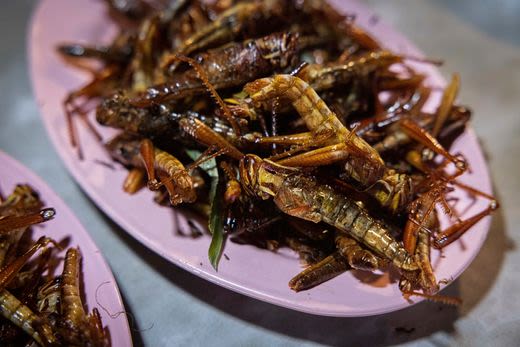
Srisuphun Srikhot tucks a bunch of banana leaves under her arm in the village of Ban Hai in eastern Thailand and throws it into the enclosure with the grasshoppers. They're always hungry, the farmer's wife says, as she adds a handful of Napier grass to provide the nutrients the animals need to grow quickly.
The grasshoppers are just 35 days old, but they are already quite fat and measure one and a half times the length of a thumb. They're packed together in two enclosures attached to bamboo poles, each about three square meters (32 square feet) in size. The harvest is in five days, says Srikhot, at the moment when the grasshoppers will bring in the most money. By harvest, she means that the living grasshoppers will be sorted, one by one, into small nets. The buyers are people from the village or merchants from the nearby food markets. Srikhot's daughter, meanwhile, is sitting outside their front door weighing grasshopper eggs. They are even more valuable than the grasshoppers themselves, Srikhot says.
One kilo of live grasshoppers goes for 400 Thai baht, the equivalent of about 10 euros. But a kilo of grasshopper eggs is worth 5,000 Thai baht, or 130 euros.
Srikhot, 59, has farmed this piece of land, surrounded by lush green rice fields, for decades. "I am so happy with my grasshoppers," she says. "They're more valuable than caviar."
The insect's rather short life can be divided into four stages: The larva hatches from the egg, becomes a pupa and then an adult. Grasshoppers can fly after about 10 days. And after sixty days, they are dead.
Insects and Isaan, a region in the northeast of Thailand, are closely linked. Locals – mostly farmers who cultivate the reddish-brown soil here, where pomelos, rice, manioc and sugar cane grow in abundance – have been eating them for centuries. Chicken or soy may be the most important source of protein elsewhere, but in this rather poor region, it comes from the scarab beetle, red ants and cicadas from January to April. Then, from May to August, the menu shifts to water bugs, grasshoppers and silk worms. From September to December, the main sources of protein are umbrella wasps, jewel beetles, bamboo worms and giant water bugs.
People collect insects in their yards, on trees, in fields, in the forest, buy them at markets and store them in the freezer. They fry, steam and boil larvae, eggs and freshly hatched baby bees. "Gaeng Kai Mot Daeng," a curry made from the eggs of red ants, is considered a springtime delicacy.
Eating insects is a form of nutrition that is deeply rooted in society's culture and, at the same time, offers a potential solution for the future. Universities and food laboratories are conducting research into food made from insect protein, entrepreneurs are investing in professional insect incubators for export, and scientists are hoping insects will provide a more climate-friendly and affordable alternative for feeding the global population in the future. A growing number of farmers in Isaan who used to grow rice and sugar cane are discovering insects as a lucrative source of income.
Asians are far less hesitant when it comes to developing alternative diets than Europeans, potentially a product of hunger being a major concern on the continent: More than 1 billion people in Asia didn't have access to enough food in 2021. Furthermore, farmers are feeling the effects of the climate crisis and the population of Asia, already home to 4.7 billion people, is forecast to grow by another 600 million over the next three decades. Might insects really the answer to all these problems?
A Family Business in Coconut Beetles
Srisuphun Srikhot has been running her farm for 20 years. She owns around eight hectares of land, including rice fields and rubber tree orchards, along with a few water buffalo. Agriculture has always yielded enough to live on, but Srikhot says the climate in the region has changed in recent years, and the rainy seasons have become harder to predict, which, in turn, makes harvests less reliable. Furthermore, she says, prices for rice had fallen significantly, while the cost of living had risen - leading her and her husband, both of whom are approaching retirement age, to rethink. "Every farmer here is struggling," she says. It's hard work, so why is there so little money left over?
Then they saw a video on YouTube of a Thai farmer who had switched to insects. Srikhot took notes on what he said and now, for the last few months, two grasshopper enclosures have been sitting in Srikhot's backyard. "It's a lot less work than before," she says, "and we earn more than we did from rice. The bugs grow quickly and easily, right at our doorstep. We get the feed from our fields and we don't have to buy anything extra. Our life is easier now," says Srikhot.
Sumalee Pinikarunat has also been a farmer her entire life, with her family producing manioc and sugar cane. She also remembers the declining incomes, expensive investments in fertilizers and pesticides and the hard work. Seven years ago, the family decided to change their business model.
They've been growing coconut beetles since then.
Boxes full of beetle eggs are stored in two covered garages, with the larvae growing in a substrate of crushed manioc and coconut fibers. Pinikarunat opens a lid. It smells sour and fermented. "Here's where you should see the larvae. Here they are, look," she says, pointing to a collection of whitish, wrinkled beetle larvae that are as thick as a finger.
The larvae are often prepared by steaming them in banana leaves, or they are fried. They are particularly popular in Laos and Vietnam, the markets the family exports them to. Once a month, a truck comes to pick up a ton of vacuum-packed beetle larvae for delivery to Vietnam. The family earns the equivalent of 4,600 euros for 1 metric ton. "It's a pretty good business," says Pinikarunat.
Six-Legged Creatures for the Masses?
Seventy percent of all animals on the planet are insects, and Southeast Asia has one of the largest populations of edible insects in the world, with almost 200 different species in Thailand alone. They provide valuable minerals, fats and vitamins, and some even contain twice as much protein as beef or chicken. But good arguments alone aren't enough to ensure a food product's success. It's a question of taste – and also imagination. Can food made from six-legged creatures become suitable for mass production?
At the Institute of Entomology at Khon Kaen University, which is pushing forward with research into edible insects in Thailand, students are experimenting with ways of producing food from insects that doesn't look like it comes from insects. They use them to bake CO₂-neutral chocolate brownies in seminars, or they learn how to mask the characteristic taste of beetles and the regulatory approval process that is required for such foods.
They meet up at the campus café, which is called the Insectarium, and discuss how to turn beetle breeding into a business model for the future. They learn that insects only require one-sixth of the amount of feed that cattle need to produce the same amount of protein. And that they emit fewer greenhouse gases and can be raised on organic waste. Many of the students grew up in the region and come from farming families - and say they want to stay in Isaan and that they want to be independent, but are looking for an alternative to their parents' hard and often insecure line of work. They're hoping for a boom in insect farming.
Hidden Insects
Some time ago, the Food and Agriculture Organization of the United Nations recognized Thailand as "one of the few countries in the world to have developed a viable and thriving insect farming sector." Farmers in Thailand are already earning 19 million euros a year from the animals, and according to a recent study, the market for edible insects in the Asia-Pacific region as a whole is set to grow by a further 250 million euros by next year. But it has yet to take off as a global food trend. What would it take to change that?
The Pilot Project Laboratory in Ubon, a city in the far east of Isaan province, not far from the border with Laos, is open to anyone with a business idea for edible insects. The laboratory is affiliated with the local university and is co-financed with taxpayer money. Start-ups and farmers in the area can book appointments in the laboratory kitchen.
"People usually have a rather vague idea of what they want to produce: Sausages made from silkworms. Pasta and cookies made from beetles," says Anuaek Prasandee, a food engineer who works there. "It's all about trying, testing and planning a business model." The sales argument for food made from insects is hard to beat: It's "environmentally friendly and healthy." But he's also not entirely uncritical: "How do we get the products to the supermarket?"
The less people know about the insect content, he says, the more promise the product will have. In other words, the insects must be hidden, in the form of things like protein powder and food supplements. He believes the fitness sector, where sales are booming for protein shakes for building muscle, could be a promising market. Many have so far been manufactured using chicken protein, and the taste of these "strawberry chicken protein drinks" takes some getting used to. "We can give the drinks a more neutral flavor with insect protein," says Prasandee.
He believes that a lot will change over the next 10 years, and that consumers will slowly get used to insects. Even in Europe, where the European Food Safety Authority approved mealworms, darkling beetles and the house cricket for consumption a few years ago. It's quite possible that many more insects will follow.
Yeri: https://www.spiegel.de/international/the-food-of-the-future-grasshoppers-are-more-valuable-than-caviar-a-d34a9baf-4c91-45ac-8998-2aba6fa11cae
*********************************************
*********************************************
Preparing for a Changing Climate
Copenhagen's Far-Reaching Transformation into a "Sponge City"
As the climate warms, Copenhagen is likely to see more torrential rain storms like the one that inundated the city in 2011. Since then, the Danish capital has taken action, redesigning parks and streets to quickly drain away vast amounts of water.
By Jan Petter and Charlotte de la Fuente (Photos) in Copenhagen
14.09.2023, 16.12 Uhr

It’s shortly after 1 p.m. on a gray, Wednesday afternoon as Ditte Juul Sørensen, standing in a park in southern Copenhagen, talks about how she intends to flood the dog park should it become necessary. The green area used to consist merely of a sodden meadow, a decrepit playground and a couple of dirt paths. But over the last seven years, the 46-year-old landscape architect has completely transformed it.
Today, it marks the end of an invisible river that winds its way through Copenhagen, designed to save the city in the event of torrential rainfall.
"The meadow will collect the water," says Sørensen, "and this artificially created riverbed will lead it onward." She points to a red-and-yellow paved pathway leading back to the petting zoo. In total, the invisible catchment area can hold 15,000 cubic meters of water, roughly the equivalent of 83,000 bathtubs filled to the brim.
The park is one of the endpoints of an extensive network of above-ground and underground canals, green spaces, specially adapted roads and catchment ponds. The Skybrudsplan, or Cloudburst Management Plan, cost 1.8 billion euros and it is designed to protect the city from episodes of severe rainfall for the next 100 years.
Extreme weather events struck all over Europe this summer, and they are likely to become even more common in the future as global warming advances. Some parts of the continent had to face heatwaves, fires and drought, others were struck by unpredictable storms. The Danish capital, for its part, is among those places threatened by torrential rains and flooding. In July, Denmark saw twice as much rain as normal – more than ever seen for the month in the last 149 years.
For many, it was reminiscent of 2011, the year the city went through something of a collective trauma, a moment of chaos that can be seen in hindsight as a wake-up call. On the evening of July 2 that year, two-months worth of rain poured out of the sky within just a few hours. Tens of thousands of people found themselves without power, the university hospital’s trauma center had to be evacuated, parts of the historic citadel even collapsed and broken district heating pipes resulted in a number of scalding victims. The police department’s telephone system was out of order for three days, while the World Health Organization had to close down its European headquarters and the Tivoli Gardens amusement park was evacuated.
Afterwards, dead rats floated through the streets. According to one study, 22 percent of workers surveyed fell ill during the weeks of cleanup that followed. One man even died of an infection. Prisoners had to be fed with McDonald’s food because the kitchens were destroyed. In Copenhagen alone, the damage was estimated at 800 million euros.
The city reacted with resolve. Not even a year passed before Copenhagen passed its first Skybrudsplan. Since then, the concept has been further developed each year, with construction planned to continue until at least 2035.
Jan Rasmussen, a 61-year-old who has worked for the city as an engineer since 1990, is one of the authors of the plan. He has spent his entire life focusing on water, with the first 20 years of his career dedicated to making it cleaner. Together with water utility staff, he ensured that the once murky waters of the harbor ultimately became clean enough for swimming. "I didn’t even think myself that we’d be able to do it," Rasmussen says.
Today, he's fighting to keep it that way. When too much water falls from the sky in a short amount of time, even the best drainage systems are overwhelmed. Sewage treatment plants and waste pipes are flooded, as are basements. In a densely populated city, there are very few natural pathways for the water to escape, and so it follows the course of least resistance, forcing its way through the city in a muddy, filthy current. "You have to slow it down and guide it so it doesn’t cause any damage," says Rasmussen.
Following the 2011 storm, he joined other experts in producing a map of rainwater flows. They documented rises and depressions while also including sealed surfaces, roofs and green areas. They used the map to highlight the corridors the water would take and where it would run up against obstacles.
Ultimately, the city was faced with three choices. The first was to do nothing at all. On the basis of the IPCC climate report, Rasmussen and his team calculated the costs of inaction to be more than 2 billion euros in the next 100 years – more of a thought experiment than a real option. The second choice was to follow the classic playbook of installing more drainpipes and cisterns.
The third option was more novel and rather unusual, but it looked to be by far the most efficient course of action. It involved developing a model for the city made up of a mixture of an underground network of facilities for draining and collecting water, parks to serve as backup catchment capacity and streets able to act as rivers in periods of intense rain. "We are building this because it makes more sense. The Skybrudsplan can do more and costs less," Rasmussen believes. The vision calls for Copenhagen to become a city that can absorb water and release it slowly despite urban density.
"We Are Pioneers"
The "sponge city" concept is not unique to Denmark, and rapidly growing Chinese metropolises, in particular, have adopted elements of the idea. But nowhere has it been as sweepingly deployed as in Copenhagen. Fully 350 individual projects are part of the plan. "We really didn’t have any role models we could follow in the world," says Rasmussen. "We are pioneers."
Only a small number of the projects have been financed by taxpayer money, with most funding being collected by the water utility through a levy on households and companies. Rasmussen believes that such a financing model, which is directly linked to consumption, is the easiest and fairest solution. For a four-person household, water fees rose by around 120 euros ($128) per year. "If you consider the risks posed by climate change, such costs are justifiable," the engineer says.
Following the 2011 flooding, many insurance companies threatened to cancel policies and a number of businesses began talking about leaving the city. "Even a UN organization told us that Copenhagen was a risk as a location," Rasmussen says.
The engineer believes he will be working on implementing the Skybrudsplan until his retirement a few years from now. His maps have now grown to include larger arterials that can handle significant quantities of water, parking lots where it can slowly drain away and side streets to take care of everything that streams down from the rooftops.
"Of Course There Was Disagreement"
Ditte Juul Sørensen, the project manager and landscape architect – one of 11 that Copenhagen hired for the Skybrudsplan – leads the way to a strip of green. The site on Scandiagade Street is so small that it isn’t even included on Google Maps as a park. Seven concrete basins have been installed here, but they are hardly visible at first glance. There is a butterfly garden, vegetable beds, benches and even a hammock. A brightly painted walkway leads from one basin to the next. It is a perfect example of the city wanting to use the Skybrudsplan to improve the quality of life for city residents.
"The project team asked the people here what they wanted," says Sørensen – and the consensus was more color and more nature. So the vacant strip of land was transformed into a city garden. Only the last basin, at the very end, has a bit of rainwater in it at the moment, and the ground is damp. The road running along the green strip was adjusted slightly so that water can run off into the basins during heavy rainfall. From the basins, the water can either percolate into the ground or be guided through underground channels to the harbor.
"Public participation has ensured that the majority are supportive of the project," says Sørensen. And that’s not the only reason they sought input from locals: The gardens, it is hoped, will encourage residents to maintain the property and ensure that the basins don’t become filled with trash.
Still, one wonders how it has been possible for Copenhagen to revamp parks and roads for flood protection with relatively little protest when a city like Berlin can’t even build 500 meters of bike paths without a major uprising.
"Of course, there was disagreement," admits Sørensen. And discussions didn’t always go as well as they did for the Scandiagade Street project. In the neighborhood surrounding the Karens Minde Kulturhus cultural center, residents were initially less than ecstatic about plans to transform their park into a catchment basin for the rest of the city. She says she held regular meetings with neighbors for three years, telling them that the lindens and poplars, which are under protection, wouldn’t be touched. In the end, locals were able to choose the paving stones and benches for the park, but the plan itself was never up for debate. "We all have a shared responsibility," says Sørensen.
And some of the projects are so inconspicuous that nobody notices them anyway. Further north in Enghavepark, for example, a new space for inline-skate hockey has been installed, surrounded by a low, concrete wall. Members of the pétanque club next door use the wall for sitting or to set down their wineglasses. They are surprised to learn what the wall’s true function is, saying they never would have guessed that the space is intended as a basin for collecting rainwater.
Everyone in the group still has clear memories of the 2011 catastrophe – of mud-covered wedding dresses and destroyed furniture. "It is absolutely the right decision for the city to do this," says Rasmus Lütken, an artist and architect who is part of the pétanque group. For him, he says, the biggest question is whether the plan goes far enough or whether more might be necessary. "Plus,” he says with a grin, "it looks pretty good."
Yeri: https://www.spiegel.de/international/europe/copenhagen-s-far-reaching-transformation-into-a-sponge-city-a-7a741ca6-edf9-437b-bf02-3d70ea4004f1
*********************************************
*********************************************
Beş Duyu Söyleminden Vazgeçin! Hafife Aldığımız Başka Duyularımız da Var
Yazı: Sibel Çağlar
11/07/2020- Son güncelleme: 13/11/2023

Duyularımız bir insanı benzersiz kılan, bizi insan yapan şeylerin başında gelir. Ancak duyularımız sorulduğu zaman bir çok insanın aklına sadece beş duyu gelecektir. Bu beş duyu görme, koklama, işitme, dokunma ve tat alma olma biçimindedir.
Sadece beş duyumuz olduğu fikri tüm kültürlerde yer alır. Üstelik sadece günlük konuşmalarda değil, bilimsel bağlamlarda da bazen ortaya çıkar.
İnsanda beş duyu olduğu fikri muhtemel Aristoteles’in her duyuya bir bölüm ayırdığı De Anima (Ruh Üzerine) adlı kitabına dayanır. Ancak o günden bugüne çok şey değişti. Kimi ders kitabında hala beş duyumuz olduğu yazsa da bilim insanları bu konuda artık aynı fikirde değiller. Onlar bu sayının beşten çok daha fazla olduğunu söylüyorlar. Aslına bakarsanız bu konuda tam bir karara bile varamıyorlar.
Beş temel insan duyusu vardır: dokunma, görme, duyma, koklama ve tatma. Her duyuyla ilişkili duyu organları, etrafımızdaki dünyayı anlamamıza ve algılamamıza yardımcı olmak için beyne bilgi gönderir. Ancak aslında temel beş duyuya ek olarak başka insan duyuları da vardır.
Basit bir tanımla duyu, beynimizin bilgi toplamak için dış dünyaya açılan kanallar olarak kullandığı bir sistemdir. Ama tanımımız buysa duyularımızın sayısının beşle sınırlı olmadığı sonucuna ulaşıyoruz. Örneğin görme duyumuzu ele alalım; parlaklık, renk ve derinliği algılama duyularının her biri farklı şekillerde çalışıyor.
Tat alma duyusunu da belirli alt kategorilere ayırmak mümkündür. Normalde bildiğimiz dört ana tat vardır: tatlı, ekşi, tuzlu ve acı. Ancak son yıllarda umami olarak bilinen ( Umami, glutamatın Japoncasıdır.) beşinci bir tat bu gruba eklenmiştir. Yani temelinde bunlarda farklı duyular olarak kabul ediliyor. Ama bu alt grupların haricinde listeye yeni eklenenler de var. Bu yazıda az bilinen bir kaç duyumuzu öğrenelim.
Propriyosepsiyon Duyusu: Fiziksel Farkındalık
Gözlerinizi kapatın ve ardından sağ işaret parmağınızla sol dirseğinizin ucuna dokunun. Muhtemelen bunu kolayca yapmış olmalısınız. Ama nasıl? Bir şekilde parmağınızın ucunun nerede olduğunu ve sol dirseğinizin konumunu da biliyordunuz. İşte bu duyu propriosepsiyon olarak bilinmektedir.
Bu duyu vücudumuzun her bir bölümünün uzayda nerede olduğuna dair sahip olduğumuz farkındalıktır. Böyle bir duyuya sahip olmasaydık yürürken kontrolü kaybetmemek için sürekli ayaklarımızı izlemek zorunda kalırdık. Propriosepsiyon duyusu sayesinde uzuvlarınızın hareketini her zaman yakından gözlemlemeden merdivenleri tırmanabilir, yolda yürüyebilir, klavyenizde yazabilir ve bisiklet sürebilirsiniz.
Bir araştırmada, araştırmacılar PIEZO2 geninde belirli bir mutasyona sahip olan kişilerin zayıf bir propriosepsiyon duygusuna sahip olduklarını keşfettiler. Sonucunda da bu kişiler daha beceriksiz ve daha az koordine olma eğilimindeydiler.
Denge Duyusu (Equilibrioception)
Denge duygusu, insanların inanılmaz fiziksel yetenekler göstermesini sağlar.
Sadece vücudumuzun uzayda nerede olduğunu bilmek yetmez. Aynı zamanda onu dik de tutmak gerekir. Bunun için de denge duyusuna ihtiyacımız var. Bu duyu hareket esnasında denge ve uzaysal oryantasyonu korumamızı sağlıyor.
Bir çoğumuzun deneyimlediği gibi kendi etrafımızda bir süre döndükten sonra ayakta durmakta zorlanırız. Kendimize gelmemiz için de bir iki dakika beklememiz gerekir. Bu durumun sorumlusu, iç kulakta bulunan ve işitme sisteminin bir parçası olan vestibüler sistemdir.
İç kulakta bulunan vestibüler sistem vücudumuzun dengesini korumaktan sorumludur. Vücudumuz bu sistem sayesinde kafamızın dik mi, yatay mı, hareket ediyor mu yoksa duruyor mu olduğunu algılar.
Burada oluşan sinyaller, göz hareketlerini kontrol eden nöral yapıya ve dik duruşu sağlayan kaslara iletiliyor. Vestibüler sistem bize hızı hissetme yeteneği de veriyor. Bu sayede, başınızı sağa veya sola yatırırsanız bile, gözleriniz hala bu sayfaya odaklanabiliyor ve kelimeleri okuyabiliyor.
Bazı kişileri araba tutmasının sorumlusu da yine bu sistem. Araba yolculuğu yaptığınızı düşünün. Camdan dışarıya baktığınızda akan giden görüntüler nedeniyle, gözleriniz beyninize hızlı hareket edildiğine dair bir sinyal gönderiyor. Vestibüler sisteminiz ise vücudunuzun sabit olduğunu söylüyor. Beynin görüş alan sinyalleri ile vestibüler sistem uyuşmadığında, bazı insanlar bulantı hissedebiliyor. Biraz daha fazla detay isterseniz: Baş Dönmesi Neden Olur? Balerinlerin Neden Başı Dönmez?
Sıcaklık Algısı (Thermoception)
Sıcaklık algısı kişiden kişiye değişiklik gösterir.
Dışarıda havanın sıcak veya soğuk olup olmadığını nasıl anlayabildiğinizi hiç düşündünüz mü? Sıcakkanlı hayvanlar olduğumuz için sıcaklık hissi hayatta kalmamız için çok önemlidir. Bir insanın çevresindeki sıcaklığı veya soğuğu algılama yeteneğine sıcaklık algısı denir.
Sıcaklık algısı, beynin iki farklı bölümü tarafından kontrol edilir. Yani sanılanın aksine fiziksel dokunma reseptörleriyle ilgisi yoktur. Ayrıca vücut içi sıcaklığını kontrol etmeye de yardımcı olur. Sıcaklık algısı, hayatta kalma için büyük önem taşır çünkü yanma veya donma gibi durumlardan bizi korur. Çok sıcak veya soğuk ortamlardan kaçınmamıza neden olur.
Zaman Algısı (Chronoception)
Zaman algısı; bir zaman diliminin diğer zaman dilimleriyle karşılaştırılmasıyla ortaya çıkar. Bir olay gerçekleşir ve bir süre sonra biter. Daha sonra bir başka olay meydana gelir. Bu iki olay ve zaman dilimleri arasındaki farka zaman denir.
Zaman algısı öznel bir durumdur. Kimisi için geçmek bilmezken, kimisi için de bir çırpıda tükenir. Bu nedenle zaman algısını hem fiziksel hem de psikolojik olarak ele alınır. Ancak zamanı hissedebildiğiniz için dışarı çıkmadan öğlen, gece veya gündüz olduğunu anlayabilirsiniz. ( Detaylar burada: Zaman Neden Bazen Hızlı Bazen de Yavaş Geçer? Cevap Kalp Atışımızda Saklı Olabilir)
Sonuç Olarak;
Gördüğünüz gibi, duyuları tanımlamanın tek ve mantıklı bir yolu yoktur. Bazı yönlerden, çoğu zaman birbirine karışıyor gibi göründükleri için, aralarında ayrım yapmak kolay değildir. Dokunma duyusunu ele alalım. Gözünüz kapalıyken sırtınıza birisi buz atarsa küçük çaplı bir şok yaşayabilirsiniz. Bu his, basit bir dokunmadan farklıdır. Ayrıca kaşıntı da, kimi bilim insanları tarafından, farklı bir dokunma duyusu olarak kabul edilmektedir.
Üstelik yazımız dahilinde size bir kaç tane örnek versek de bilmediğimiz duyularımız okuduklarınızdan çok daha fazladır. Nosisepsiyon (ağrıyı algılama yeteneği) ve kas gerginliği hissi gibi duyularımız da insan biyolojisinin bir parçasıdır. Ayrıca vücudumuzun iç durumu hakkında bize bilgi sağlayan çok sayıda duyu vardır. Bunların en belirgin olanları, açlık ve susuzluk, iç vücut ağrısı ve mesaneyi veya bağırsağı boşaltma ihtiyacıdır.
Kaynaklar ve İleri Okumalar:
Psychology: How many senses do we have?;Yayınlanma tarihi: 19 Kasım 2014; Bağlantı: https://www.bbc.com
Humans have more than 5 senses; Yayınlanma tarihi: 9 Ocak 2017; Bağlantı: Bağlantı: https://www.weforum.org
Think you have only 5 senses? You’ve actually got about 14 to 20; Yayınlanma tarihi: 2 Mayıs 2018; Bağlantı: Think you have only 5 senses? You’ve actually got about 14 to 20/
----------
Size Bir Mesajımız Var!
Matematiksel, 2015 yılından beri yayında olan ve Türkiye’de matematiğe karşı duyulan önyargıyı azaltmak ve ilgiyi arttırmak amacıyla kurulmuş bir platformdur. Sitemizde, öncelikli olarak matematik ile ilgili yazılar yer almaktadır. Ancak bilimin bütünsel yapısı itibari ile diğer bilim dalları ile ilgili konular da ilerleyen yıllarda sitemize dahil edilmiştir. Bu sitenin tek kazancı sizlere göstermek zorunda kaldığımız reklamlardır. Yüksek okunurluk düzeyine sahip bir web sitesi barındırmak ne yazık ki günümüzde oldukça masraflıdır. Bu konuda bizi anlayacağınızı umuyoruz. Ayrıca yazımızı paylaşarak veya Patreon üzerinden ufak bir bağış yaparak da büyümemize destek olabilirsiniz. Matematik ile kalalım, bilim ile kalalım.
Matematiksel
Yeri: https://www.matematiksel.org/bes-duyu-soyleminden-vazgecin/
*********************************************
*********************************************
Avcı Erkek Toplayıcı Kadın Mitini Unutun! Kadınlar da Avcılık Yapıyordu
Yazı: Sibel Çağlar
02/08/2023 - Son güncelleme: 19/11/2023

Tarih öncesi dönemde yaşayan insanları düşündüğümüzde, erkekleri avcı kadınları ise toplayıcı olarak kategorize etmeye eğilimliyiz. Oysa ki son bulgular, bu fikrin tamamen yanlış olduğunu ortaya koyuyor.
İnsanlık tarihinin en büyük sıçramalarından birisi, ateşin kontrol altına alınarak kullanılmasıyla gerçekleşmiştir. İnsanların ateşi ne zaman ve hangi süreçlerden geçerek kullandığını, ateşi nasıl denetim altına aldığını ya da çakmaktaşını birbirine sürterek ateş yakmayı nasıl başardığını tam olarak bilmiyoruz. Ancak kesin olan bir şey var ki, ateş beslenme biçimimizi de değiştirdi.
Besinlerin kimyasını değiştiren ateş, hem onların daha lezzetli ve kolay tüketilebilir olmasını, hem de parazit ve mikroplardan arınmasını sağladı. İnsanlar ateş sayesinde zorlu ve uzun süren çiğneme zahmetinden de kurtuldu. Böylece hem diş ve çene yapısı küçüldü, hem de sindirim organları oldukça kısaldı.
Ateşin kontrol altına alınması, insanın insan olma serüveninde önemli bir kilometre taşıydı. Ateşin kullanımıyla birlikte insan, zorunlu olarak tabi olduğu karanlık anları aydınlığa çevirdi. Ateş sadece mağara ve oyukları aydınlatmadı, hem insanların kendilerini yırtıcı hayvanların saldırılarından korumalarını sağladı.
Ateş aynı zamanda insanların av aletleri yapmasını da sağladı. Mızrak ve balta sapları, ateş sayesinde sertleştirildi. Aynı şekilde taş parçalarının kolay işlenmesi de ateş sayesinde mümkün oldu. Peki avı kim yapıyordu? Cevabınız muhtemelen erkekler biçiminde olacaktır.
Erkeklerin avlandığı, kadınların yiyecek arayıp çocuklara baktığı paradigma kültürümüze derinden yerleşmiştir....
.
.
.
TEKNİK OLARAK SAYFA BURAYA KADAR ALIYOR. DEVAMI İÇİN: Yeri: https://www.matematiksel.org/avci-erkek-toplayici-kadin-mitini-unutun-kadinlar-da-avcilik-yapiyordu/
[Edited at 2023-12-01 21:18 GMT] ▲ Collapse
| | | | | Pages in topic: < [1 2 3 4 5 6 7 8 9 10 11 12 13 14 15 16 17 18 19 20 21] > | To report site rules violations or get help, contact a site moderator: You can also contact site staff by submitting a support request » İlginç yazılar No recent translation news about Türkiye. |
| TM-Town | Manage your TMs and Terms ... and boost your translation business
Are you ready for something fresh in the industry? TM-Town is a unique new site for you -- the freelance translator -- to store, manage and share translation memories (TMs) and glossaries...and potentially meet new clients on the basis of your prior work.
More info » |
| | Protemos translation business management system | Create your account in minutes, and start working! 3-month trial for agencies, and free for freelancers!
The system lets you keep client/vendor database, with contacts and rates, manage projects and assign jobs to vendors, issue invoices, track payments, store and manage project files, generate business reports on turnover profit per client/manager etc.
More info » |
|
| | | | X Sign in to your ProZ.com account... | | | | | |